
CSA BOX CONTENTS WEEK OF JAN 2ND
01/03/17 — Scott
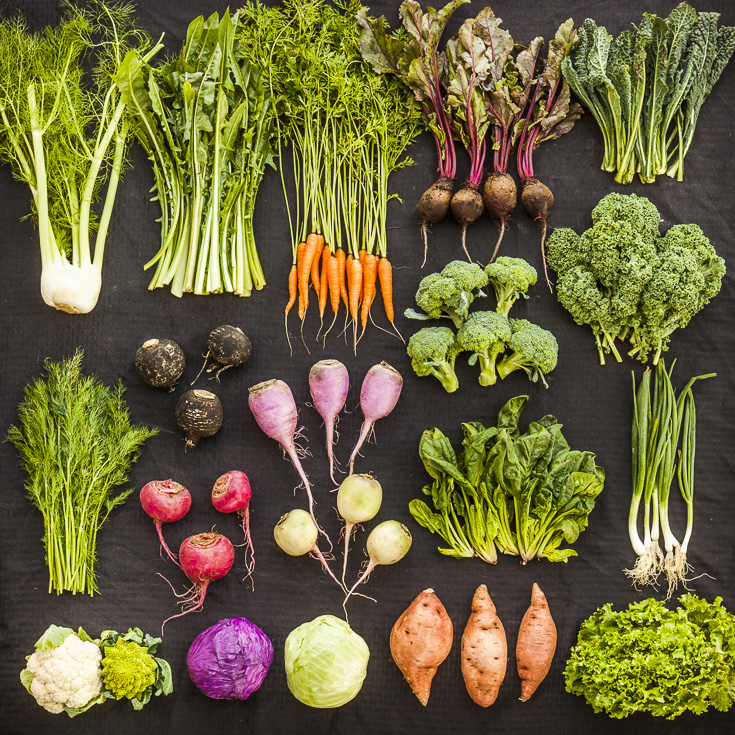 CSA Box Contents Week of Jan 2nd
CSA Box Contents Week of Jan 2nd
Large Box
Beet, Golden
Broccoli
Cabbage, Napa
Carrot, Orange
Greens, Dandelion
Greens, Kale, Curly
Greens, Salad Mix
Herb, Fennel
Herb, Parsley, Flat
Onion, Green
Potato, Sweet
Radish, Red
Turnip, Scarlett
Beet, Golden
Broccoli
Cabbage, Napa
Carrot, Orange
Greens, Dandelion
Greens, Kale, Curly
Greens, Salad Mix
Herb, Fennel
Herb, Parsley, Flat
Onion, Green
Potato, Sweet
Radish, Red
Turnip, Scarlett
Medium Box
Beet, Red
Broccoli
Cabbage, Green
Carrot, Orange
Greens, Collards
Greens, Spinach
Herb, Parsley, Flat
Lettuce, Mixed head bag
Onion, Green
Potato, Sweet
Turnip, Scarlett
Beet, Red
Broccoli
Cabbage, Green
Carrot, Orange
Greens, Collards
Greens, Spinach
Herb, Parsley, Flat
Lettuce, Mixed head bag
Onion, Green
Potato, Sweet
Turnip, Scarlett
Small Box
Cabbage, Green
Carrot, Rainbow
Greens, Kale, Curly
Greens, Spinach
Herb, Dill
Lettuce, Mixed head bag
Pea Tendrils
Radish, Watermelon
Cabbage, Green
Carrot, Rainbow
Greens, Kale, Curly
Greens, Spinach
Herb, Dill
Lettuce, Mixed head bag
Pea Tendrils
Radish, Watermelon
Individual Box
Cabbage, Green
Carrot, Rainbow
Greens, Kale, Dino
Greens, Spinach
Herb, Fennel
Radish, Watermelon
Cabbage, Green
Carrot, Rainbow
Greens, Kale, Dino
Greens, Spinach
Herb, Fennel
Radish, Watermelon
CSA BOX CONTENTS WEEK OF JAN 2ND
01/03/17 — Scott
 CSA Box Contents Week of Jan 2nd
CSA Box Contents Week of Jan 2nd
Medium Box
Beet, Red
Cabbage, Green
Carrot, Orange
Greens, Kale, Curly
Greens, Spinach
Herb, Dill
Lettuce, Mixed head bag
Potato, Sweet
Radish, Watermelon
Turnip, Scarlett
PORK CHOPS WITH BUTTERNUT SQUASH AND SAGE + BONUS!
01/04/17 — Heydon Hatcher
by Megan Winfrey
Happy New Year, all! I hope everyone had fantastic, meaningful celebrations and that you all got your black eyed peas and collard greens! 2017 is looking like it's going to be a transitional year on many levels, but knowing I can count on local, organic produce every week is such a relief. Although this year holds many uncertainties, I think we can all agree that clean eating is of utmost importance- and at least we can say we've got that covered. Here's to a year of home cooked meals, expanding your palate, and spreading the word about our favorite local CSA!
Pork Chops with Butternut Squash and Sage
Preheat the oven to 425.
In a small saucepan, combine 1/2 cup water, 2 tbs. salt, 1 tbs. brown sugar, and 4 sage leaves.
Cook, stirring, over medium high until the salt and sugar has dissolved. Pour the mixture into a large bowl and add 5 cups of cold water. Submerge the pork chops in the brine and refrigerate for 10 minutes.
Chop 3 sage leaves and set aside. Stack the remaining sage leaves on top of one another, roll up, and cut into ribbons. Toss with the squash, 2 tbs. olive oil, nutmeg, and 1/2 tsp. salt. Spread on a baking sheet and roast until tender, 25-30 minutes.
Heat the remaining 1 tbs. of olive oil in a skillet over medium high, drain the pork chops, and pat them dry. Cook the pork chops for 5-7 minutes on each side, until cooked through, then divide onto four plates.
To the hot skillet, add the chicken broth and the remaining 1 tbs. of brown sugar. Simmer, while stirring, until reduced by half- about 3 minutes. Remove from the heat and add the lemon juice and reserved chopped sage. Add salt to taste. Plate the squash and drizzle the sauce all over everything. Serve immediately.
![img_4421]()
**BONUS RECIPE** A magical elixir came into my life recently that I just had to share. I've had a horrible cold for the last week - hacking cough, sneezing, runny nose, sinus headaches - and I know I'm not alone. A friend suggested I try turmeric milk, and I swear that I felt better after the first sip! Two cups later and my symptoms are indeed, less intense. Turmeric has antibacterial and antimicrobial properties and has been used as medicine for centuries.
Turmeric Milk
Bring all ingredients to a boil in a small saucepan, lower the heat and simmer for 10 minutes.
Add 1 tbs. honey, if desired.
Enjoy the deliciousness, and feel better.
![img_4495]()
Happy New Year, all! I hope everyone had fantastic, meaningful celebrations and that you all got your black eyed peas and collard greens! 2017 is looking like it's going to be a transitional year on many levels, but knowing I can count on local, organic produce every week is such a relief. Although this year holds many uncertainties, I think we can all agree that clean eating is of utmost importance- and at least we can say we've got that covered. Here's to a year of home cooked meals, expanding your palate, and spreading the word about our favorite local CSA!
Pork Chops with Butternut Squash and Sage
- 4 pork chops, bone-in or boneless
- 2 tbs. brown sugar
- 12 fresh sage leaves
- kosher salt
- 2 butternut squash, peeled, halved, and sliced into crescents
- 3 tbs. olive oil
- 1/4 tsp. freshly grated nutmeg
- 3/4 cup chicken broth
- 1/2 lemon, juiced
Preheat the oven to 425.
In a small saucepan, combine 1/2 cup water, 2 tbs. salt, 1 tbs. brown sugar, and 4 sage leaves.
Cook, stirring, over medium high until the salt and sugar has dissolved. Pour the mixture into a large bowl and add 5 cups of cold water. Submerge the pork chops in the brine and refrigerate for 10 minutes.
Chop 3 sage leaves and set aside. Stack the remaining sage leaves on top of one another, roll up, and cut into ribbons. Toss with the squash, 2 tbs. olive oil, nutmeg, and 1/2 tsp. salt. Spread on a baking sheet and roast until tender, 25-30 minutes.
Heat the remaining 1 tbs. of olive oil in a skillet over medium high, drain the pork chops, and pat them dry. Cook the pork chops for 5-7 minutes on each side, until cooked through, then divide onto four plates.
To the hot skillet, add the chicken broth and the remaining 1 tbs. of brown sugar. Simmer, while stirring, until reduced by half- about 3 minutes. Remove from the heat and add the lemon juice and reserved chopped sage. Add salt to taste. Plate the squash and drizzle the sauce all over everything. Serve immediately.
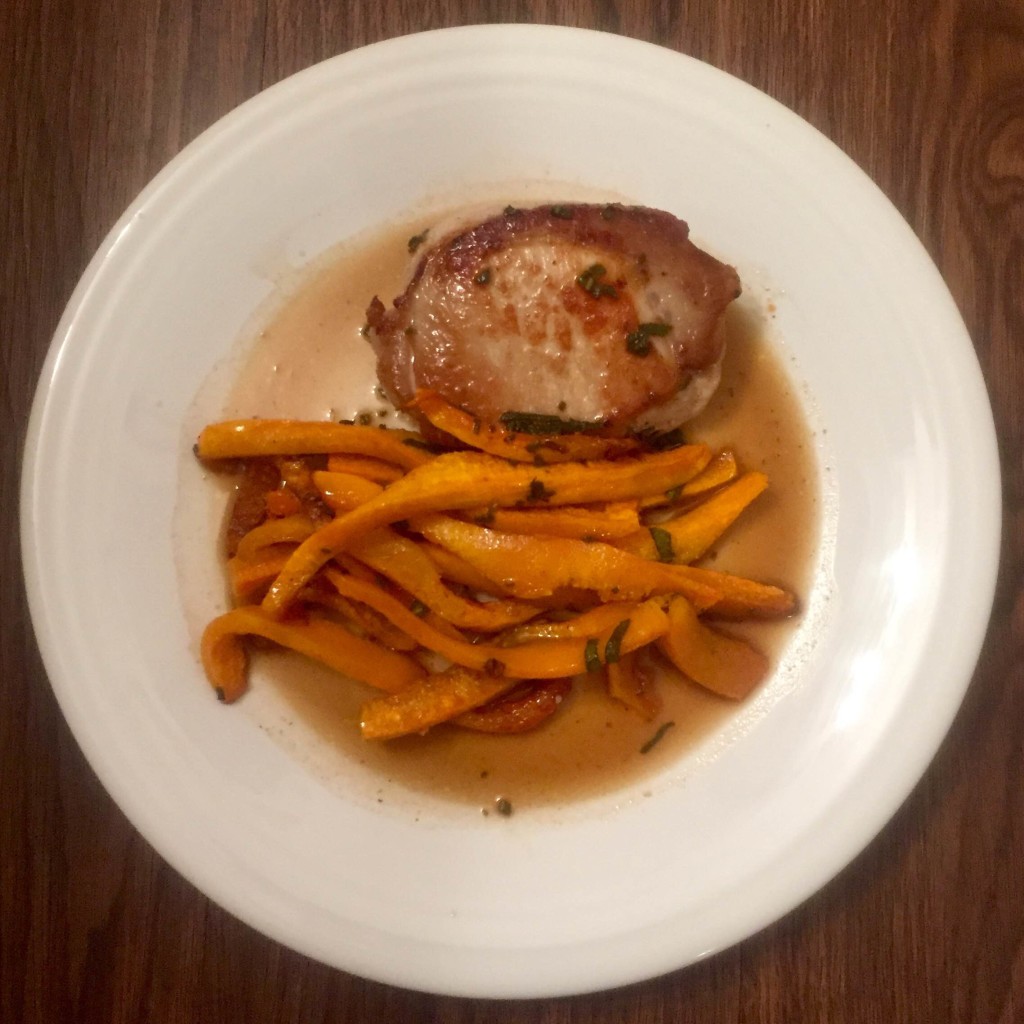
**BONUS RECIPE** A magical elixir came into my life recently that I just had to share. I've had a horrible cold for the last week - hacking cough, sneezing, runny nose, sinus headaches - and I know I'm not alone. A friend suggested I try turmeric milk, and I swear that I felt better after the first sip! Two cups later and my symptoms are indeed, less intense. Turmeric has antibacterial and antimicrobial properties and has been used as medicine for centuries.
Turmeric Milk
- 2 cups whole or almond milk
- 1 tbs. coconut oil
- 1 tsp. turmeric powder
- 1 cinnamon stick
- 1 small pinch fresh grated ginger
Bring all ingredients to a boil in a small saucepan, lower the heat and simmer for 10 minutes.
Add 1 tbs. honey, if desired.
Enjoy the deliciousness, and feel better.
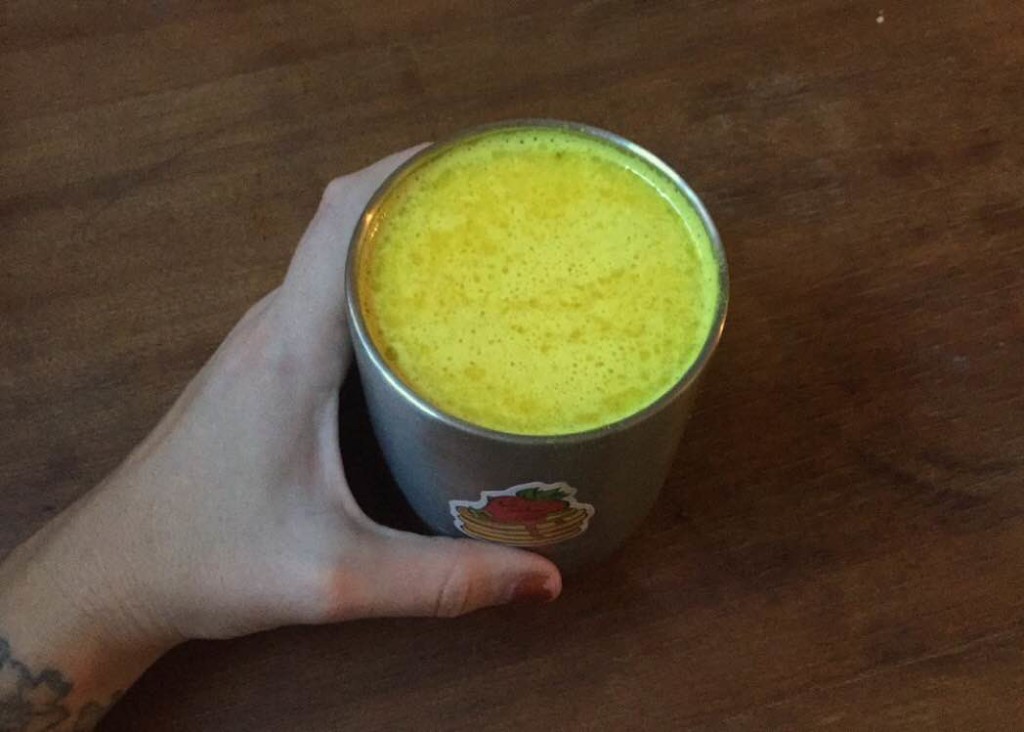
WEEK 1 IN PHOTOS
01/06/17 — Heydon Hatcher
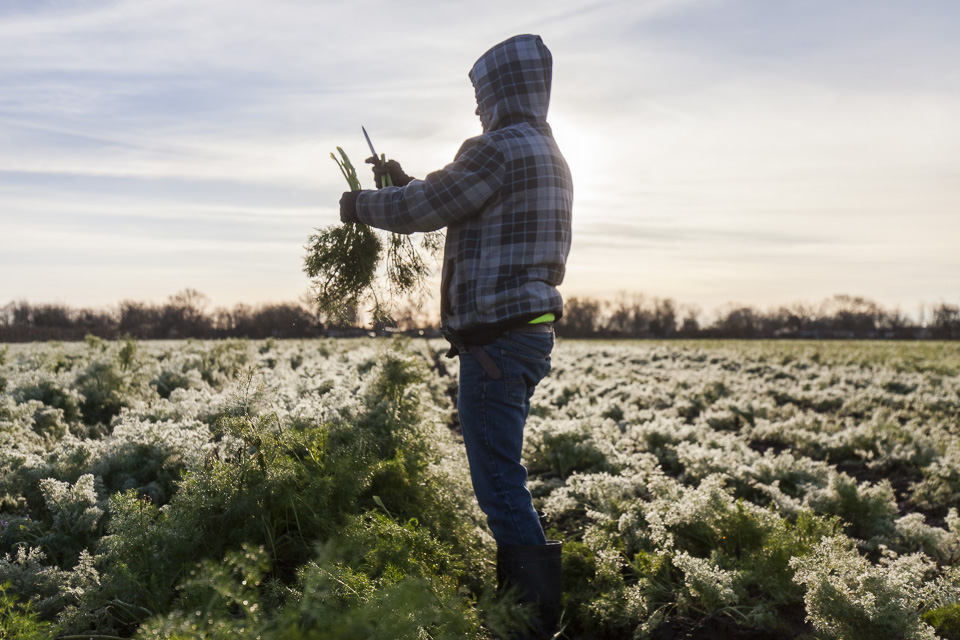
Happy New Year! With the advent of 2017, comes a deluge of resolutions (hopefully healthy and attainable ones!) and a collective sigh of relief (maybe?) with the long-awaited exit of a grueling 2016. A new year provides us with a multitude of new opportunities and a plethora of possibilities, plus, a blank canvas to create something new. Let's all set intentions to thrive in what is sure to be a great year.
With our first week in the books, we are ecstatic to start our year-long photo stream anew! Here's to a farm-fresh 2017!
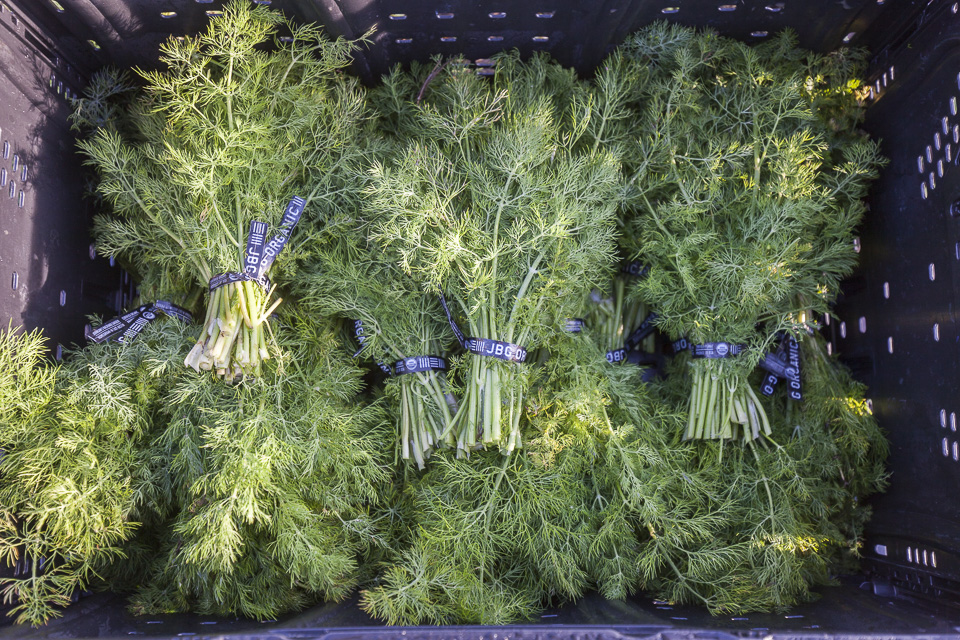 Dill. Photo by Scott David Gordon.
Dill. Photo by Scott David Gordon.
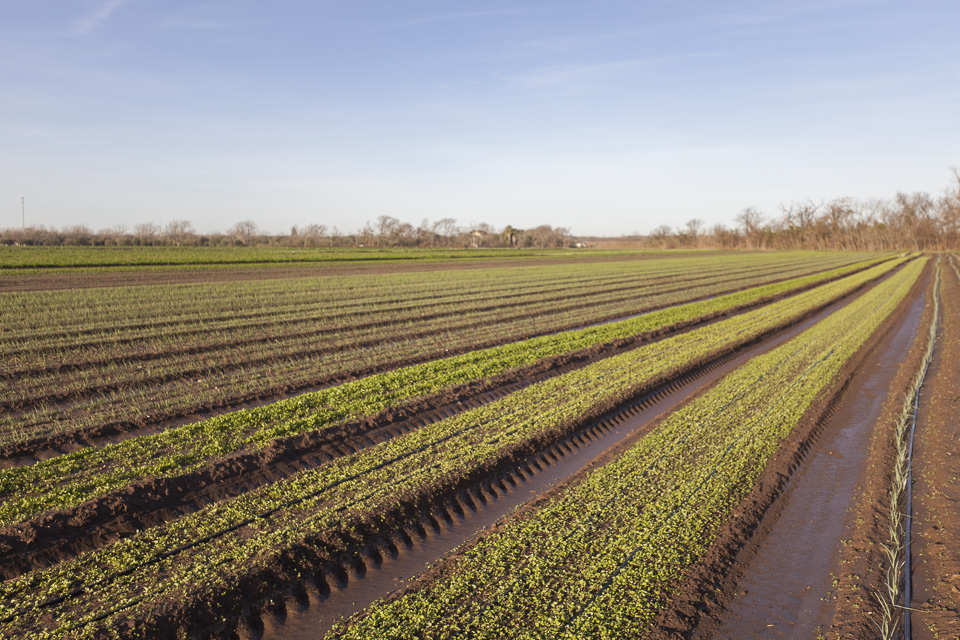 Photo by Scott David Gordon.
Photo by Scott David Gordon.
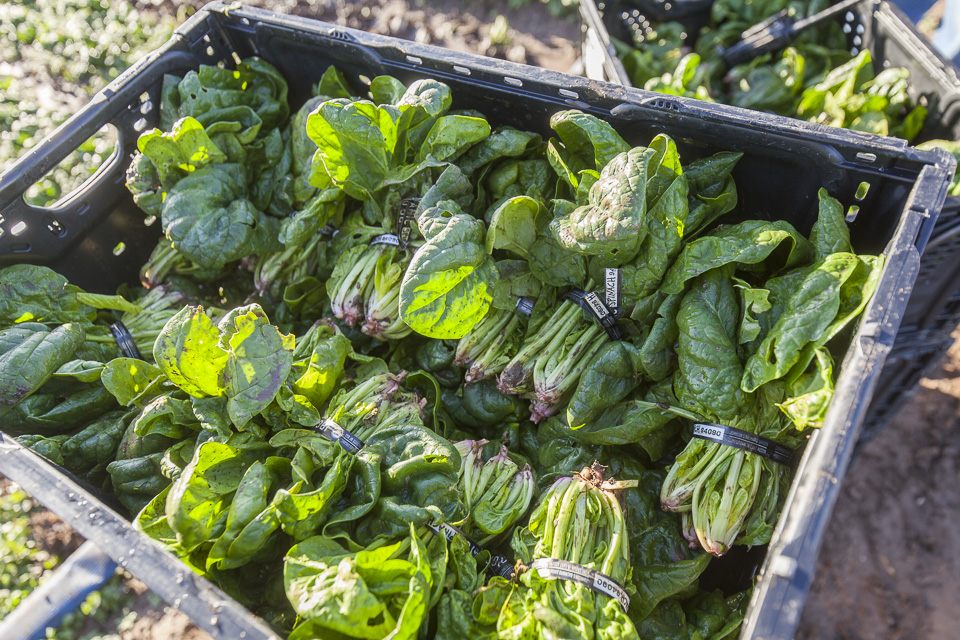 Spinach! Photo by Scott David Gordon.
Spinach! Photo by Scott David Gordon.
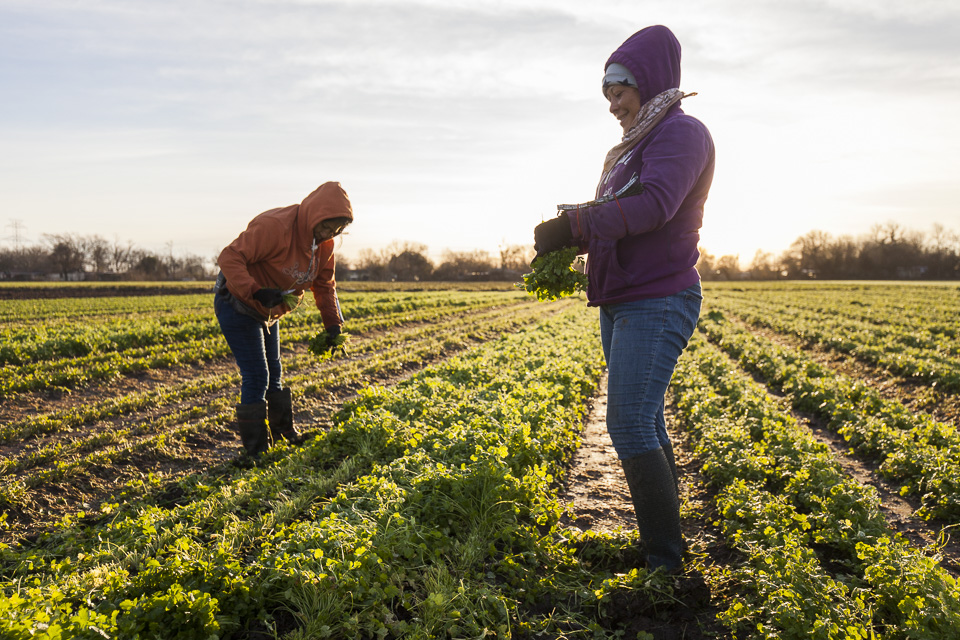 Cilantro harvest. Photo by Scott David Gordon.
Cilantro harvest. Photo by Scott David Gordon.
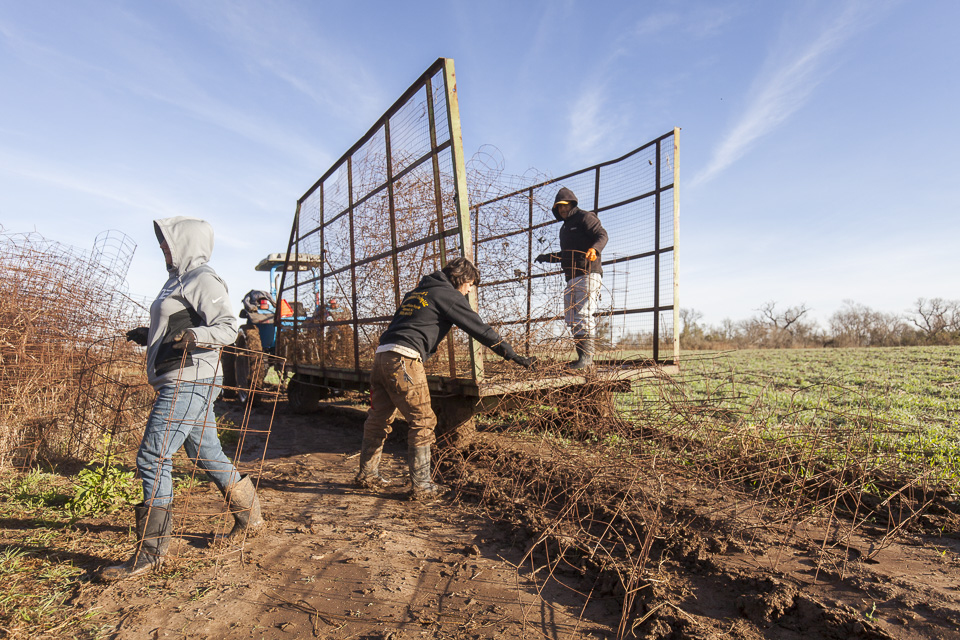 Tomato cage party. Photo by Scott David Gordon.
Tomato cage party. Photo by Scott David Gordon.
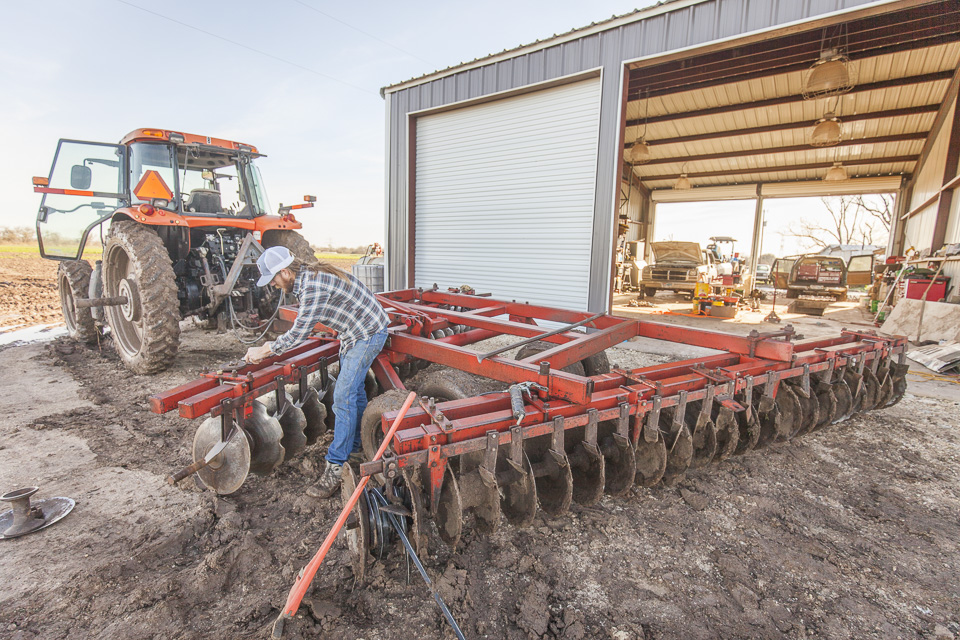 Montana working on the tiller. Photo by Scott David Gordon.
Montana working on the tiller. Photo by Scott David Gordon.
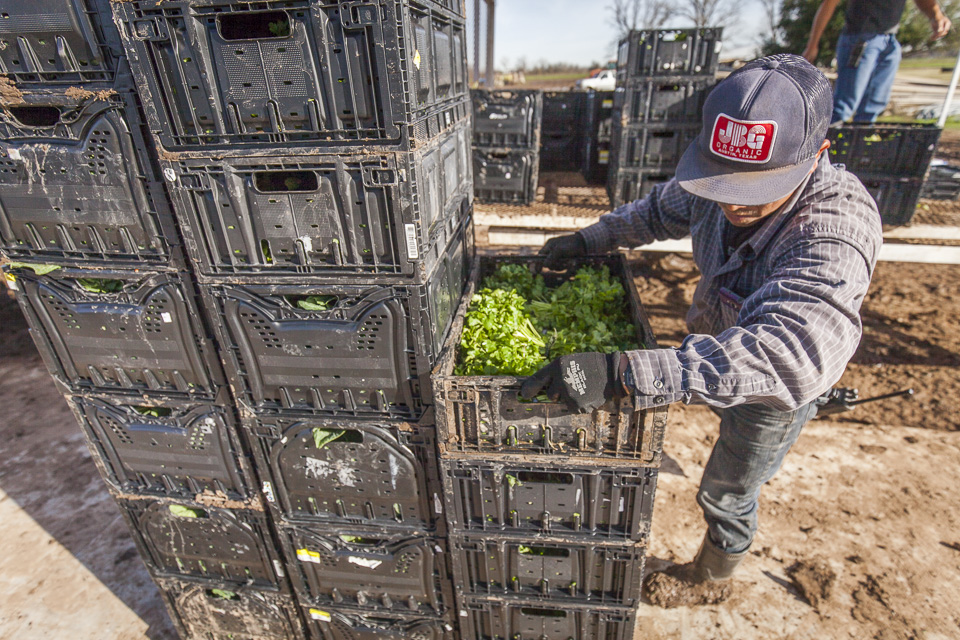 Photo by Scott David Gordon.
Photo by Scott David Gordon.
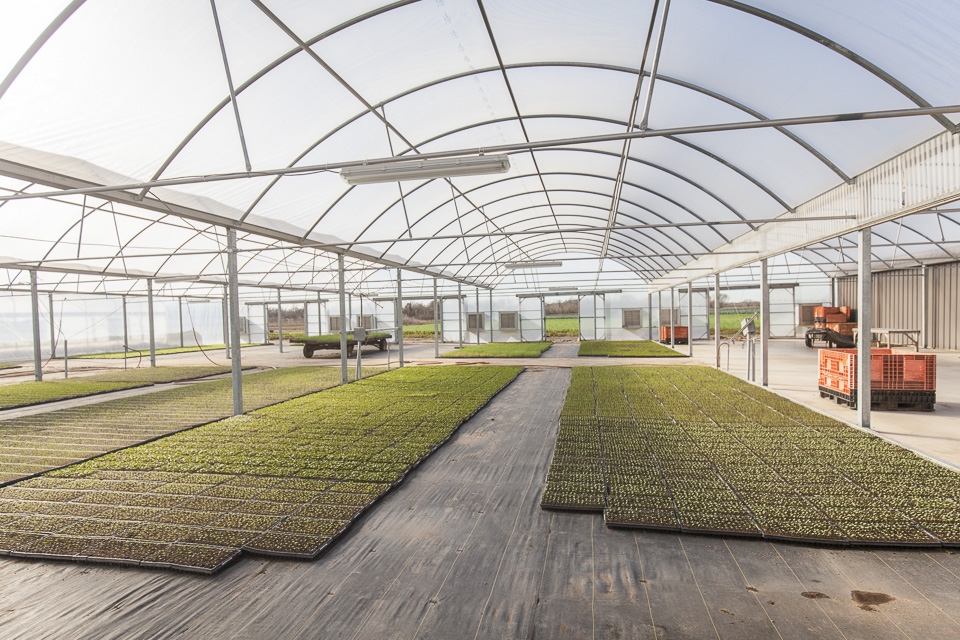 Greenhouse vastness. Photo by Scott David Gordon.
Greenhouse vastness. Photo by Scott David Gordon.
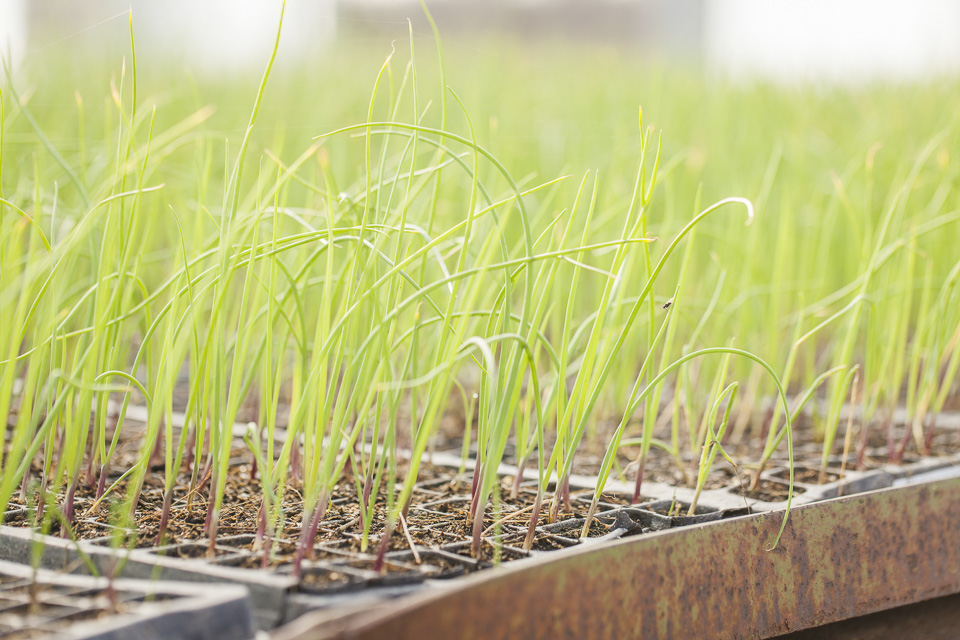 Transplants. Photo by Scott David Gordon.
Transplants. Photo by Scott David Gordon.
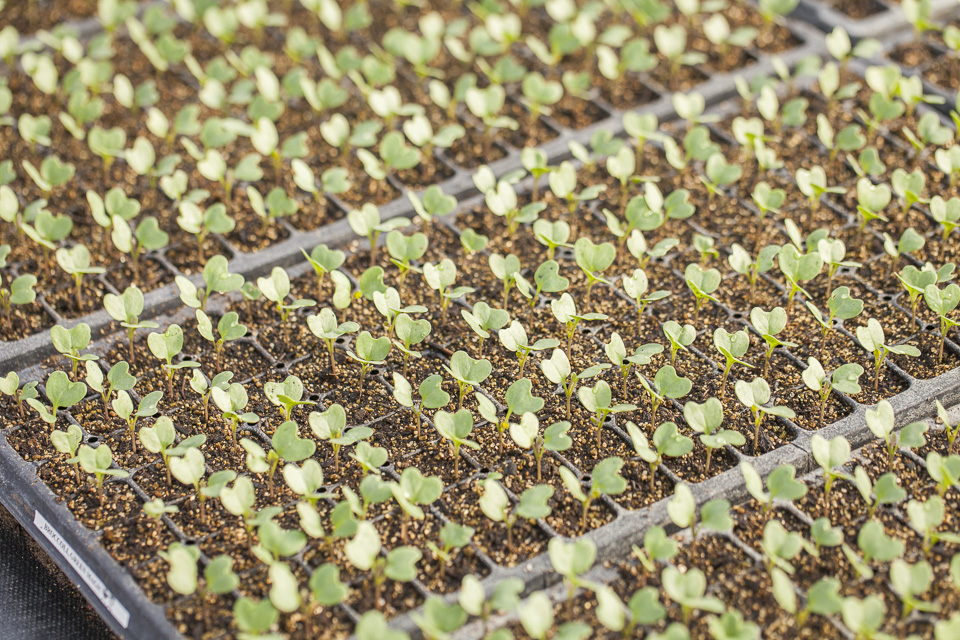 Transplants. Photo by Scott David Gordon.
Transplants. Photo by Scott David Gordon.
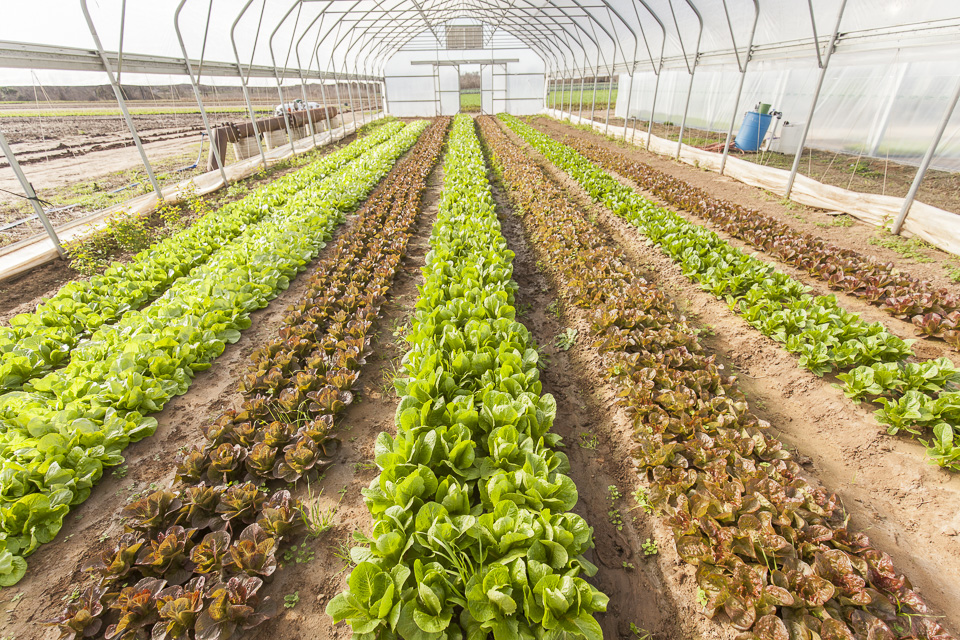 Lettuce varieties. Photo by Scott David Gordon.
Lettuce varieties. Photo by Scott David Gordon.
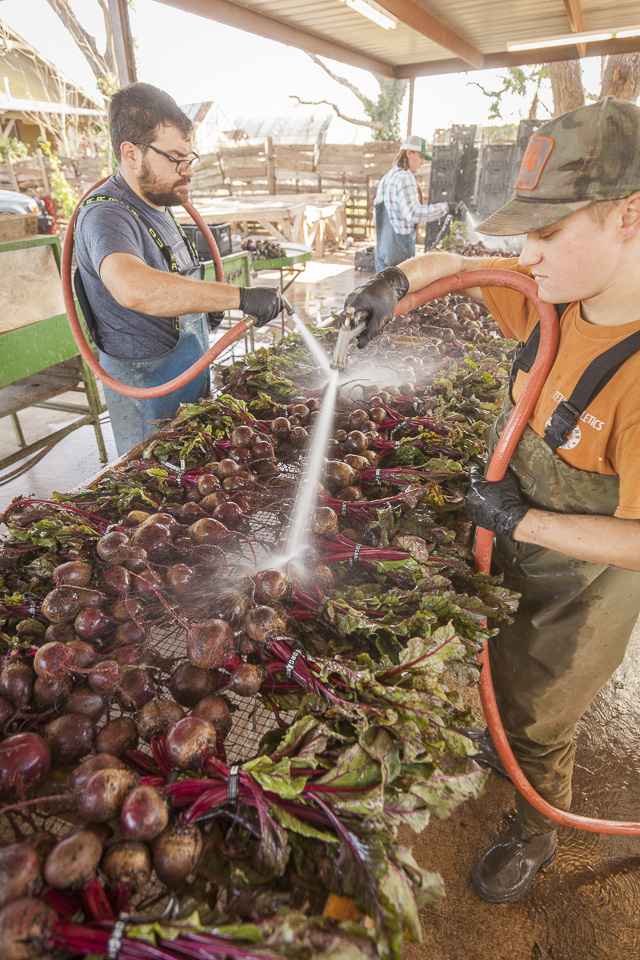 Washing to the beet. Photo by Scott David Gordon.
Washing to the beet. Photo by Scott David Gordon.
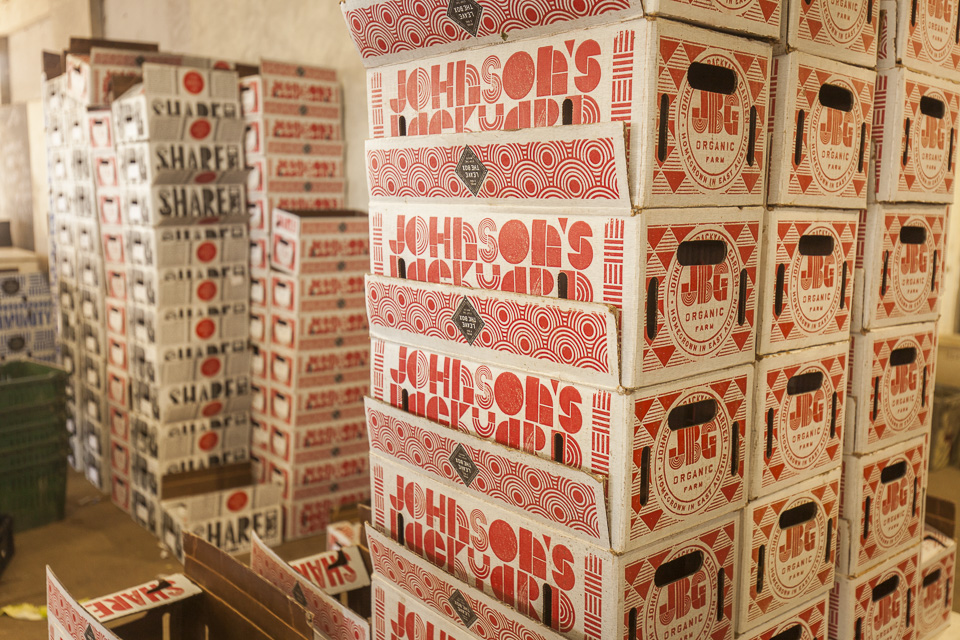 CSA boxes ready to house some veggies. Photo by Scott David Gordon.
CSA boxes ready to house some veggies. Photo by Scott David Gordon.RESOLUTION 2017: COMMUNITY SUPPORTED AGRICULTURE
01/06/17 — Heydon Hatcher
 Zinnia glory. Photo by Scott David Gordon.
Zinnia glory. Photo by Scott David Gordon.
There is an inevitable torrent of resolutions with the advent of a New Year, as we try to jumpstart grand life changes when the clock strikes twelve to ring in a new trip around the sun. Whether we stick to these goals or fall short, these forays into oftentimes lofty ambitions demonstrate that we indeed DO know how improve our lifestyles (even when we seem stuck in stagnant and cob-webbed old habits). Instead of becoming frustrated at our inabilities to adhere to grand declarations first thing this year, let’s create intentions that set us up to attain overall better well-being. We could all do a little more for our bodies, and in 2017, why don’t we all aim to brighten our plates, make more meals, become more in tune with our environment, and ameliorate our diets once and for all. Easy enough, right? As we all strive for health in the new year, consider one life hack that is sure to bring welcome and easy change, our CSA! A simple and painless delivery service that ensures organic and fresh produce will be integrated into your diet week after week!
Many of those reading this post are current CSA members, but of course, some of you are not! For those of you who might have never even heard of a CSA (it means Community Supported Agriculture by the way!), or have taken a break from your subscription, we wanted to pause and share some of the most common and frequent questions that we receive regarding the CSA program. This straightforward method of obtaining veggies weekly need not be an exclusive process! Hopefully some of these FAQs answer any queries you have as well as familiarize you with your new soon-to-be favorite veggie program.
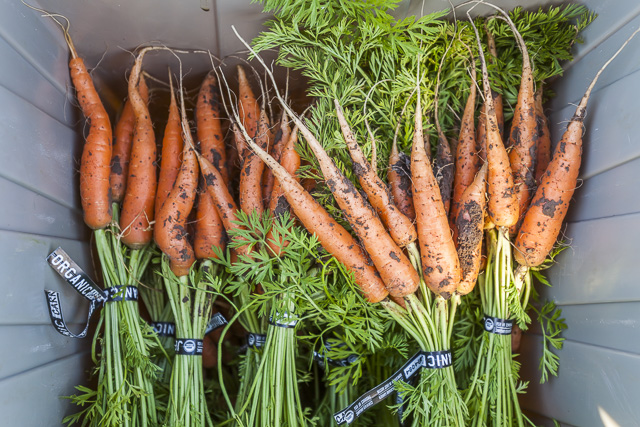 Farm-fresh carrots. Photo by Scott David Gordon.
Farm-fresh carrots. Photo by Scott David Gordon.
What do I get in my box? Cultivated in East Austin and harvested no more than a day or two before reaching your doorstep, these certified organic fruits and vegetables (Over 200 varieties) are at peak nutrition and flavor. Getting a CSA share with JBG means you know exactly where your food is coming from and how it's grown. GMO? Heck no! You might even see a bunch of flowers in your share during certain months!
Eating locally connects you to the seasons, to the land, and to your own health and wellness. Cucumbers will cool you down in the summer, while braised collards will warm you up when the temperatures start to drop. Enjoy the best pico de gallo of your life during the short window when cilantro, onions, peppers, and tomatoes all overlap, and we promise you'll never go back to the store-bought stuff again. You'll get acclimated with the seasons on a whole new level, and learn about what naturally grows when and why.
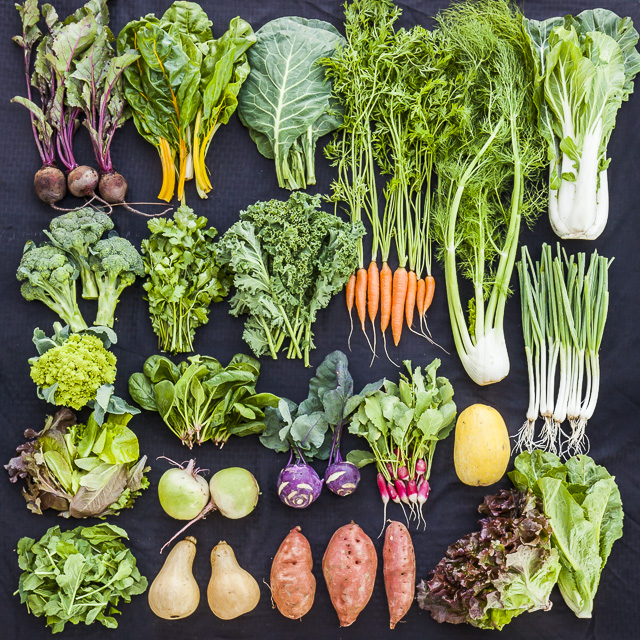 CSA bounty. Photo by Scott David Gordon.
CSA bounty. Photo by Scott David Gordon.
Can I choose what's in my box each week? We are happy to offer CSA members the ability to customize your share. To use our customization feature, simply login to your JBG account and click on the button that says "customize this share". You are only able to customize your CSA share during your "customization window", which is based on your particular delivery day. All customers are able to customize beginning Saturday at midnight (the week prior to your delivery). To learn when your specific customization window closes, email the farm! This limited customization window helps us ensure that we harvest according to your needs. At all farmer’s market pickup locations, members can trade out any number of items in their box with those available at our market stand. Check out all the pick up locations here.
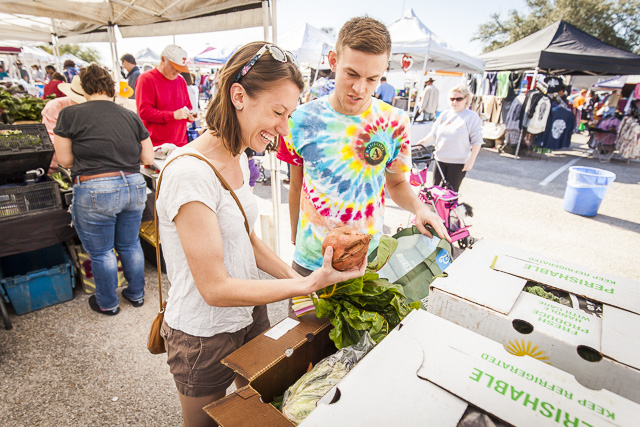 Market pick-up. Photo by Scott David Gordon.
Market pick-up. Photo by Scott David Gordon.
How much does it cost? Starting at $25, the individual box offers enough veggies for 1-2 people. The next size up, the small box provides for 2-4 people and costs $30.50. The medium box provides for 3-5 people and is valued at $38. Finally, the large box which provides veggies for 4-7 people costs $44. You can also add on a dozen or half a dozen organic eggs ($6 and $3 accordingly) as well as whole or ground organic micro-roasted coffee at $12 a pound.
How does payment work? When you sign up for a CSA, your account is set to auto-renew. This way you don't miss any week's worth of veggies. Your account always renews the day after your last delivery. For example, if you sign up for four shares and your last share is scheduled for February 2, your account would renew on February 3 and four more shares would be added to your schedule - following your usual weekly or bi-weekly pattern. Anytime you postpone a share, your renewal date is automatically adjusted. If you'd prefer for your account to not be on auto-renew, you can simply log-in to your account and un-click the button that says "active".
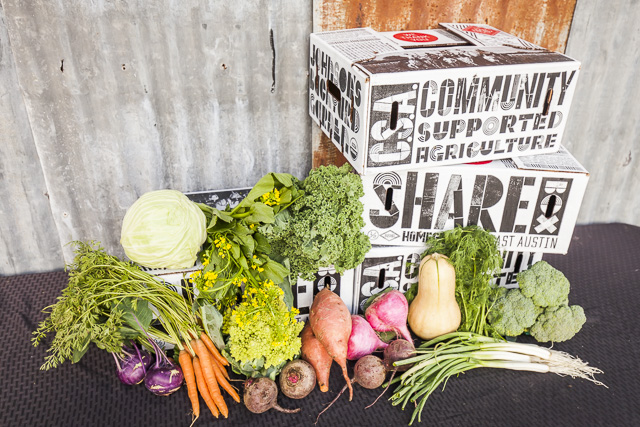 Photo by Scott David Gordon.
Photo by Scott David Gordon.
Can I change my subscription? Of course! If you're ever in the middle of a subscription and want to alter your box frequency or box size, just shoot us a call or an e-mail and we can make those changes for you. If you're new to the CSA, finding the box size and frequency that is just right for you might take a few weeks. Our goal is to get you the perfect amount of veggies and keep your produce-waste to minimum. Veggie-shame is a real thing, and we don't want you to have it. If you checkout our veggie guide, we offer some storage tips, and each week on our blog we're posting some recipes with items currently in your share.
What happens if I cannot pick up my box? How do I postpone my next delivery? Fancy yourself quite the traveler? Well, good on ya! You can jetset, and still maintain your farm-fresh lifestyle. We are super flexible with regard to crazy and hard-to-tack-down schedules. If you contact our office 48 hours prior to your delivery day, we can arrange for a pick-up at an alternate community pick-up site during the same week. Members also have the option to call our office to donate your share. We have a partnership with the The Settlement Home and SafePlace. We donate produce to these organizations several times each week. Lastly, you can always postpone.
If you want to postpone, just email us by Friday the week prior to your delivery day, or by logging into your account and clicking on the My Deliveries tab. By clicking on the "Postpone One Week" button on the middle right hand of the page, all of your deliveries will move forward one week.
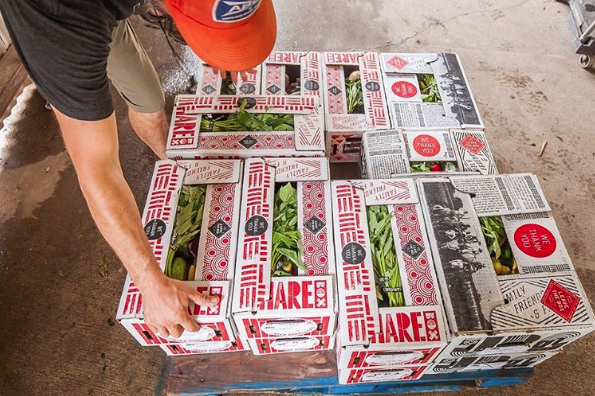 Matt stocking up the CSA pallet. Photo by Scott David Gordon.
Matt stocking up the CSA pallet. Photo by Scott David Gordon.
Interested in the CSA? Check out these New Year’s Promos!
- If you are a new customer or have been taking a hiatus, sign up now through the end of January and get your first box free! Yep, you heard us right, FREE! It’s a great way to integrate fresh, organic produce into your daily regimen. It’s the perfect nudge you’ve been waiting for, so don’t dally, the offer ends January 31st! If free organic veggies aren’t convincing enough, check out these other 21 reasons to join our farm and make 2017 a year to remember. To join (or rejoin) the CSA click here and use the promo code: StartFresh or call the farm at 512.386.5273.
- If you are a returning CSA member, have you considered a long-term subscription? An annual or 6-month subscription gives us money upfront to grow the organic vegetables you love, and helps us balance some of the risks inherent in vegetable production. This past year, mother nature dealt us some pretty disastrous weather, and the past couple of seasons have been very tough for us financially. January is always a month when our cash flow is tight and our expenses higher, due to seed and compost purchasing for spring planting. As an added thank you, now through the end of January, we will send you a one-box trial JBG Gift Certificate to give to a friend, and a tote bag, t-shirt, hat, or bag of citrus just for you. Here's the lowdown on a long-term subscription with JBG: 52-week subscription, and save 10% or 26-week subscription, and save 7.5%! Call Daniel at the farm - 512.386.5273 if you are interested! Your switch to an annual or 6-month subscription will truly help the farm and be greatly appreciated.
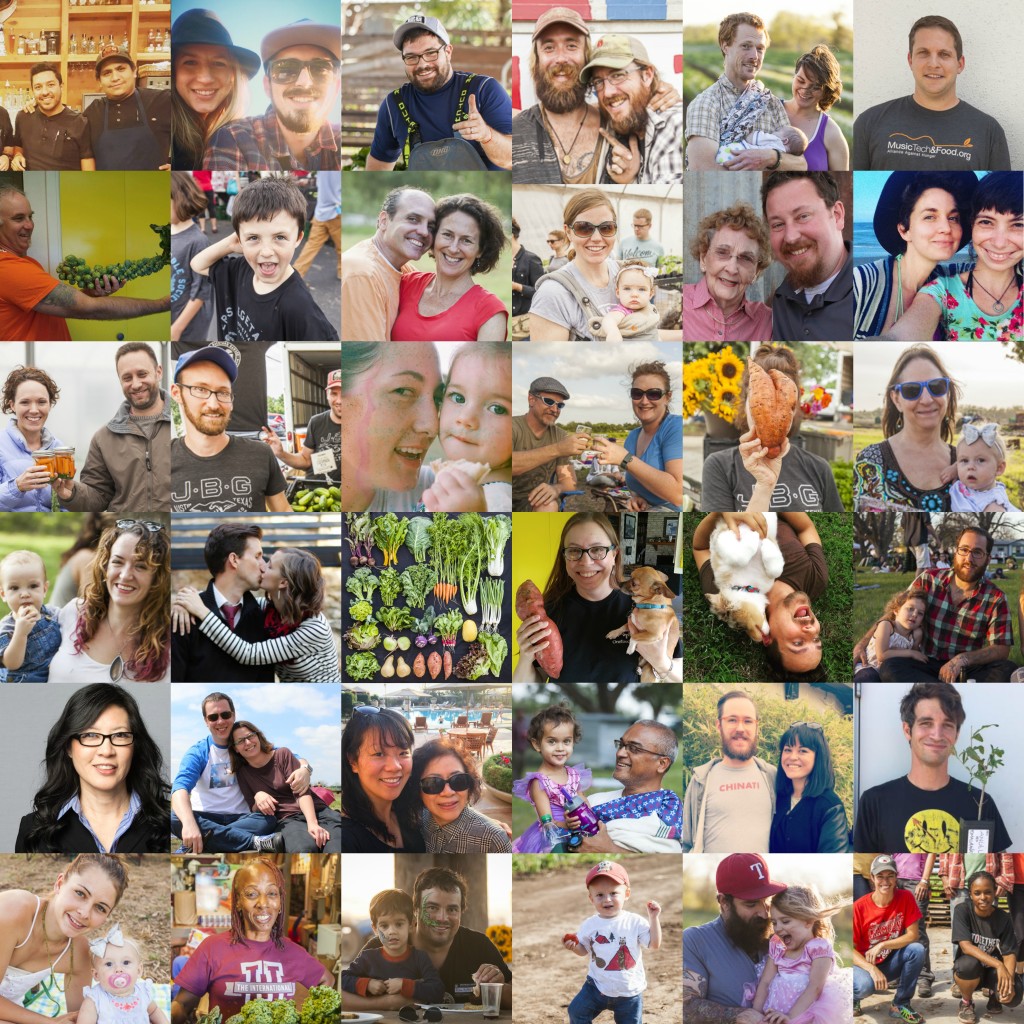 Our CSA Community. Collage by Ada Broussard.
Our CSA Community. Collage by Ada Broussard.
CSA Stories:
If you haven't been swayed yet, the community that has grown throughout the years around our CSA is nonpareil. It is truly is a force to be reckoned with... we are constantly amazed by their many varied life stories as well as their unconditional support of the farm. With member-only dinners, happy hours, plant sales, cooking classes, yoga + races at the farm, PYO-events, there is no shortage of events for you to get to know all these amazing Central Texans. We want the farm to connect awesome people, whether at one of the aforementioned events or at your neighborhood pick-up site. Below are some testimonials from some of our long-time customers/heroes.“JBG changed my life. I’ve been saying so for 4(!!) years now. They make me eat my vegetables. After joining the CSA I lost weight. I cook at home so much more, instead of eating greasy, salty heavy food in restaurants. With all those vegetables on hand, I feel obligated to eat several times more vegs than I would have otherwise. I feel so much better after eating a healthy home cooked meal than a heavy, expensive dinner out. Also it’s good to know where your food has been! It makes me happy to know that the environmental impact of the food I eat is lessened... no bee-killing pesticides, no big carbon footprint of packaging, shipping across the country, and so on. The food I eat is almost as close to fresh from the ground as it would be if I grew it in my own backyard…” - Mel Jo
“JBG has been a blessing to me and my family. We have gotten to share that blessing with many people in our community. I love sharing recipes and visiting with other subscribers as they come to collect their produce. We talk about what's in the box. We talked about how to prepare kohlrabi or kale or rutabagas. I would encourage anyone to step outside your norms and experience the bounty grown right here at JBG in Austin, Texas…” - Kari Michalek
“I've been a CSA member since the farm was an actual backyard in east Austin, and JBG has changed the way I eat. I've learned to love beets, discovered the beauty of a kale chip, and found that eating seasonally really does taste better. The CSA subscription is such an easy way to access healthy food, it's hard now to imagine what my diet would look like without it.” -Kelly West
“Put quite simply, being part of the CSA connects our family more deeply to some of the most important things in life - our planet, seasonality, culinary creativity, international food traditions, and obviously organic, local, and wildly fresh foods.” - Cameron Allen
FIRST FRIDAY STAFF PICKS - JANUARY '17 EDITION
01/06/17 — Heydon Hatcher
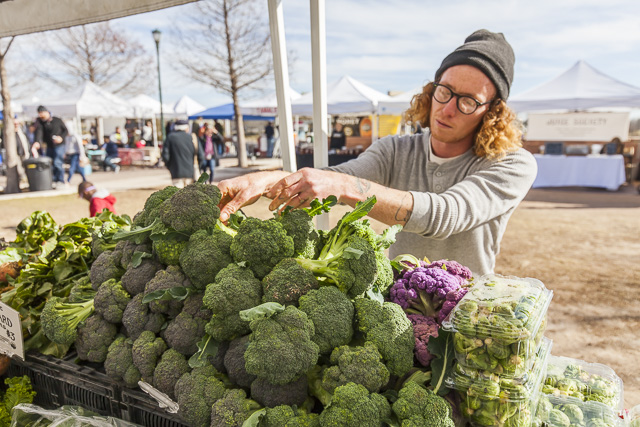
The arrival of a new year AND a new month means another marvelous edition of our First Friday Staff Picks! We think that our staff is the best in the business (okay, okay, we are a little biased), but the JBG family hails from all over the place and covers the gamut in talents and interests. We love sharing events, adventures, and side projects that inspire and excite our JBG-ers (food-related or not) with the community. Check out the staff-curated list of favorites below!
Ada (CSA and Marketing Manager): Nothing new here, but Ramen Tatsuya has my heart this (and every) winter. That broth. One of my absolute favorite things to put in my mouth.
On a recent drive home to Louisiana, I went on a Farmer to Farmer podcast binge. So many ag, agribusiness, and farm related things to learn that you never even knew needed to be learned. Excited to listen to this week's episode where the usual host of the podcast, Chris Blanchard, becomes the interviewee.
Hector (JBG Social Media Extraordinare): Austin comes together for those in need again. This event gathers items needed by the homeless and makes care packages for them. I'll be there!
Travis (Wholesale Manager): The shows during free week are so good, it makes me wanna smack my mama. IN PARTICULAR: Tonight (Friday the 6th) Pushmen and The Well will be at The Sidewinder conjuring tunes so loud and heavy, you'll gladly sacrifice your eardrums for the experience. I'll be there. You should be there.
Charlotte (Asst. Farm Manager) and Brandon (Greenhouse Manager): Last week we flew to Boston and then drove up to Maine to visit family, and were graced with almost two feet of snow! We ate tons of seafood in Portland and hung out with fam, then visited Full Circle Farm in rural Vassalboro. We also got to check out Johnny's test farm and visit with our wonderful seed reps, Randy and Katrina. JBG wouldn't be the same without them, so it was great to finally meet them in person. Randy gave us an amazing tour of their facilities - it was definitely the highlight of the trip! We went tobogganing, drank copious amounts of hot tea, wore goofy (incredible) snowsuits, and ate chowder and/or lobster every day. We spent New Year's Eve in Boston on the last night of the trip, where we walked around in the rain, ate tons of soup dumplings, and accidentally spent way too much money on Champagne. The reset was just what we needed to start the new year.
We were fortunate enough to be able to tour Johnny's Selected Seeds research farm today. Highlight of the trip
A photo posted by Brandon Mallonee (@bmallonee) on
Megan (Recipe Blogger): It's free week! The best time of the year to check out new music in Austin. I'm not going of course, because toddler, but if I were I'd be at Empire Control Room tonight (1/6) for The Digital Wild w/ Calliope Musicals.
What I'm really excited about is a super chilly weekend with no plans, other than making my late Oma's famous chicken n' dumplings. It is the most satisfying bowl of delicious comfort - and I know what you're thinking - it will definitely end up on the blog.
Chucha (Farm Dog): Killin' birds. WOOF.
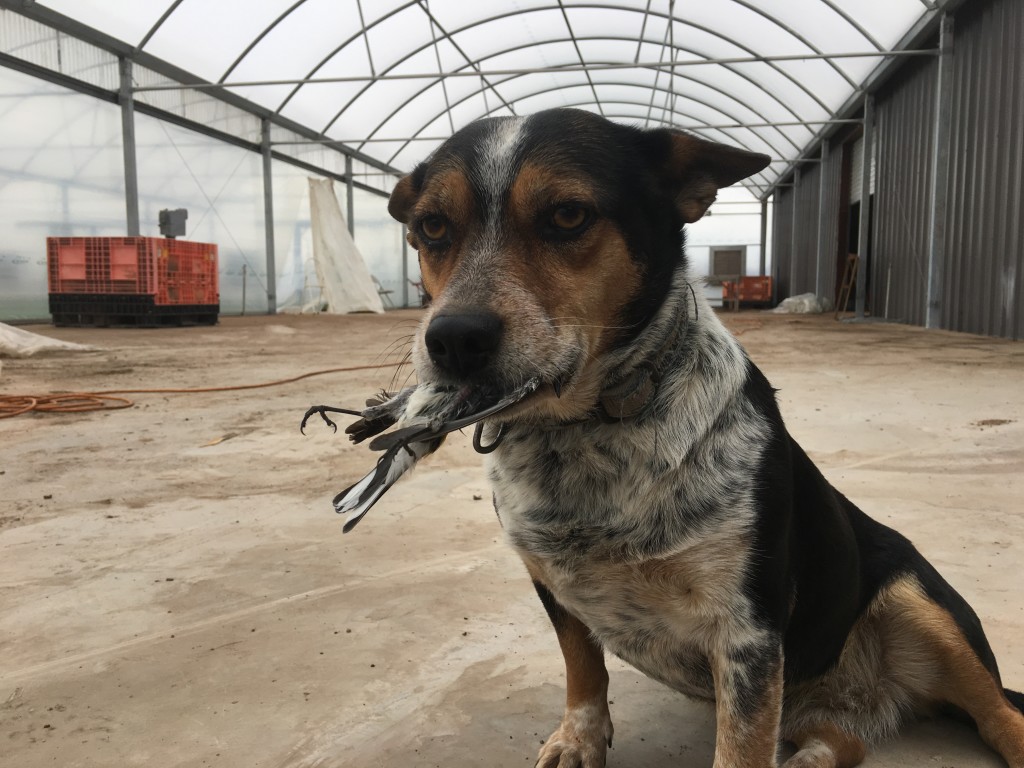 "I'm a stone-cold killa'" -Chucha
"I'm a stone-cold killa'" -Chucha
Lena (Wholesale Team): As tempted as I am to stay huddled up in my warm apartment this weekend, I’m catching one of Louis CK’s shows at ACL Live on Saturday night since he’s one of my favorites!
And in a few weeks, I’m driving to Dallas to see one of my all-time favorite bands, Cloud Cult! They play experimental rock incorporating strings and brass instruments to put on an incredible show. They also have two artists on stage who create a new painting every night! On top of that, their studio is powered by geothermal energy on an organic farm in Minnesota, and they plant trees to offset their CO2 output. They play Antone’s here in Austin on 1/27 and I highly recommend checking them out.
Missoula (Farm Dog): Mike Mo's stew bones (thanks, dawg). The ceaseless and daily showering of pets by delivery drivers and employees, alike (thanks, dawgs). WOOF.
Mike Mo (Wholesale Manager): My new show is The Man In The High Castle. Great show.
Matt Pelkey (CSA Manager): Check out this concert: The Devil Makes Three @ Emo's on Jan 13th!
Heydon (JBG Blogger): David Sedaris on tape. The holidays usually mean an ungodly amount of car time, chugging over to Alabama, and then bouncing up to Colorado to be with my partner's family. While I am blessed and grateful to have gems of friends sprinkled all over the US to visit and reconnect with, the drive can have its interminable stretches (Yes, I'm talking about you, Kansas); thus, any sort of entertainment is gladly welcomed. We were gifted Let's Talk Diabetes with Owls which had us transfixed and belly-laughing for the majority of eastern Texas, the bayou, and some of southern Alabama.
Whilst in New Orleans (the highlight of the drive back to Sweet Home Alabama methinks), a dear friend of ours introduced us to the divine wine joint, Bacchanal, on the Bywater. The perfect outdoor spot to gather with friends, imbibe delicious wine, savor Cajun tunes, and soak in the magic that the Crescent City has no shortage of. Next time you find yourself in The Big Easy, swing by!
Last but not least, everything Esby Apparel. The colors, the laid back style, the shop, the people who work there, the events. I cannot stop ogling all of the beautiful pieces from this stellar lady-run business. Duffy Jumper for president?
CSA BOX CONTENTS WEEK OF JAN 9TH
01/10/17 — Scott
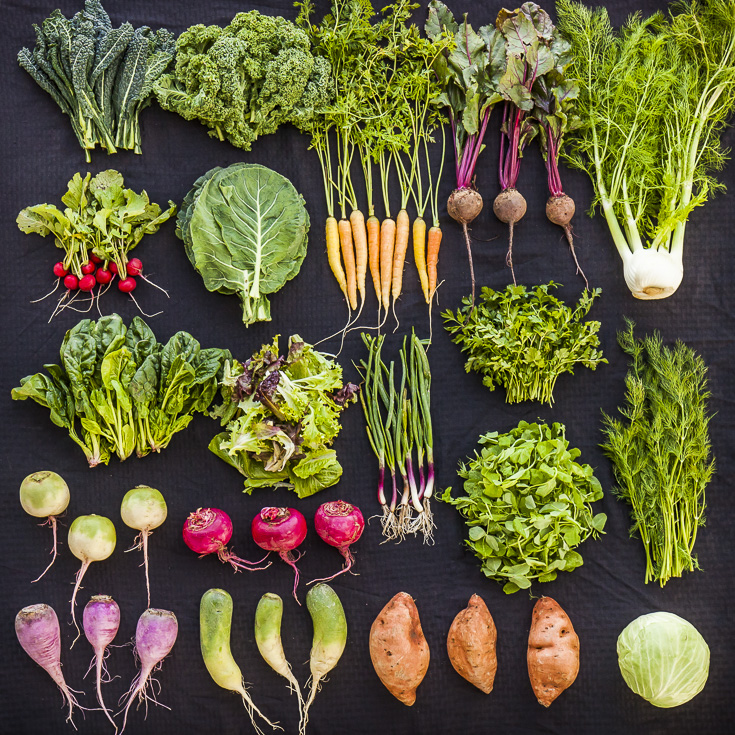 CSA Box Contents Week of Jan 9th
CSA Box Contents Week of Jan 9th
Large Box
Beet, Red
Cabbage, Red
Carrot, Orange
Greens, Collards
Greens, Spinach
Herb, Cilantro
Kohlrabi, Purple
Lettuce, Mixed head bag
Potato, Sweet
Radish, Chinese Pink
Radish, Watermelon
Turnip, Scarlett
Beet, Red
Cabbage, Red
Carrot, Orange
Greens, Collards
Greens, Spinach
Herb, Cilantro
Kohlrabi, Purple
Lettuce, Mixed head bag
Potato, Sweet
Radish, Chinese Pink
Radish, Watermelon
Turnip, Scarlett
Medium Box
Cabbage, Green
Carrot, Orange
Greens, Collards
Greens, Spinach
Herb, Parsley, Curly
Kohlrabi, Purple
Lettuce, Mixed head bag
Potato, Sweet
Radish, Black Spanish
Turnip, Scarlett
Cabbage, Green
Carrot, Orange
Greens, Collards
Greens, Spinach
Herb, Parsley, Curly
Kohlrabi, Purple
Lettuce, Mixed head bag
Potato, Sweet
Radish, Black Spanish
Turnip, Scarlett
Small Box
Beet, Red
Bok Choy
Cabbage, Green
Carrot, Orange
Greens, Spinach
Potato, Sweet
Radish, Black Spanish
Turnip, Scarlett
Beet, Red
Bok Choy
Cabbage, Green
Carrot, Orange
Greens, Spinach
Potato, Sweet
Radish, Black Spanish
Turnip, Scarlett
Individual Box
Cabbage, Green
Carrot, Orange
Greens, Collards
Greens, Spinach
Potato, Sweet
Radish, Purple Daikon
Cabbage, Green
Carrot, Orange
Greens, Collards
Greens, Spinach
Potato, Sweet
Radish, Purple Daikon
CSA BOX CONTENTS WEEK OF JAN 9TH
01/10/17 — Scott
 CSA Box Contents Week of Jan 9th
CSA Box Contents Week of Jan 9th
Medium Box
Beet, Red
Cabbage, Green
Carrot, Orange
Greens, Collards
Greens, Spinach
Herb, Parsley, Flat
Onion, Green
Potato, Sweet
Radish, Green Meat
Turnip, Scarlett
ROASTED FENNEL TOAST
01/11/17 — Heydon Hatcher
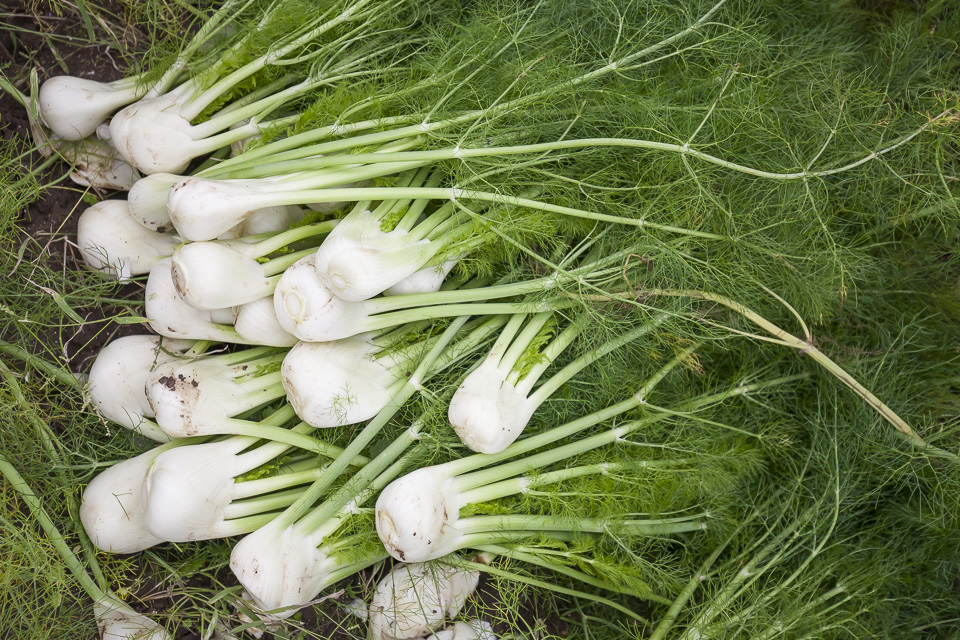 By Hector Gonzalez
By Hector Gonzalez
Roasted Fennel Toast
- 1 fennel
- 2 garlic cloves, minced
- 1 tbsp olive oil
- Salt & pepper
- Toasted bread
- Balsamic vinegar
Slice the fennel in 1/2 inch pieces. Slice the stalks too
Lay fennel in a baking sheet or cast iron pan. Sprinkle with olive oil, salt, pepper, & garlic
Put under the broiler around 5-10 minutes, until charred
Lay on top of bread, add balsamic vinegar. Use fennel tops for decoration, if desired
Variation: add some cheese on top of the fennel before or after roasting for extra funky flavor
SCARLET TURNIP & SPINACH GRATIN
01/11/17 — Heydon Hatcher
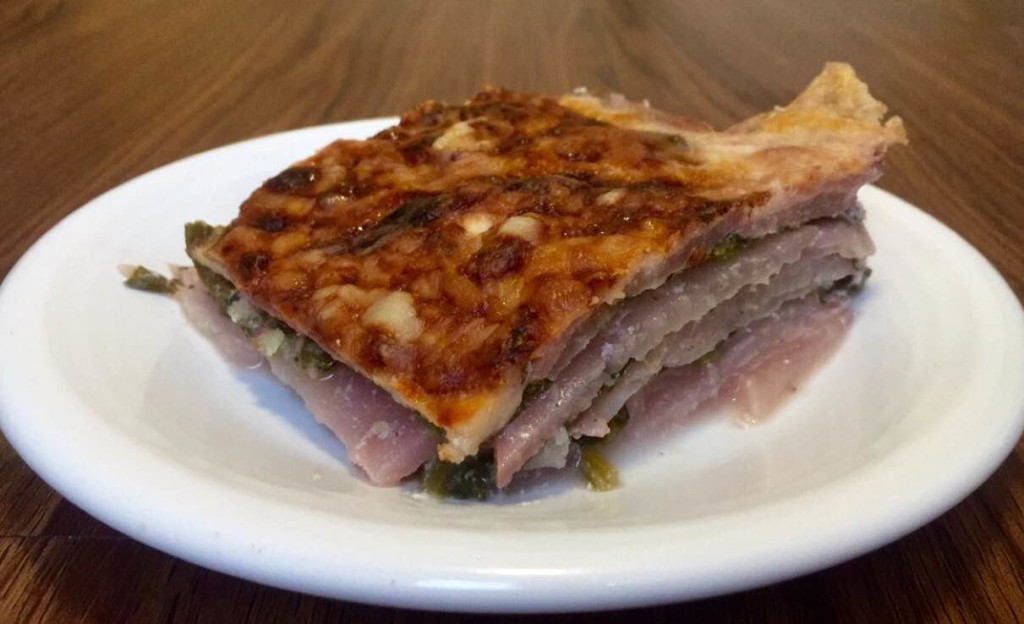 by Megan Winfrey
by Megan Winfrey
I think it's safe to say that if you don't know what to do with a particular vegetable, make a gratin. You just can't go wrong with bubbly, baked cheese. You know it will be good, and you get to suss out the flavor of the vegetable for future dishes. Change up the cheese, add different layers, get creative! It's a safe experiment because it can't fail - as long as there is lots and lots of cheese.
Scarlet Turnip & Spinach Gratin
- 2 large scarlet turnips, thinly sliced
- 2 cups spinach leaves, loosely packed
- 6 oz. Gruyere cheese, shredded
- Butter, for the baking dish
- 1 garlic clove, cut in half
- salt and fresh ground pepper
- 2 1/2 cups milk
- 1 tsp. fresh thyme, roughly chopped
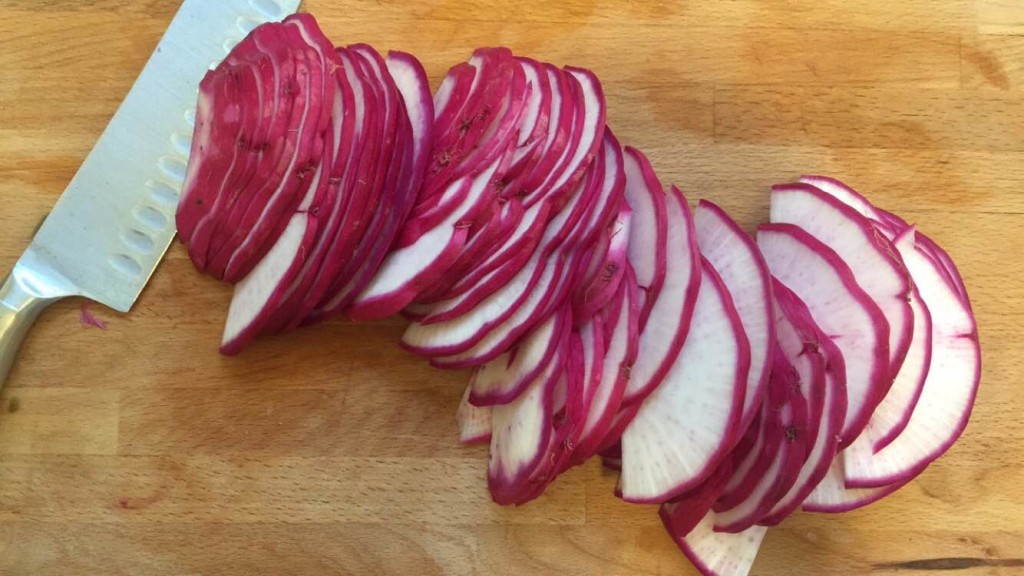
Preheat oven to 400.
Butter a 2 quart baking dish and rub all sides with the cut garlic clove.
In a large bowl, add the turnips, thyme, 2 cups of the cheese, and a generous amount of salt and pepper. Toss together until well incorporated. Start with a layer of turnips in the baking dish, then a layer of spinach leaves. Repeat until everything has been used.
Pour on the milk, place in the oven, and bake for 30 minutes.
With the back of a spoon, push the turnips down into the milk. Spread the rest of the cheese evenly over the top and bake for another 40-50 minutes. When done, the milk should be absorbed, the turnips tender, and the top and sides nicely browned.
Let sit 20-30 minutes, so that the turnips can fully absorb the liquid.
This can be assembled ahead of time, but don't add the milk until ready to bake.
WEEK 2 IN PHOTOS
01/13/17 — Heydon Hatcher
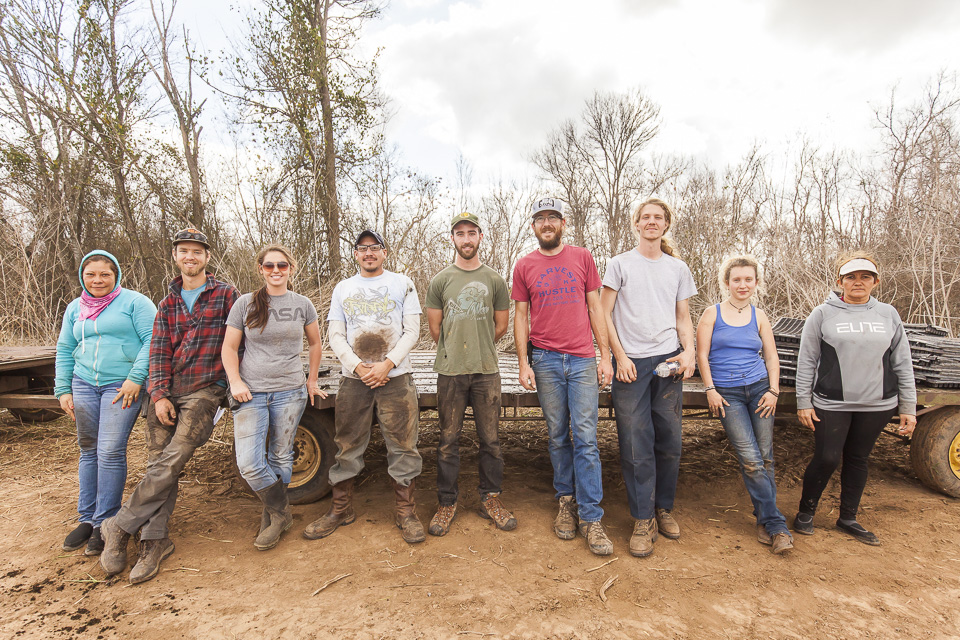 Johannes. Montana, and new faces on the planting crew. Photo by Scott David Gordon.
Johannes. Montana, and new faces on the planting crew. Photo by Scott David Gordon.
We get pretty strong winds out here, so with the wind chill the temperature dropped below 20 on Friday, Saturday and Sunday night. While we plant the best varieties we can find for our climate, there just aren't many crops that can survive a freeze like that. Root crops like carrots, beets and turnips handle it the best, with greens at the opposite end of the spectrum. The last of our fall broccoli and cauliflower were pretty much wiped out, and we saw significant damage to collards, kale, rainbow chard and bok choy. If you see any veggies in the next week or two with a little frost damage, don't fret! They're still tasty and packed with nutrition. We appreciate your understanding that Mother Nature is one of the toughest co-workers out there!
In other news, We started training some awesome new transplant crew members this week! Happy to welcome Cody, Velvet, Sam and Josh to the JBG team. Onions are going in along with more spinach, cilantro, pea tendrils and arugula. Brandon seeded a bunch of new herbs in the greenhouse this week including sorrel, thyme, oregano, and sage. Keep an eye out for some succulent new lettuce varieties coming out of our hoop house over the next week or so - we have Boston bibb, red romaine, red butterhead and more (which was warm and snug behind closed doors all weekend)! The weather's playing tricks on us with its 50 degree swings, and yesterday felt more like May than January.
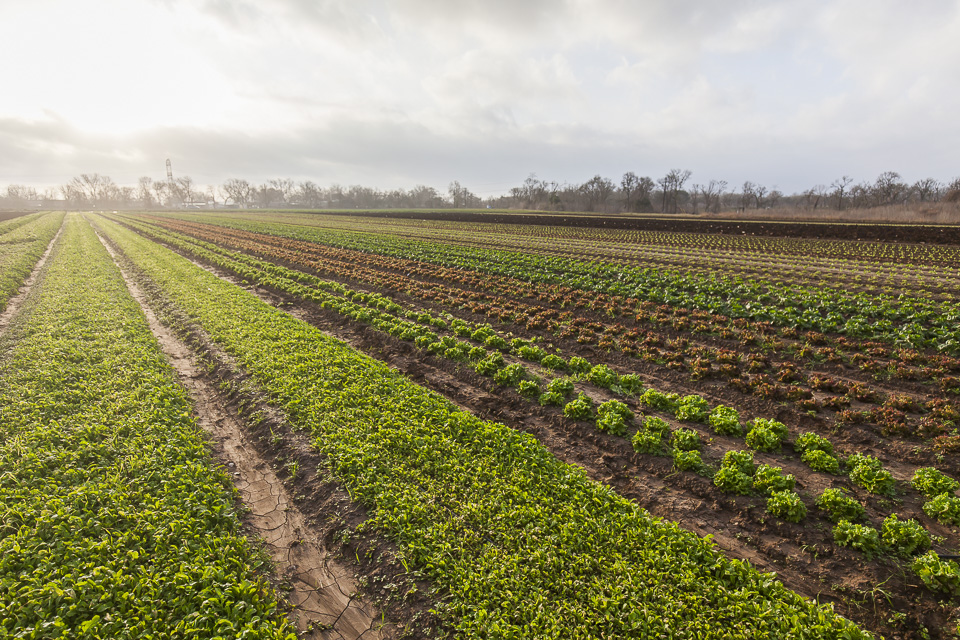 Arugula and lettuce. Photo by Scott David Gordon.
Arugula and lettuce. Photo by Scott David Gordon.
 Preparing transplants. Photo by Scott David Gordon.
Preparing transplants. Photo by Scott David Gordon.
 Velvet at the helm! Photo by Scott David Gordon.
Velvet at the helm! Photo by Scott David Gordon.
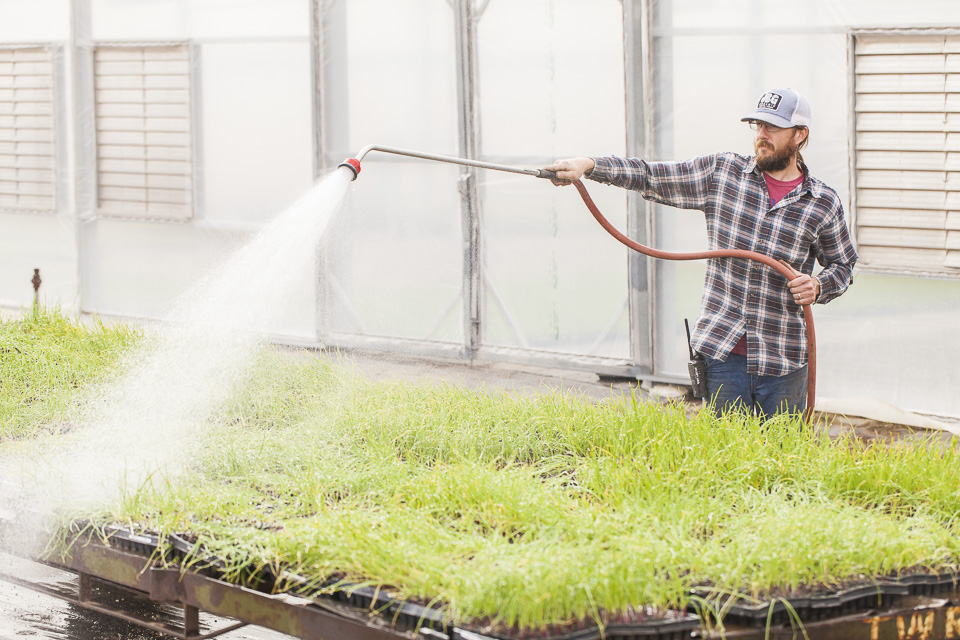 Montana keeping the transplants hydrated. Photo by Scott David Gordon.
Montana keeping the transplants hydrated. Photo by Scott David Gordon.
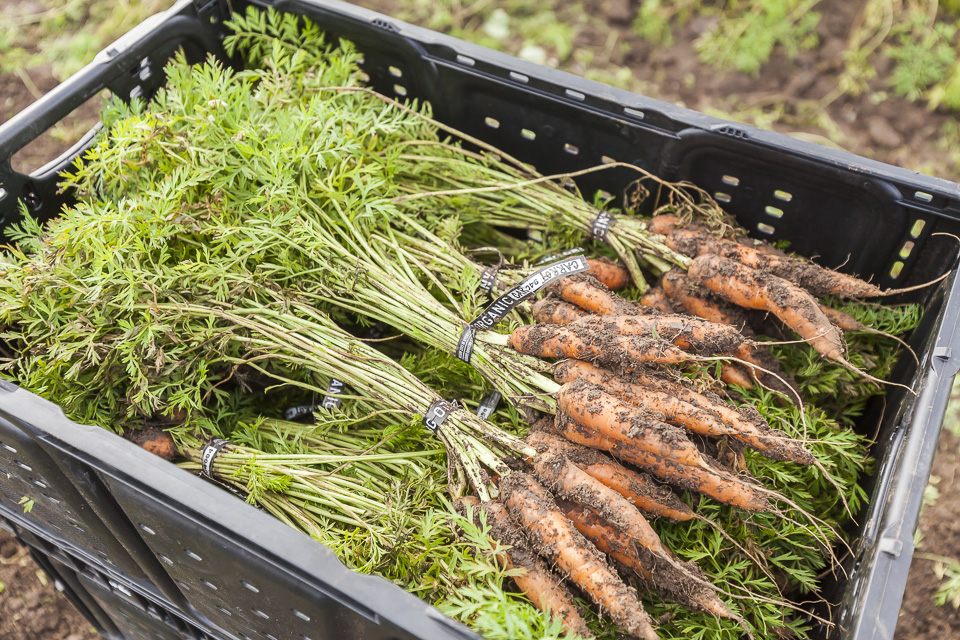 Carrots galore. Photo by Scott David Gordon.
Carrots galore. Photo by Scott David Gordon.
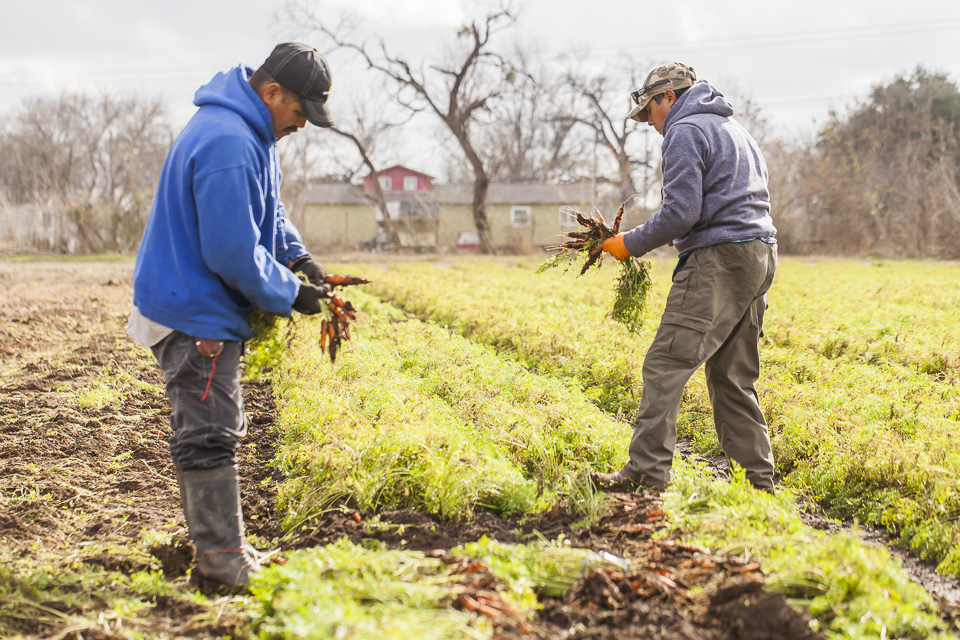 Carrot harvest. Photo by Scott David Gordon.
Carrot harvest. Photo by Scott David Gordon.
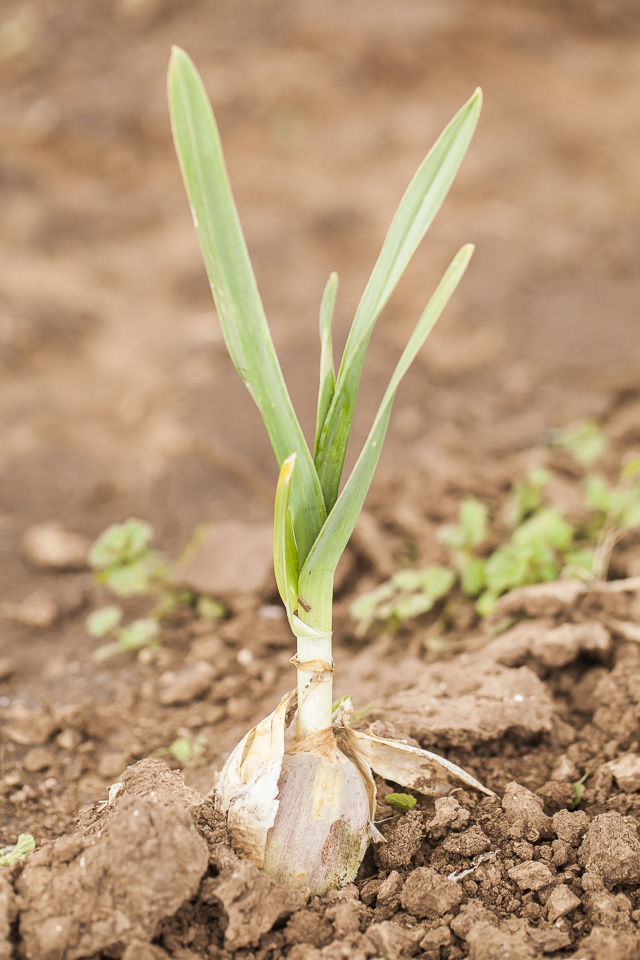 Growin' garlic! Photo by Scott David Gordon.
Growin' garlic! Photo by Scott David Gordon.
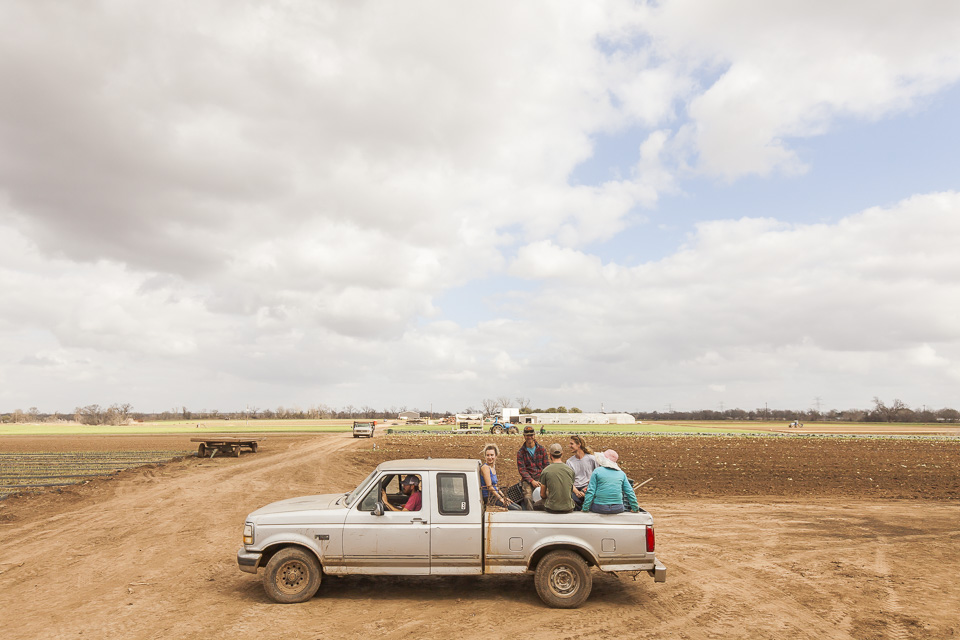 Lunchtime carpool. Photo by Scott David Gordon.
Lunchtime carpool. Photo by Scott David Gordon.
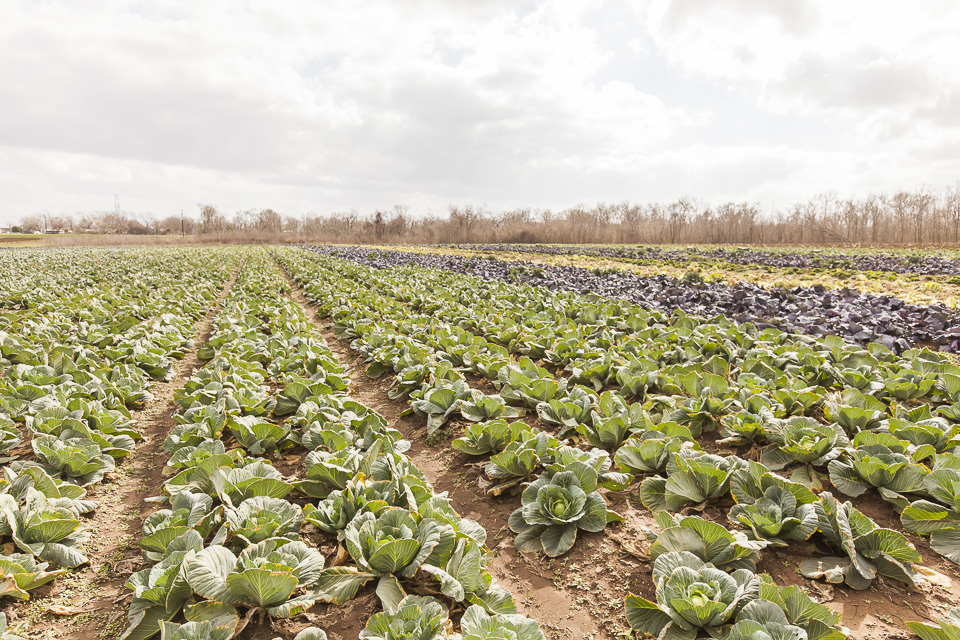 Cabbage patch. Photo by Scott David Gordon.
Cabbage patch. Photo by Scott David Gordon.
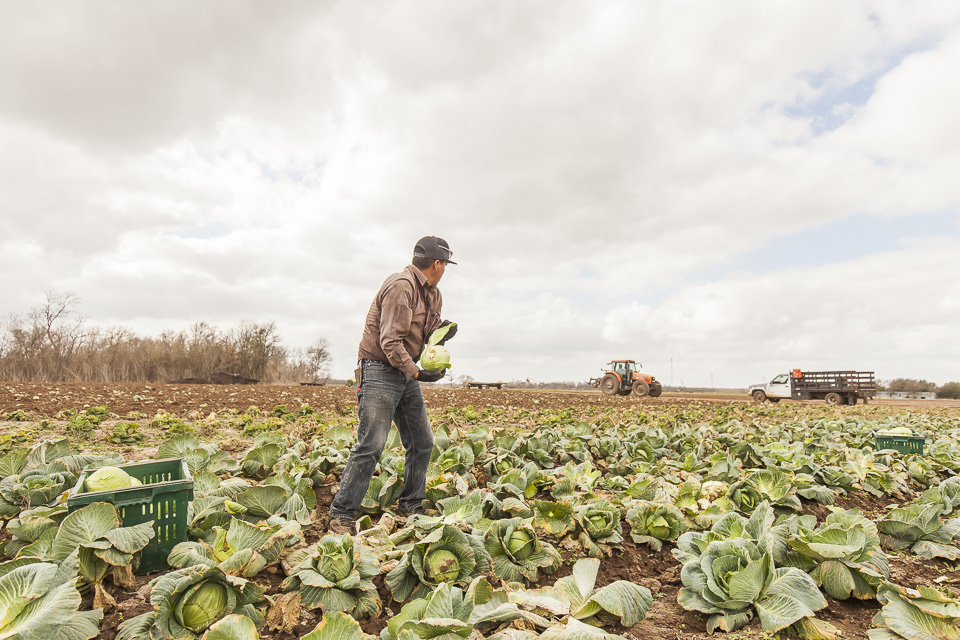 Cabbage harvest. Photo by Scott David Gordon.
Cabbage harvest. Photo by Scott David Gordon.
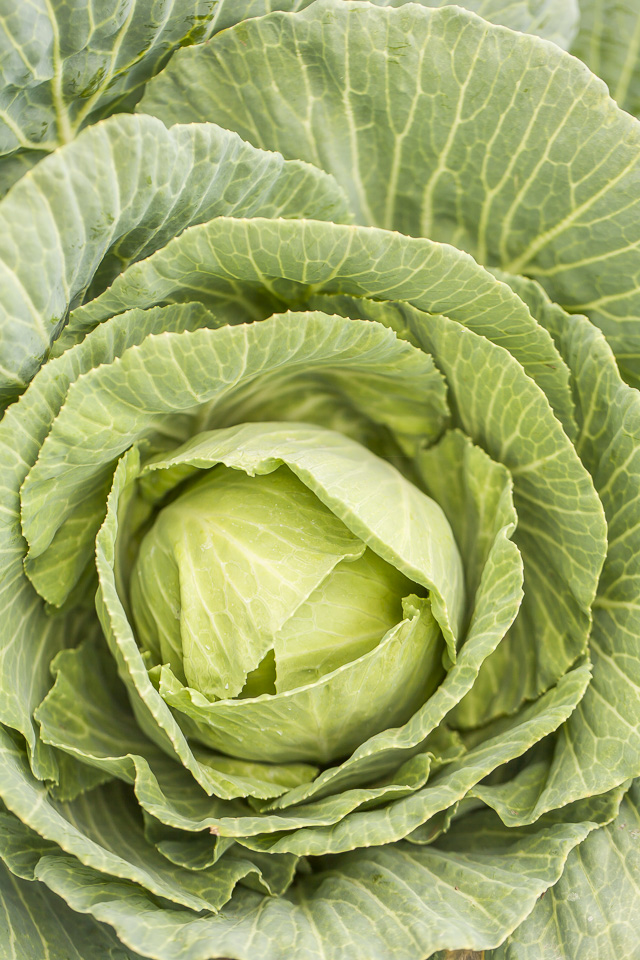 Cabbage. Photo by Scott David Gordon.
Cabbage. Photo by Scott David Gordon.
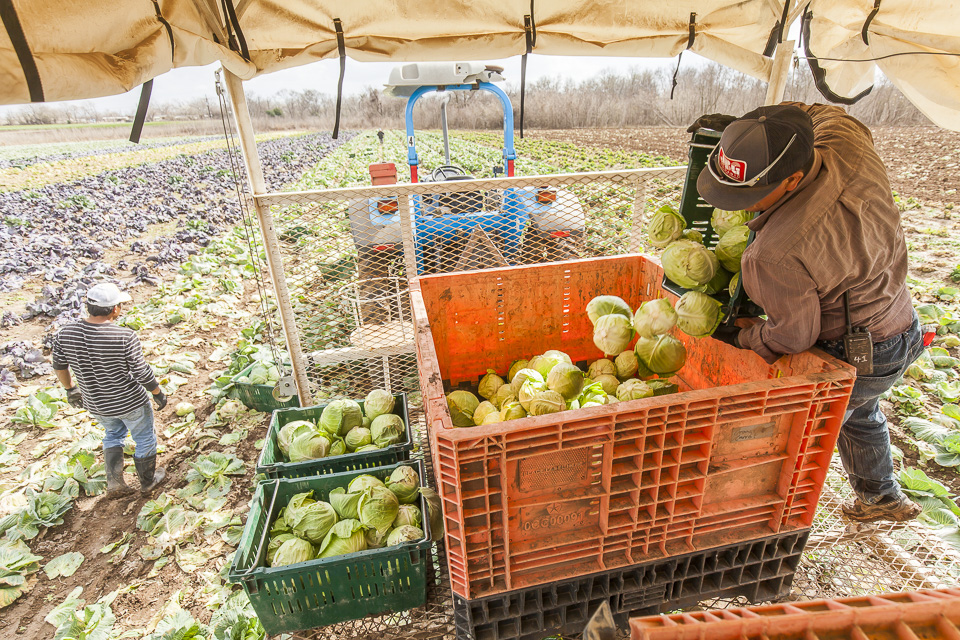 Cabbage catching a ride. Photo by Scott David Gordon.
Cabbage catching a ride. Photo by Scott David Gordon.
MEET JOHANNES COURTENS: A MAN ROOTED IN AGRICULTURE
01/13/17 — Heydon Hatcher
 Johannes Courtens. Single and ready to mingle.
Johannes Courtens. Single and ready to mingle.
A long, long time ago, Brenton Johnson was a government worker, stuck in a stale office, daydreaming about rows of carrots, blue skies, and secretly researching about how to farm when time permitted. Before we delve into that epoch, though, imagine... you have been invited to enjoy a home-cooked meal at Brenton’s house. You arrive, and as you are ogling his vast cookbook collection, you realize that he has pulled over 10 cookbooks to research all the possible ways that you could make, oh let’s say... spaghetti. He ponders each chef’s expert admonition on how to construct the best spaghetti sauce and pasta, decides which instructional pieces he deems most delicious, shuts all the books, and gets to work. This is exactly how Brenton Johnson went about starting the farm. The JBG approach to farming has foundations in a large handful of agricultural superstars' work including: Eliot Coleman of New Organic Farmer, Farmer John of Angelic Organics in the Chicago area, Andrew Stout of Full Circle Farm outside of Seattle, Nigel Walker of the Californian Eatwell Farm, John Jeavon's agricultural literature, Full Belly Farm in the Capay Valley of California, and Boston area’s Brookfield Farm.
One person and farm that inspired and served as Brenton’s “farm idol” and “farm model” is Jean-Paul Courtens and his farm, Roxbury Farm, in the Hudson Valley. Jean-Paul, who was born and raised in Amsterdam, initially studied to be an art therapist. In the midst of being drafted to fight in the Vietnam War with the Dutch forces, he was introduced to Rudolf Steiner’s anthroposophical philosophy, and Warmonderhof, a small 4-year agricultural school based in biodynamics that integrates education on farming practices as well as marketing and economic elements. His deep-seated love of botany flourished and he began his journey into the depths of the agriculture world. After finishing school, he decided Holland was no longer a good fit for him, and eventually ventured across the pond to the lush Hudson Valley. He founded Roxbury Farm, a biodynamic organic farm.
During a time of reorganization at Roxbury, a farm notorious for planning meticulously during the off-season, the farm created a crop and harvest manual that they decided to publish online. In a time where there was a shortage of information available to those who took an interest in medium-scale farming, these manuals offered enlightened insight into what it takes to run a midsize farm. This information spread the world-round and farmers internationally learned about the farming process from these manuals. Where some people would safeguard company secrets, Roxbury’s business model inherently believes in sharing information, as they thought then and think now that a robust agricultural industry was/is ultimately good for business, plus an educated customer base is beneficial for everyone. This manual and Jean-Paul’s sage counsel was integral to Brenton and the advent of JBG.
 Brenton and Johannes in December 2015.
Brenton and Johannes in December 2015.
Thus, when Johannes Courtens, Jean-Paul’s son, took a season off in the winter of 2015, disillusioned with his foray into the solar industry, a new relationship burgeoned in the Roxbury-JBG saga. He spent about 5 months on the road and with a tip from his father to check out JBG, popped down to Austin to see what Texas had to offer. He wanted more experiences with farms similar to his family’s, and since JBG was a bit bigger, operated year-round, and had more employees, he felt like there was more to learn and explore. Jump to the present, Johannes is working with us for a couple months during the spring season. We are elated to have him as a part of the farm-team. So, please take a moment to learn more about his story, and help us welcome him to the Austin community!
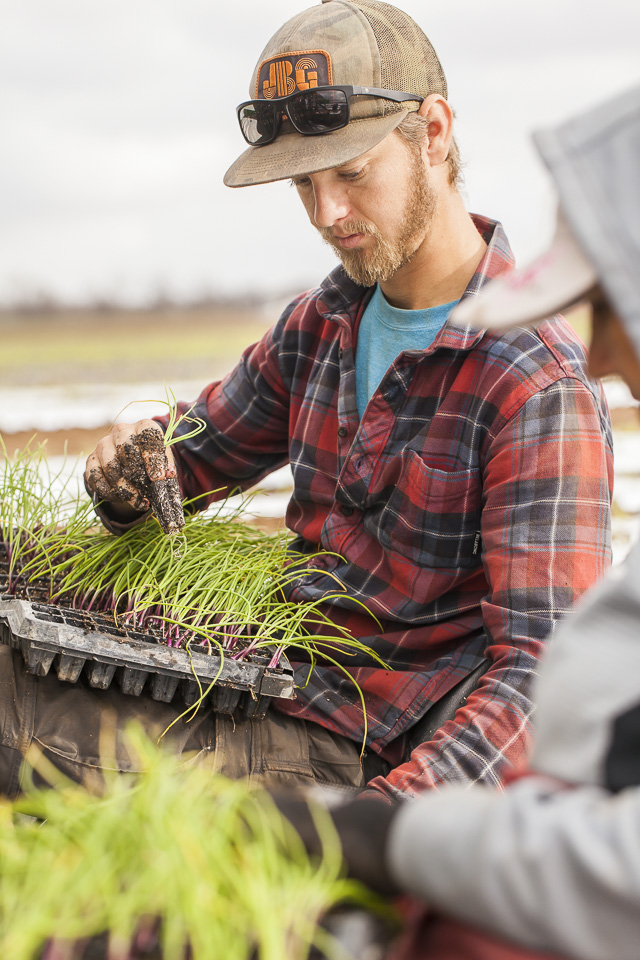 Johannes planting onions. Photo by Scott David Gordon.
Johannes planting onions. Photo by Scott David Gordon.
Where did your grow up? I’m from upstate NY. I grew up in the Hudson Valley.
Do you have a big family? I do have a big family, though my dad only has one sister... My mom, on the other hand, has 8 brothers and sisters, from New York. I have 21 cousins on my mom’s side! My dad is from Holland, he grew up in the Netherlands and moved to Camp Hill, Minnesota where he met my mom. My parents divorced when I was 10. My family has a wonderful relationship now post-divorce, fortunately. In my immediate family I have two siblings, a brother and a sister. I’m the middle child.
Can you tell us a little about your family’s farm, Roxbury? It’s run and operated by Jody, my stepmother. It was founded by my father. The farm celebrated its 25th anniversary this past year... I’m a little older than the farm. It’s a biodynamic CSA farm. Most of our market is just the CSA. We serve about 1200 families in our CSA program, and do about 500 winter shares. We are on 400 acres currently. We are going to close on about 60 more in the coming year. Some of the land is prime vegetable land, and some of it is great for pasture. We’ve taken some stuff out of vegetable land, and put into pasture because it just wasn’t productive. We are huge believers that if you are going to spend the time and labor doing something, and you get mediocre food out of it, it’s not really worth the time. We already have enough work to do on the existing prime land, so we’ve kind of nitpicked what’s best.
We’re able to then use the pasture land to justify a lot of the equipment we need for the cows, some of the sheep, and pigs. We also use a lot of that land for hay and straw. We also produce our own straw, roughly around 200-something bales of bedding straw a year, and also use it in mulching... that means that we can both mulch with plastic, and also with straw, which is also good for the soil. That keeps it more of a closed loop system. Otherwise, to mulch with straw only would be unfeasible, it would be too expensive to buy.
The animals kind of pay for themselves, because we can sell the meat. It’s a break-even operation, honestly. At least at this point, because we aren’t very large. We are able to recycle a lot of the food waste with the animals. The pigs eat a ton of that, but the cows are kind of picky. People love lamb, we sell a ton of it.
We have land that is strictly kept for wild land. It’s kept that way because we want to promote a healthy ecosystem on the property. If we were to clear-cut all the land on the property, it would be nice to use it in the short-term, but we would ultimately worry about compromising too much of the balance. There is a creek neighboring the property, so we don’t want too much of the operation to get too close to the creek for flooding reasons. We are on a hundred year floodplain that has flooded about 4 or 5 times.
Can you tell us what a biodynamic farm is - what are some practices that make a farm biodynamic? First off, we are also a certified organic farm now. The biodynamic element is way more philosophical. We aren’t planting with the moon phases or anything, but we do have some things that we do structurally on the farm. We have managerial elements touching on people’s autonomy on the farm... we’re able to have a work environment where people feel safe. For example, we used to start the day where everyone just gets to it and starts working. Now, we start in the morning with Calendar of the Soul which is written by Rudolf Steiner. For every week in the year, he has a poem… there are hundreds. Jody reads that, and then everyone kind of checks in with each other. People are surprisingly honest, letting you know if they had a bad night or what’s going on in their lives. It’s great because it lets you know where everyone is at. We say it in Spanish, too. We have four women from Mexico working on the farm crew, so one of them says it in Spanish, and that’s the start of our day.
One of the more relevant things that are strictly biodynamic that we do are spray preparations. Preparations were called ‘500’ because Rudolf Steiner wanted to be relevant in the scientific community, but the truth is that there isn’t really any substantial evidence that what we do really makes a difference, but we can say that we have definitely seen differences. One of the things we do is bury cow horns, from lactating cows, and we fill them with manure and bury them underground for the entirety of the winter. I don’t want to get too voodoo here, but we just realize on the farm that there are things that we don’t know about that are not scientific or quantifiable, but we recognize are there. These are different ways that we can have intentions towards showing that we don’t own this land, instead the land is giving to us. We have to also be good to it, for it to be good to us. Some people are very religious about biodynamic farms, we definitely are not. We are very practical. We spray organic sprays for pests, we aren’t against that. We treat our animals with antibiotics, too. We cannot stand animal’s suffering for any reason. It’s a healthy balance between science and spirituality. That’s what Rudolf Steiner intended, and he’s the founder of anthroposophical philosophy - the meeting of agriculture, health, and education.
How does growing up on a farm alter the way that you look at the world around you? There’s always a different way to look at something. No one’s always going to sit around and explain everything to me. At a young age, I figured that out quickly. I had a close friend growing up who was raised on a nearby dairy farm. I would help them out sometimes on their farm. They loved riding around on quads... so one day I went over and we were going to ride on some of them; but alas, one of them wasn’t functioning. The first thing we did was go to my friend’s father, and ask him if he knew what was wrong and/or if he could fix it. He responded that he didn’t know, but if we could fix it, we could ride it. After sitting around blindly banging on things for awhile, we finally figured it out. Through trial and error, we were able to do what we wanted and have some fun that day. It took a long time, but that’s a good example of what it’s like growing up on a farm. There’s never a dull moment, and there’s always a different way to approach a problem. It definitely allows you to think critically about a lot of things. You also learn that different perspectives are always beneficial and good to consider. Someone might have better input than you on an issue that needs solving quickly.
What are you doing here at JBG? The reason I’m here in Austin is to learn a new perspective on the same thing that I’ve been doing. JBG is very similar to Roxbury, growing food for a community, local in scale with pretty awesome technology. It’s also nice to help out with something during the winter. More specifically, I’ve been working with Montana, one of the JBG farm managers, and some of the other crew members. We are trying to develop some transplanting crews to start planting for the season. We’ve done a lot already, but there’s a ton more to do.
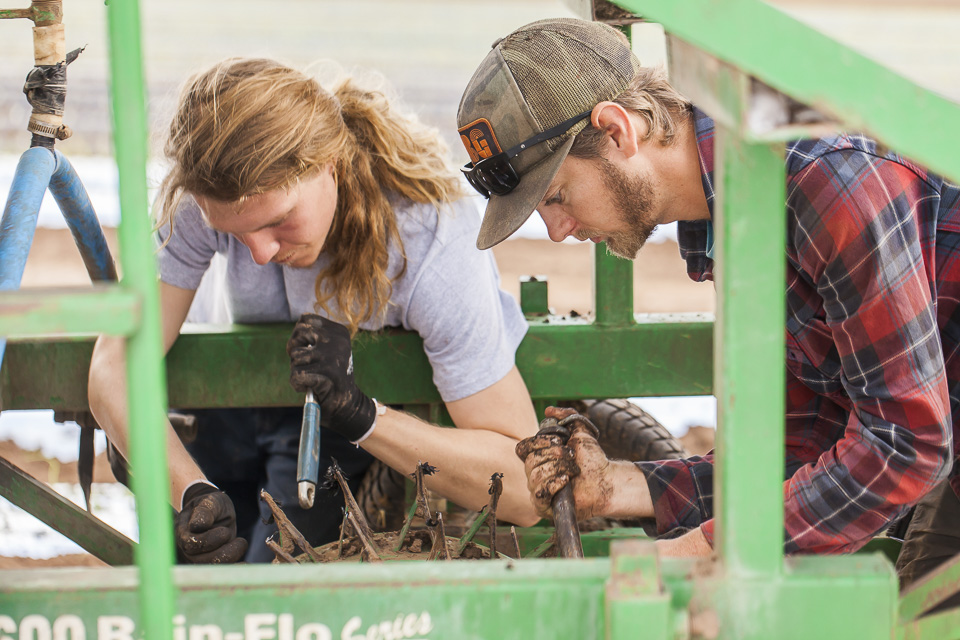 Johannes at work. Photo by Scott David Gordon.
Johannes at work. Photo by Scott David Gordon.
Does Roxbury dabble in wholesale? Can you tell us a little about your CSA? Does Roxbury participate in farmers’ markets? Regarding the first question, that’s actually part of the reason that we are certified organic now, which was new in 2016. It wasn’t necessarily beneficial for us previously, but what we are seeing now is that there is a saturated market and a very niche market. There’s a ton of CSAs in the Hudson Valley. I mean I’ve never seen such a concentration of CSAs except maybe in Northern California. There’s so many farms available. They are mostly small scale, too. So, if we aren’t able to sell our CSA shares, to what our budget needs, we then have to supplement with wholesale.
We do only one market now, we did two before, but we weren’t seeing enough profit. We do some work with wholesalers, but we are mostly market direct wholesalers. We have some cool programs that work with restaurants in NYC, Albany, and the general Hudson Valley, too. They are able to come and pick up produce right from the farm, or sometimes we deliver directly to the restaurants. We’re diversifying right now because it’s necessary. We also sell meat since we grow our meat. That’s definitely an value-added for our customers. We do a meat CSA - people can pick and choose a meat share depending on what they want, how much they want, and also depending on the time of year. With the winter share, we send pre-boxed meat, too.
Most of our CSA sites are market style, and we have a really awesome set of site coordinators. They receive a free CSA for doing the coordinating work, as they are out in their community evangelizing, and keeping the customers coming back time and time again. It’s amazing. Most of our money comes from the CSA. JBG is a year-round farm which changes the game completely. The time periods are just so different with regard to farming in New York and farming down here in Texas.
What do y’all do in the off-season? Travel to Austin! No, but seriously, my parents have done a lot of things in the past. We have a winter share that goes until February, then we are done for a two-month block… the farm goes pretty dormant. We have a full-time hire who works with the animals. He lives on the farm and cares for the animals in the off-season. Though, even he can take on another full-time job in the off-season, and still be able to handle the animal workload.
Over the years, my dad and Jody have done a lot of conferences. For the most part, they go to at least four or five every year. One year, we even went to Fairbanks, AK to talk about what they do. Some conferences have agendas, for example, gentle management of animals or cover crops (cover crops are a hot topic right now!). People have a lot of interest in hearing them talk about their experience and what has worked for us at Roxbury.
We also do a lot of preparation for the next season. Our farm is highly planned. There’s a lot of management during the season, but a lot stuff is very meticulously pre-planned. When we are seeding, when we are planting, etc. is already decided before the season begins. Equipment maintenance happens in the off-season as well as in the early spring before we break ground.
What’s your favorite season of veggies? I love the fall, fall brassicas especially. I love tomatoes, surprisingly, too. They aren’t my favorite to harvest, but they definitely are my favorite to have fresh. Mid-summer veggies, too. I love sweet corn. Sweet corn is kind of the top... it’s 9-weeks/successions of sweet corn. It’s a pain to grow, but once it comes up and fruits out, it’s really nice.
Sweet, juicy, fresh, organic sweetcorn! #roxburyfarmcsa #certifiedorganic #delicious #sweetcorn
A photo posted by Johannes Courtens (@johannescourtens) on
If you were a veggie, what would you be? An onion. I would definitely be a storage variety onion, too, not a fresh onion - those are soft and don’t last at all. I’ve got many layers.
Why does buying locally matter and why should people care about farms? I was working in the renewable energy sector for a while and started to realize farms are actually one of the biggest reasons for global warming and why this planet is being destroyed. I don’t think that people actually put those two things together usually. A third or more of the greenhouse gases, and some of the devastation of wildlife is caused by industrial agriculture.
If you want to support a better food system, smaller isn’t always better, because of course it’s harder, but knowing what you are getting locally and being more connected with that is a HUGE step in the right direction. If you think seasonally, you are going to eat more seasonally. Having bananas is awesome and a luxury, but how many republics have been toppled on behalf of banana plantations? There’s a lot of insanity in farming, but it’s becoming more sane when you buy local and have a community around that. I think in ancient times the farmers made up part of the top level of the caste system. Industrialization drove them to the bottom which I think is wrong. It kind of still seems that way in modern society, too. Hopefully, when people realize that food is scarce, and that it is, in fact, hard to grow, people will start caring and worrying about farmers. But we’ll see.
What does 'Community Supported Agriculture' mean to you? 'Community Supported Agriculture' is a commitment by people, not just for getting food as a reward for paying money, but it’s the idea that they are behind you, and believe in what you are doing. If the farm fails with something during the season, the finances are going to be okay since you have people backing the farm. By providing funds up front, the farm is able to run as efficiently as possible, and not being tied up by all the other clutter, like building the capital.
Trying to grow food first and then sell it is kind of an insane thing. Food is not a commodity, it’s a living thing, but it is a commodity in our economy. What CSA says is that it’s not a commodity, it’s a commitment. It’s something that’s hard to do. If people rally around a farm, it’s like crowdfunding. People are saying, I really think this product idea is awesome. It’s crowdfunding for food. The reward is high quality vegetables for weeks on end.
What is one thing that you want people to know about you? I’m not a farmer at heart. I have always enjoyed working on farms, though. I always thought that I would be a photographer or artist of some kind. I tried and pursued that track, and realized that just wasn’t for me. Doing the client work didn’t work well, I’d rather have more say in my fate and where I was going artistically. I wasn’t going to do my art for other people on their terms.
Despite not pursuing it professionally, photography is a huge part of my life. My artistic side must have outlets, and luckily, agriculture has a lot of artistic elements. I do not think that it’s by chance that my father was an artist in his earlier years, and he was drawn to farming, too. There so many beautiful things in the field. Nature holds so many secrets, and there is so much beauty. I’m constantly inspired on the farm. I am actually shooting way more now than before.
If you were stuck on a desert island, what three things would you bring?
- A knife
- I would make sure that I had a belt on
- A plastic tarp, because you can do a lot of things with that
CSA BOX CONTENTS WEEK OF JAN 16TH
01/17/17 — Scott
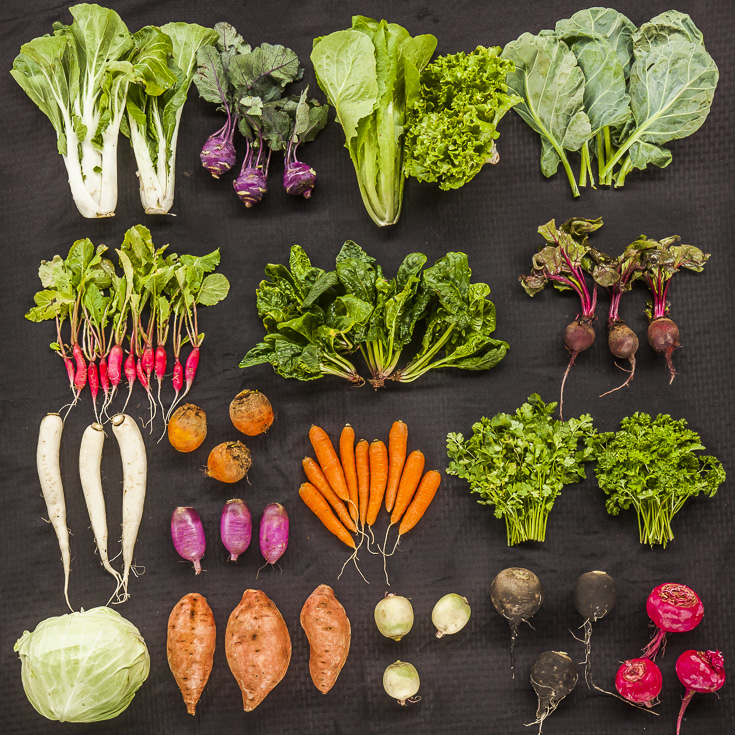 CSA Box Contents Week of Jan 16th
CSA Box Contents Week of Jan 16th
Large Box
Beet, Red
Brussels Greens
Brussels Sprouts
Cabbage, Green
Carrot, Orange
Greens, Arugula
Greens, Spinach
Greens, Tatsoi
Herb, Parsley, Curly
Potato, Sweet
Radish, Black Spanish
Radish, Red
Turnip, Purple Top
Beet, Red
Brussels Greens
Brussels Sprouts
Cabbage, Green
Carrot, Orange
Greens, Arugula
Greens, Spinach
Greens, Tatsoi
Herb, Parsley, Curly
Potato, Sweet
Radish, Black Spanish
Radish, Red
Turnip, Purple Top
Medium Box
Beet, Red
Bok Choy
Brussels Greens
Cabbage, Green
Carrot, Orange
Greens, Mizuna
Greens, Salad Mix
Greens, Spinach
Herb, Cilantro
Potato, Sweet
Radish, Green Meat
Beet, Red
Bok Choy
Brussels Greens
Cabbage, Green
Carrot, Orange
Greens, Mizuna
Greens, Salad Mix
Greens, Spinach
Herb, Cilantro
Potato, Sweet
Radish, Green Meat
Small Box
Brussels Greens
Cabbage, Green
Carrot, Orange
Greens, Spinach
Herb, Cilantro
Lettuce, Mixed head bag
Onion, Green
Radish, Purple Daikon
Brussels Greens
Cabbage, Green
Carrot, Orange
Greens, Spinach
Herb, Cilantro
Lettuce, Mixed head bag
Onion, Green
Radish, Purple Daikon
Individual Box
Beet, Red
Cabbage, Green
Carrot, Orange
Greens, Chard, Rainbow
Lettuce, Mixed head bag
Turnip, Scarlett
Beet, Red
Cabbage, Green
Carrot, Orange
Greens, Chard, Rainbow
Lettuce, Mixed head bag
Turnip, Scarlett
CSA BOX CONTENTS WEEK OF JAN 16TH
01/18/17 — Scott
 CSA Box Contents Week of Jan 16th
CSA Box Contents Week of Jan 16th
Medium Box
Brussels Sprouts Greens
Cabbage, Green
Carrot, Orange
Greens, Spinach
Herb, Parsley, Curly
Kohlrabi, Purple
Lettuce, Mixed head bag
Potato, Sweet
Radish, Black Spanish
Turnip, Scarlett
KALE, POTATO, AND ITALIAN SAUSAGE SOUP WITH A POACHED EGG
01/18/17 — Heydon Hatcher
by Megan Winfrey
Call me crazy, but I'm am loving this cold, rainy weather! I'll take any excuse to bundle up in my often neglected jackets, sweaters, and slippers, sip hot toddies and have soup for every meal. This week's recipe is probably my favorite of the last few weeks. It's simple, delicious, gorgeous, filling, and gets better and better as leftovers. And poached eggs, heaven on earth - right!? I used to be too intimidated to even think about poaching an egg, but after learning a few simple tricks, they're one of my favorite things to whip up for any meal.
Kale, Potato, & Italian Sausage Soup with a Poached Egg![IMG_4578]()
Heat a large soup pot over medium high heat. Add the onion and crumbled sausage, cook until the sausage is brown and the onions translucent. Stir in milk, half and half, chicken stock, potatoes, oregano, and red pepper flakes and bring to a boil. Immediately reduce to low and simmer for about 30 minutes, until the potatoes are tender. Season with salt and pepper. Add the kale leaves and simmer for another 15 minutes, until the kale is tender but not stringy.
To poach the eggs: It is important to poach the eggs one at a time to ensure an even cook and pretty outcome. Fresh, pasture-raised eggs make all the difference here. The eggs I get from JBG are delicious, and they come from one of two local farms - Fruitful Hill or Coyote Creek, but I digress... To poach: Crack one egg into a glass. Fill a saucepan just over half way with water. Add a splash of white vinegar. Bring to a steady simmer. Hold the egg-in-a-glass in one hand, while using a spoon to swirl the simmering water into a whirlpool with the other (the spinning water will force the white of the eggs to form into a ball.) With the water spinning, gently drop the egg in. Turn the heat down if necessary to keep the water at a steady simmer. Let the egg cook for 3 minutes, then remove with a slotted spoon onto a paper towel. Repeat this process with the rest of your eggs, and you can continue using the same water. Once drained, place your beautiful poached egg atop a bowl of soup and top with fresh cracked pepper and Parmesan cheese.
Call me crazy, but I'm am loving this cold, rainy weather! I'll take any excuse to bundle up in my often neglected jackets, sweaters, and slippers, sip hot toddies and have soup for every meal. This week's recipe is probably my favorite of the last few weeks. It's simple, delicious, gorgeous, filling, and gets better and better as leftovers. And poached eggs, heaven on earth - right!? I used to be too intimidated to even think about poaching an egg, but after learning a few simple tricks, they're one of my favorite things to whip up for any meal.
Kale, Potato, & Italian Sausage Soup with a Poached Egg
- 1 lb. ground Italian sausage
- 2 sweet potatoes or 4 red potatoes, cubed
- 3-4 carrots, cubed
- 2 cups kale leaves, packed (I used a mixture of purple and curly)
- 4 cups whole milk
- 2 cups half and half
- 2 cups chicken stock
- 1 onion, chopped
- 1/2 tsp. dried oregano
- 1/2 tsp. red pepper flakes
- salt and cracked pepper, to taste
- 1 egg per serving
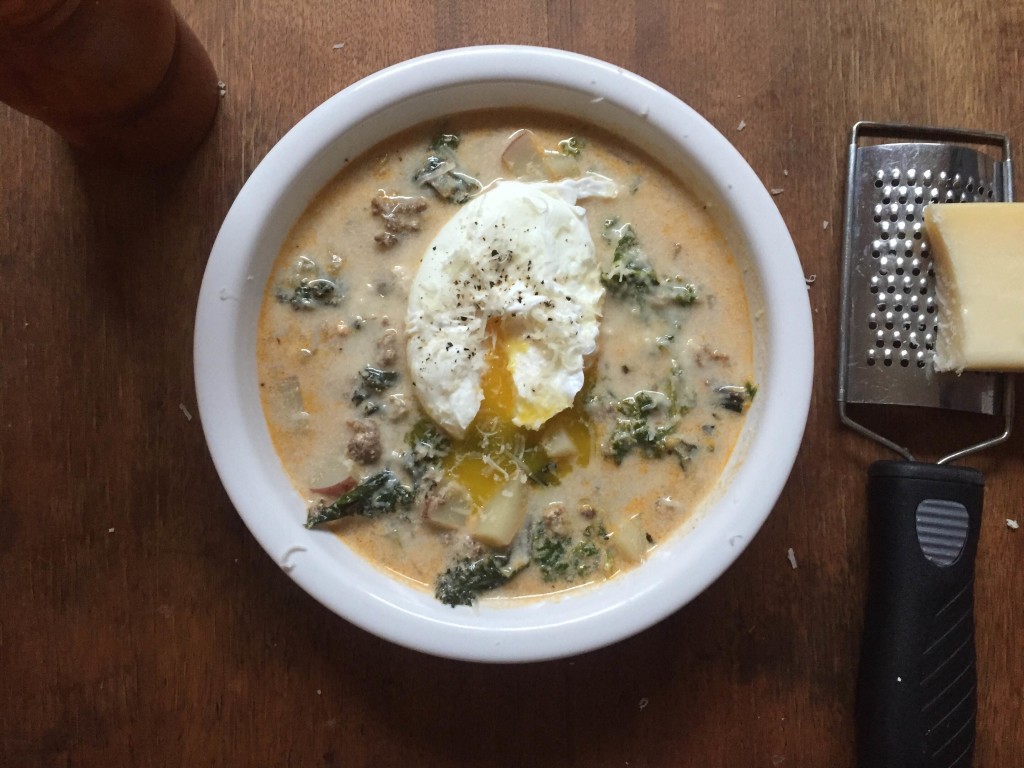
Heat a large soup pot over medium high heat. Add the onion and crumbled sausage, cook until the sausage is brown and the onions translucent. Stir in milk, half and half, chicken stock, potatoes, oregano, and red pepper flakes and bring to a boil. Immediately reduce to low and simmer for about 30 minutes, until the potatoes are tender. Season with salt and pepper. Add the kale leaves and simmer for another 15 minutes, until the kale is tender but not stringy.
To poach the eggs: It is important to poach the eggs one at a time to ensure an even cook and pretty outcome. Fresh, pasture-raised eggs make all the difference here. The eggs I get from JBG are delicious, and they come from one of two local farms - Fruitful Hill or Coyote Creek, but I digress... To poach: Crack one egg into a glass. Fill a saucepan just over half way with water. Add a splash of white vinegar. Bring to a steady simmer. Hold the egg-in-a-glass in one hand, while using a spoon to swirl the simmering water into a whirlpool with the other (the spinning water will force the white of the eggs to form into a ball.) With the water spinning, gently drop the egg in. Turn the heat down if necessary to keep the water at a steady simmer. Let the egg cook for 3 minutes, then remove with a slotted spoon onto a paper towel. Repeat this process with the rest of your eggs, and you can continue using the same water. Once drained, place your beautiful poached egg atop a bowl of soup and top with fresh cracked pepper and Parmesan cheese.
WEEK 3 IN PHOTOS
01/20/17 — Heydon Hatcher

It’s super muddy out at the farm this week. We are seeing some awesome golden beets and carrots out in the fields, so enjoy these winter roots while they are still around! Brussel sprouts were harvested this week, so keep an eye out for them at the markets this weekend. There’s been a ton of tractor maintenance and general spring cleaning out at the farm, too. Our cover crops are starting to look beautiful. We are relishing the final relatively quiet moments before the impending influx of transplants going out. Our greenhouse is bursting at the seams! We have so much work ahead of us! We worked this past Saturday on getting the beds ready for these transplants. Here’s to another great week, and have an awesome weekend!
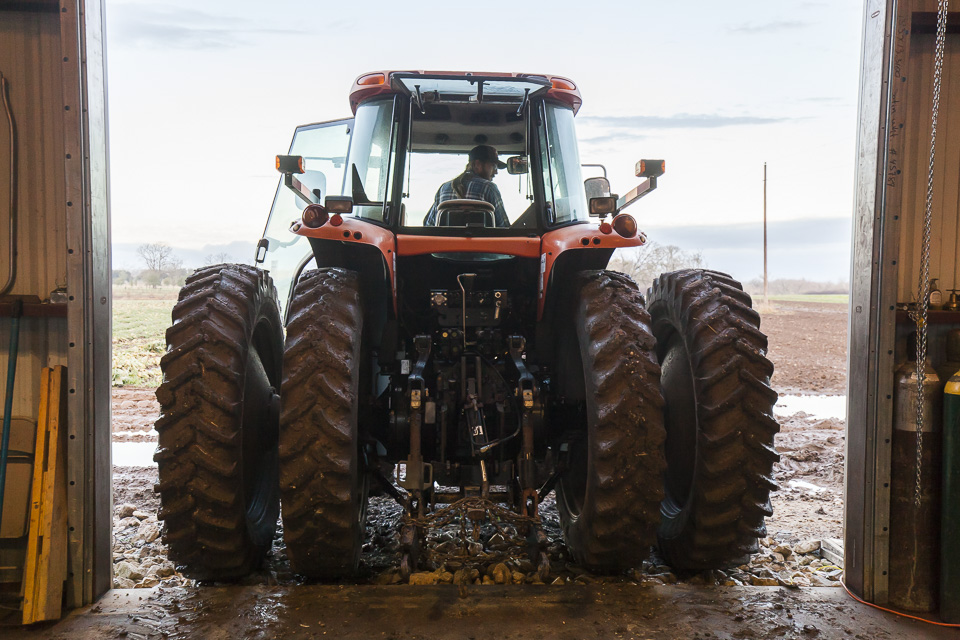 Getting the tractors fine-tuned. Photo by Scott David Gordon.
Getting the tractors fine-tuned. Photo by Scott David Gordon.
 Truck maintenance. Photo by Scott David Gordon.
Truck maintenance. Photo by Scott David Gordon.
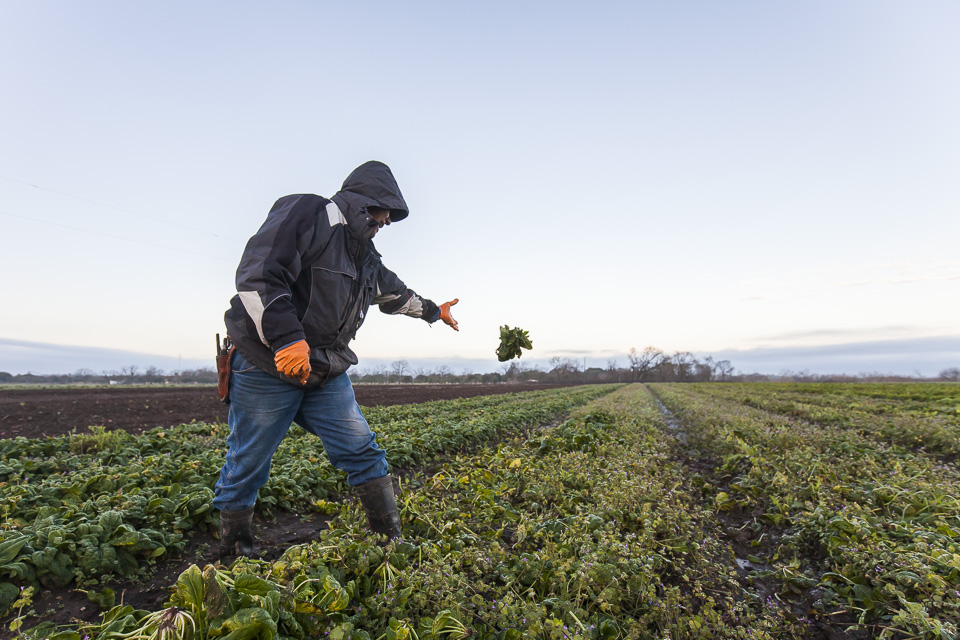 Magic! Levitating greens. Photo by Scott David Gordon.
Magic! Levitating greens. Photo by Scott David Gordon.
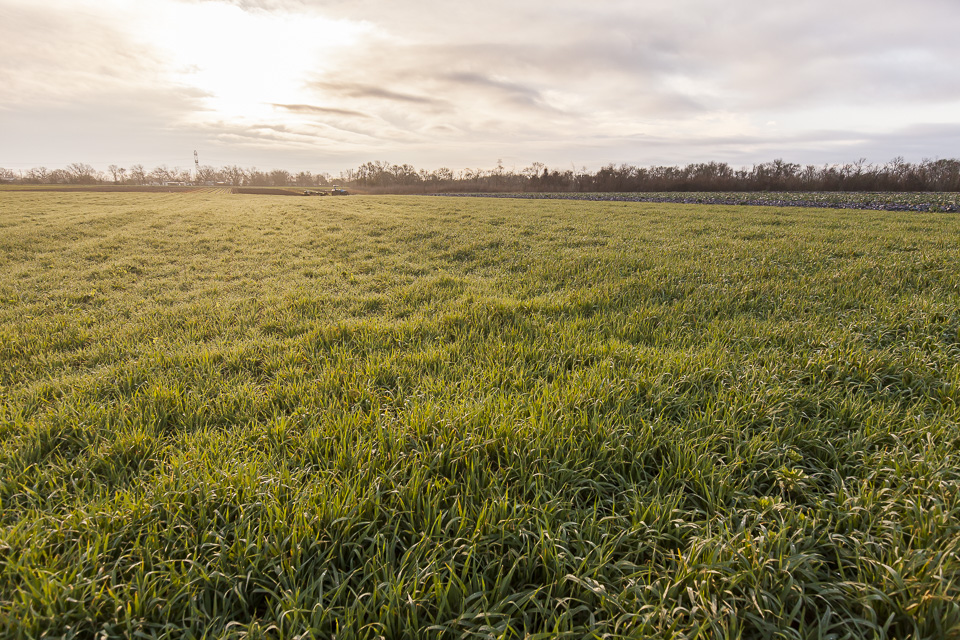 Cover crop beauty. Photo by Scott David Gordon.
Cover crop beauty. Photo by Scott David Gordon.
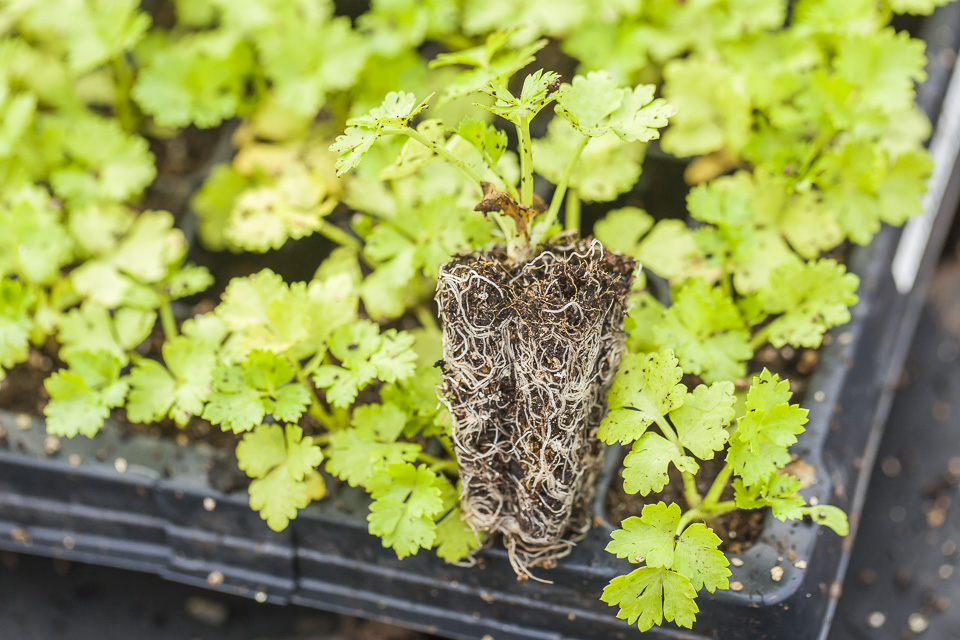 Ready to get in the ground. Photo by Scott David Gordon.
Ready to get in the ground. Photo by Scott David Gordon.
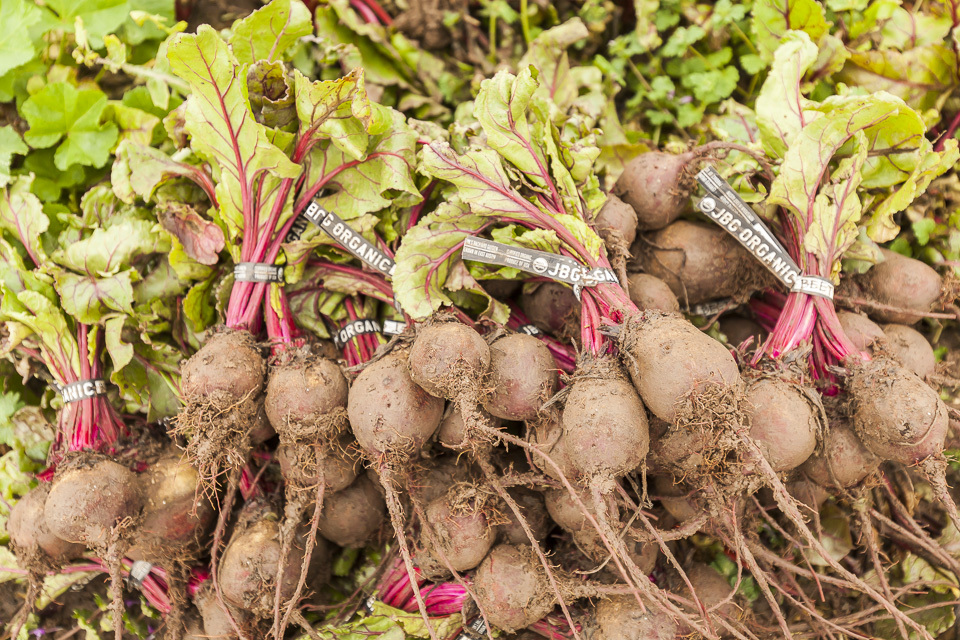 Muddy beets. Photo by Scott David Gordon.
Muddy beets. Photo by Scott David Gordon.
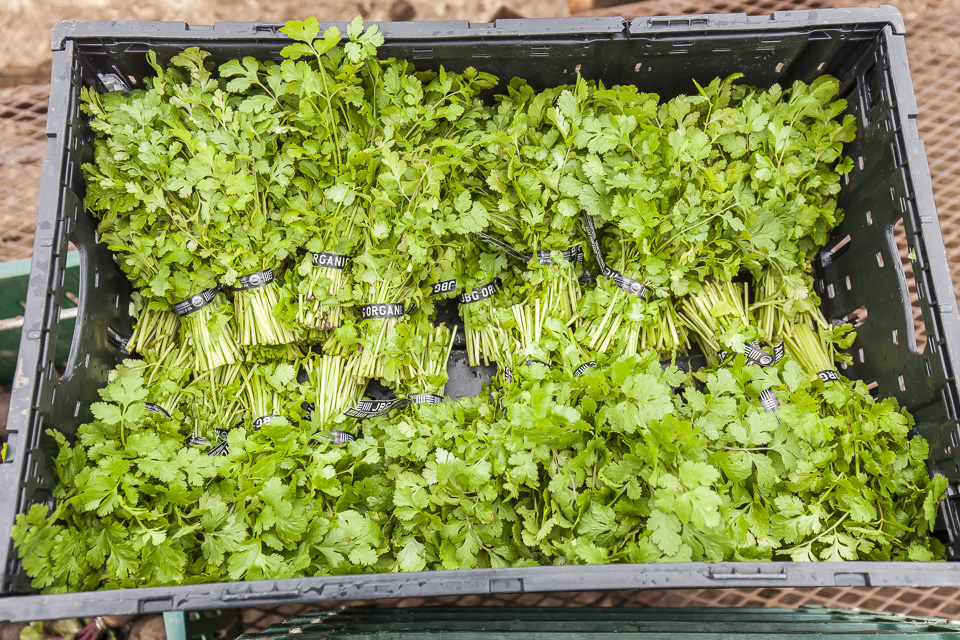 Vibrant cilantro. Photo by Scott David Gordon.
Vibrant cilantro. Photo by Scott David Gordon.
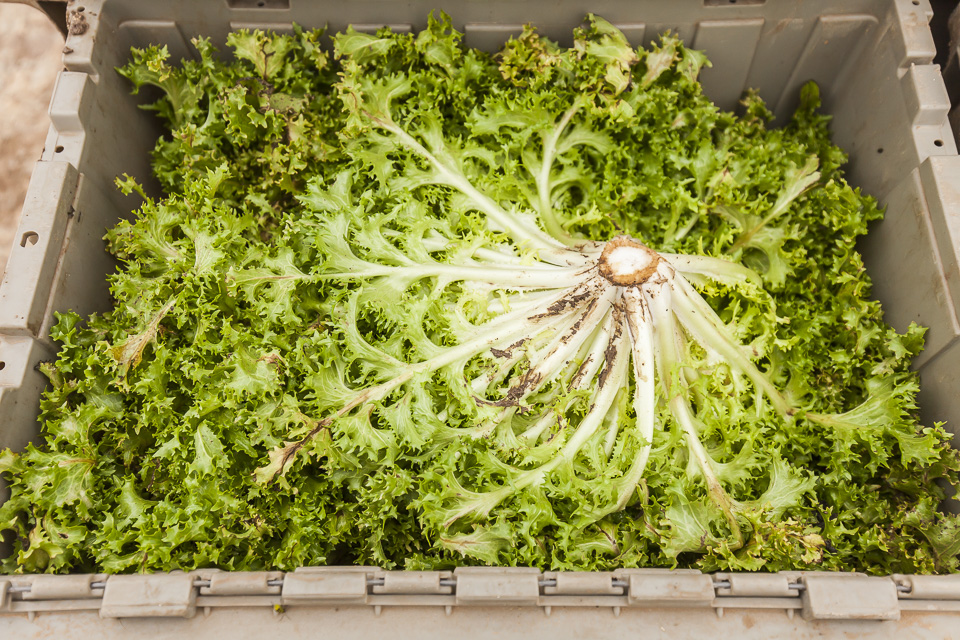 Escarole. Photo by Scott David Gordon.
Escarole. Photo by Scott David Gordon.
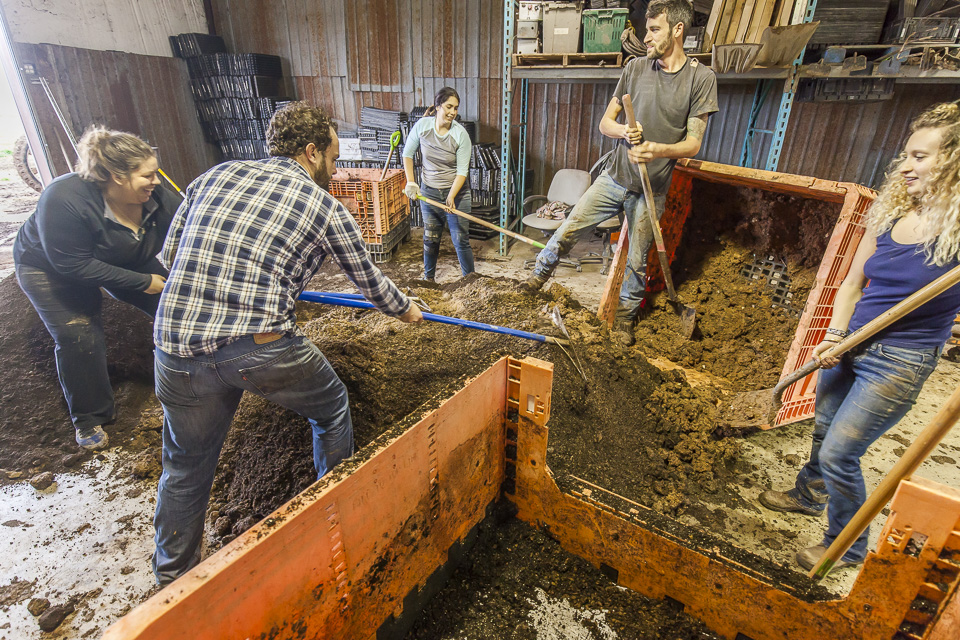 Brandon and co. havin' a muddy good time. Photo by Scott David Gordon.
Brandon and co. havin' a muddy good time. Photo by Scott David Gordon.
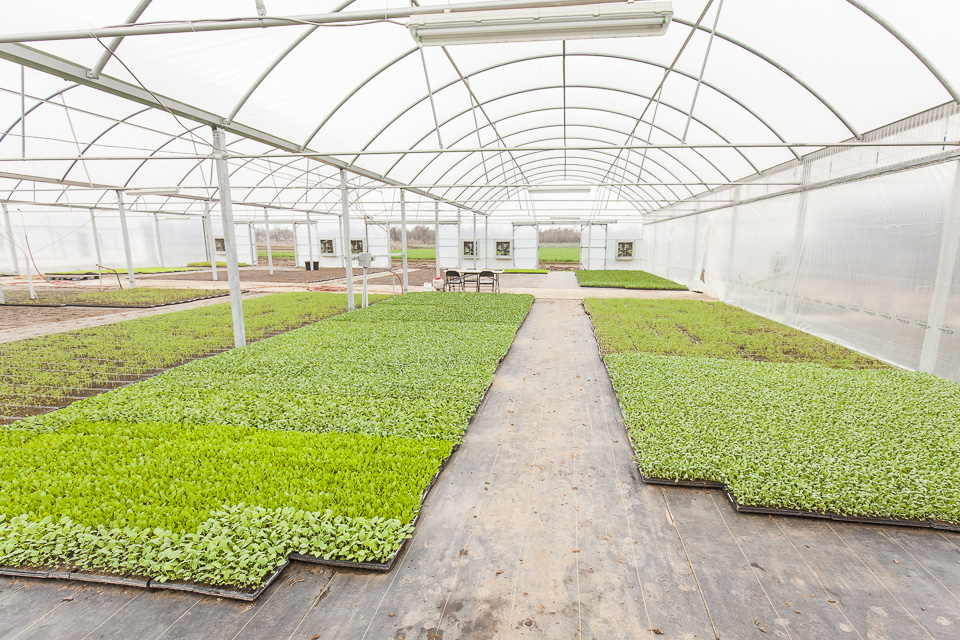 One very full greenhouse. Photo by Scott David Gordon.
One very full greenhouse. Photo by Scott David Gordon.
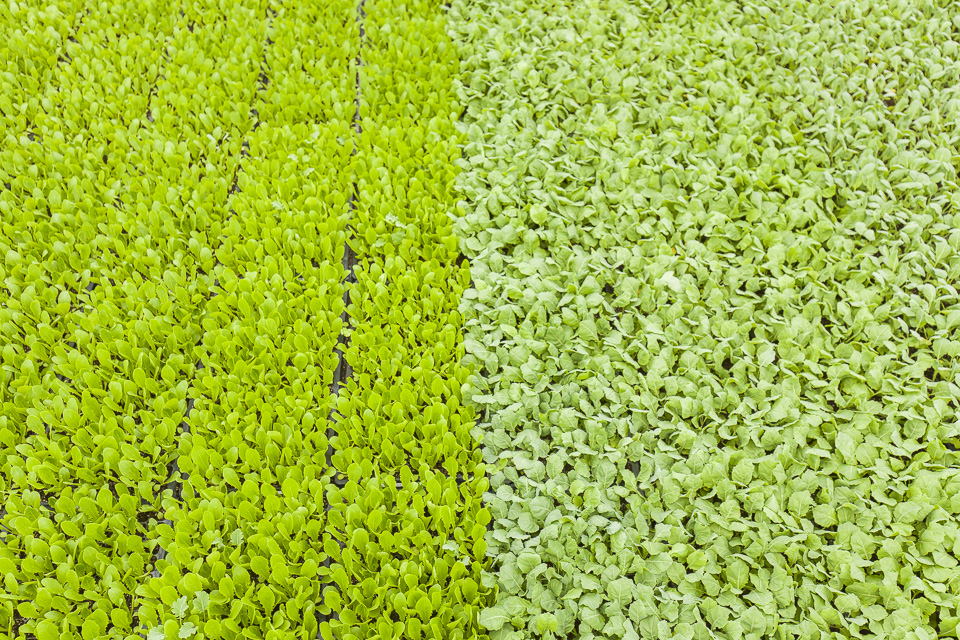 Transplant gradient. Photo by Scott David Gordon.
Transplant gradient. Photo by Scott David Gordon.
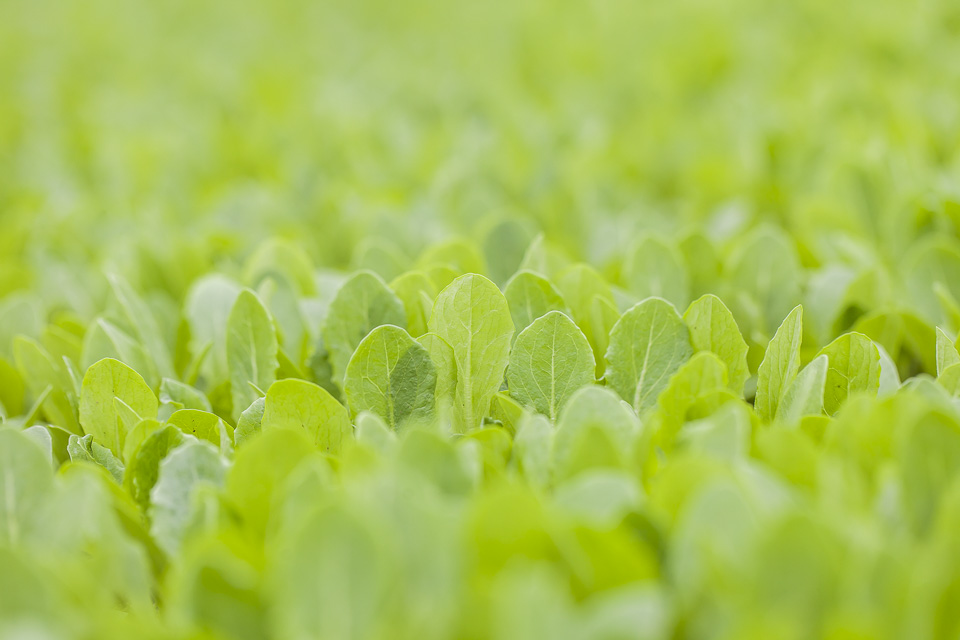 Photo by Scott David Gordon.
Photo by Scott David Gordon.
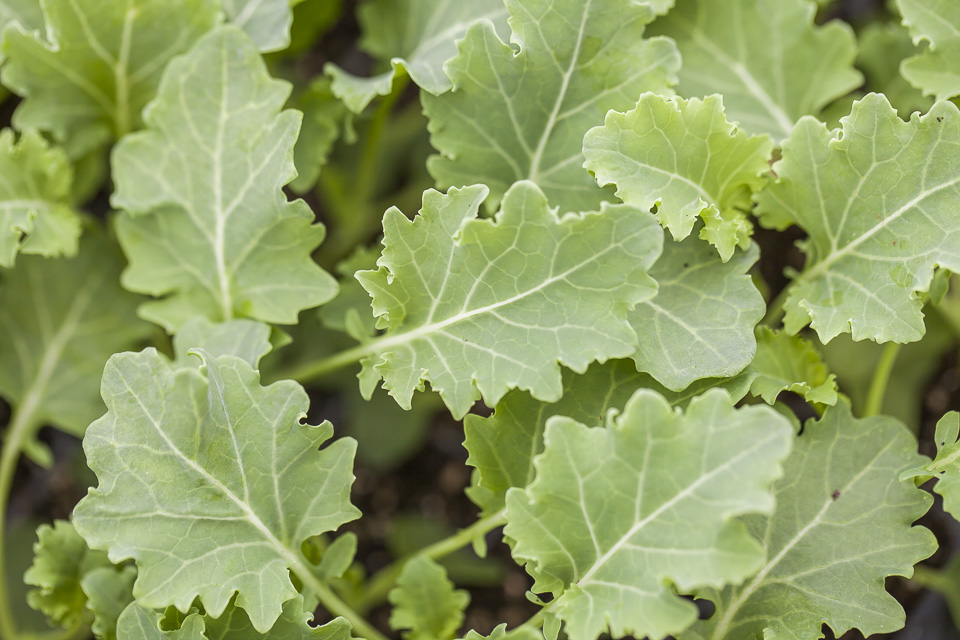 Photo by Scott David Gordon.
Photo by Scott David Gordon.
 Photo by Scott David Gordon.
Photo by Scott David Gordon.
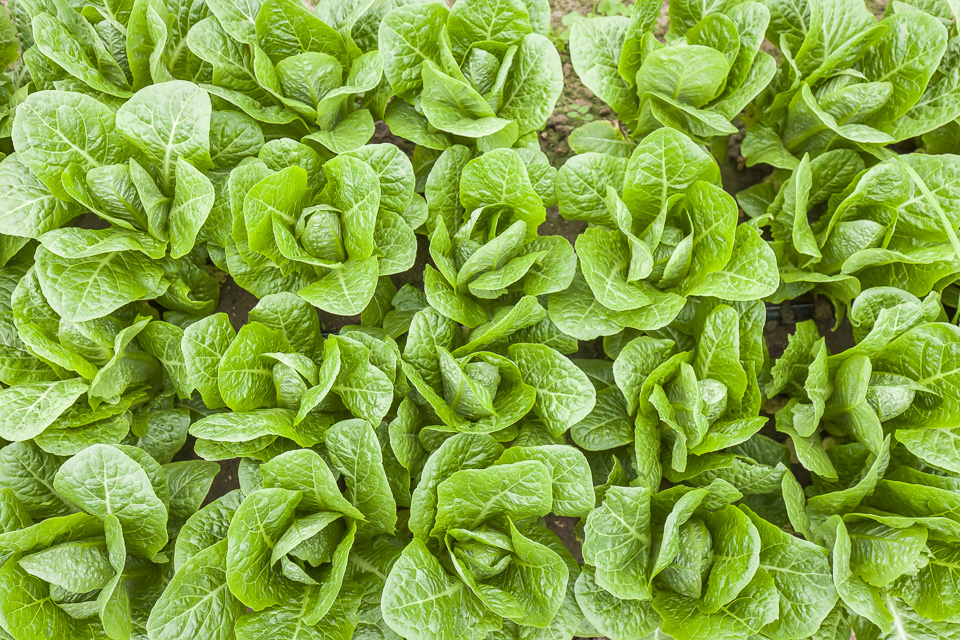 Photo by Scott David Gordon.
Photo by Scott David Gordon.
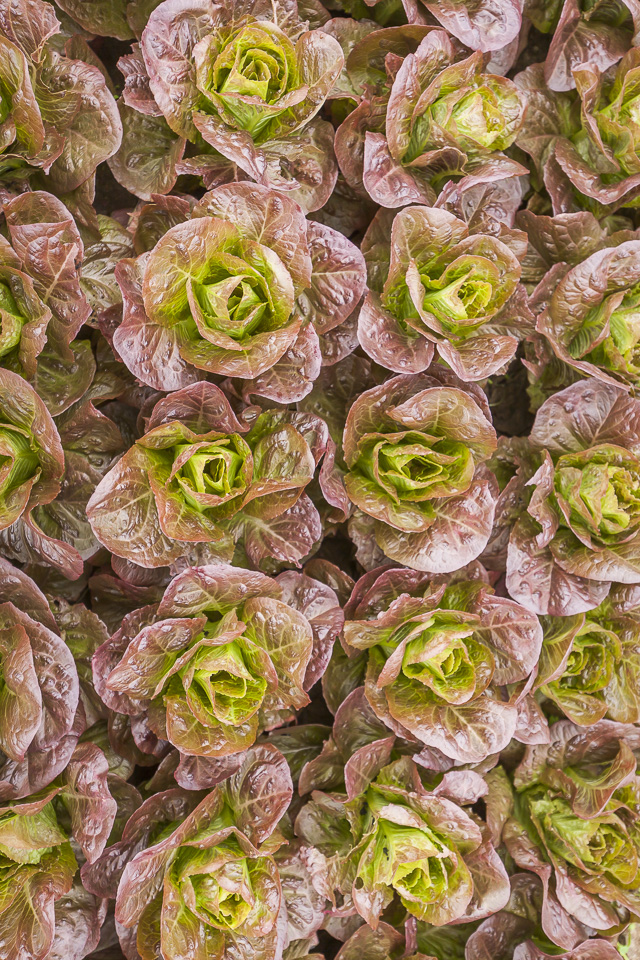 Photo by Scott David Gordon.
Photo by Scott David Gordon.
A GRAPE UPDATE!
01/20/17 — Heydon Hatcher
This week, we’ve got grapes on the mind in a big way. In case you didn’t know, we are in our third season of growing grapes! Last year’s yield was miniscule in comparison (fingers crossed) to what this year’s will be… our first bona fide FULL harvest. The harvest window is very short (two to three weeks max), but oh, how sweet it is! We are expecting this succulent crop to arrive in all it’s glory in the depths of summertime, around June and early July.
![Grapes! Photo by Scott David Gordon.]() Grapes! Photo by Scott David Gordon.
Grapes! Photo by Scott David Gordon.
Not only are we growing these to fruit, but we are also propagating them for our upcoming transplant sale! Along with persimmons, pomegranates, figs, grapefruits, lemons, limes, mandarins, and twenty different herbs, we will be selling grape plants to you, our lovely farm community! This very exciting transplant sale will be taking place three Saturdays in a row in March. That’s three opportunities for you to visit the farm and stock up on all the starters you need for your Spring Garden. On top of that, our greenhouse manager, Brandon, will be conducting a gardening workshop and dispensing master green-thumb intel with the assistance of none other than the head honcho, Brenton Johnson! Exact date TBD.
![Gardening workshop past. Photo by Scott David Gordon.]() Gardening workshop past. Photo by Scott David Gordon.
Gardening workshop past. Photo by Scott David Gordon.
When it rains at the farm, we’re always challenged to find work for our many employees - muddy conditions are not ideal for planting or harvesting. With the gargantuan amount of rainfall earlier this week, we turned to our grapes to put our staff to work. Most of the grape trellising is done in the first year, but a little needed to be done this week. On the third year of grape production, there is a lot of pruning and tying that needs to be done. For this undertaking, we called upon our grape-whisperer comrade, David, to pop by Garfield and teach us his expert ways. David lives next to our Hergotz packing shed and has been growing grapes in his backyard for years. In his tenure of tending to his grapes, he has cultivated a vast and invaluable knowledge of the fruit, specifically how to grow them in the sometimes tricky Central Texas climate. He gladly took time out of his schedule to come out and demonstrate to our crew the sometimes tricky procedure of pruning and tying grapevines.
![170119_SDG309794]()
When our grape plants first arrive to the farm, they are around one foot tall, and since the trellis training wire is about four feet tall, the baby grape plants need a training stake to reach the training wire. We had a fleet of bamboo stakes installed for the job (fun fact: bamboo doesn’t rot!). After three years of doing their thing, our grape plants have finally grown tall enough to reach the training wire. After removing these bamboo stakes, it was time for us to get busy pruning. Each grape plant had grown up to five or six different offshoots, so we needed to choose two vines on each plant that we deemed in the best shape, then tied them to the training wire. We had a grand ol’ time lopping off the unwanted vines with an electric reciprocating saw and tossed them into the middle of the row to collect later. The way in which you tie the vine to the wire is immensely important, you don’t want the vines resting on the wire, but you do want the weight of the vine pulling away from the wire. After this was done, we rearranged some of the roots, as some of them had fallen on their side. We used cedar blocks to brace those that had fallen and secure them in an upright position, enabling them to re-root.
![170119_SDG309800]() Tying the vines. Photo by Scott David Gordon.
Tying the vines. Photo by Scott David Gordon.
![Pruned and tied vines. Photo by Scott David Gordon.]() Pruned and tied vines. Photo by Scott David Gordon.
Pruned and tied vines. Photo by Scott David Gordon.
![Gathering the cut offshoot vines. Photo by Scott David Gordon.]() Gathering the cut offshoot vines. Photo by Scott David Gordon.
Gathering the cut offshoot vines. Photo by Scott David Gordon.
Our grapes are grown on grafted rootstock, meaning that the roots of the grapes are different from the fruiting part of the plant. The rootstock that we use absorbs nutrients more effectively from our soil than the original rootstock. Using different rootstock that is more suited to the Central Texas climate and soil circumvents the plants from succumbing to disease and pests, like phylloxera, a pesky microscopic insect that can wreak havoc on grapes (just look up the Great French Wine Blight and you’ll get a taste of their capabilities! Similar to the boll weevil’s effect on cotton plantations in the ‘20s). The rootstock and propagated grape plant, known as the scion, have a rooting chamber. After a couple of years if they have grown together successfully, it’s hard to find the site of the graft if everything is done properly. Pretty cool, right?
We also had to tension the trellises this week, which was quite an interesting experience since we don’t know much about the process, and also, don’t have the correct tools for it. Thank goodness for Charlotte, our assistant farm manager, who figured out a makeshift way to re-adjust the tension of the trellises using advice doled out by an old powerpoint that she unearthed online. She proclaimed it a “classic physics problem” and set out to deduce the tension of the wire. She had to hang a bucket off the training wire in the middle of two stakes and dictated the weight by adding sand and rocks. Depending on how far the bucket hung down, she gleaned the deflection of the wire. Based on how much the bucket weighs, the distance between the poles, and the gauge/strength/length of the wire (we had to call the wire manufacturer and see what the maximum weight it could bear… FYI it’s 1100 lbs!), that’s how you figure the tension! Charlotte went out with the field crew and they tensioned the wires correctly to 900 lbs. They will eventually need to be altered in the summertime, as the change in temperature will cause the wires to shrink and expand, but for now, our trellises are good to go.
![Photo by Scott David Gordon.]() Photo by Scott David Gordon.
Photo by Scott David Gordon.
Finally, we are training the canopies! The type of canopy that we collectively decided would yield the tastiest, fullest, and most voluminous harvest is the Geneva Double Curtain. This type of canopy allows grapes grow in the shade of their own leaves, and the leaves are exposed to the most sun and air. Trust us, these are going to be so tasty! We have two different varieties of grapes growing currently: Victoria Red, a super sweet and delicious table grape bred specifically for Texas soil and climate, and Blanc du Bois, a hardy variety with an exquisite taste. Yum!
![Photo by Scott David Gordon.]() Photo by Scott David Gordon.
Photo by Scott David Gordon.
We are trying our darnedest to get a more expansive offering of fruits for the CSA. It’s a constant struggle to find fruits that will grow successfully in our climate, but we know that people love more fruits than just tomatoes! On top of our grape venture, we are growing figs, two varieties of pomegranates, two kinds of loquats, pears, and planting citrus this year, too! So keep a look out, we have some really exciting produce headed your way. 'Til next time!
![Satsumas in the summertime. Photo by Scott David Gordon.]() Satsumas in the summertime. Photo by Scott David Gordon.
Satsumas in the summertime. Photo by Scott David Gordon.
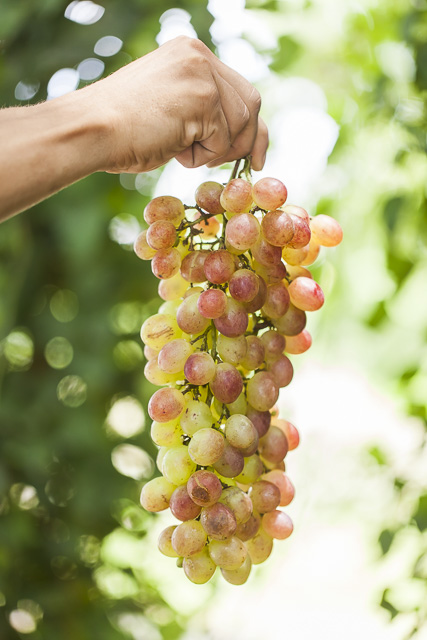 Grapes! Photo by Scott David Gordon.
Grapes! Photo by Scott David Gordon.
Not only are we growing these to fruit, but we are also propagating them for our upcoming transplant sale! Along with persimmons, pomegranates, figs, grapefruits, lemons, limes, mandarins, and twenty different herbs, we will be selling grape plants to you, our lovely farm community! This very exciting transplant sale will be taking place three Saturdays in a row in March. That’s three opportunities for you to visit the farm and stock up on all the starters you need for your Spring Garden. On top of that, our greenhouse manager, Brandon, will be conducting a gardening workshop and dispensing master green-thumb intel with the assistance of none other than the head honcho, Brenton Johnson! Exact date TBD.
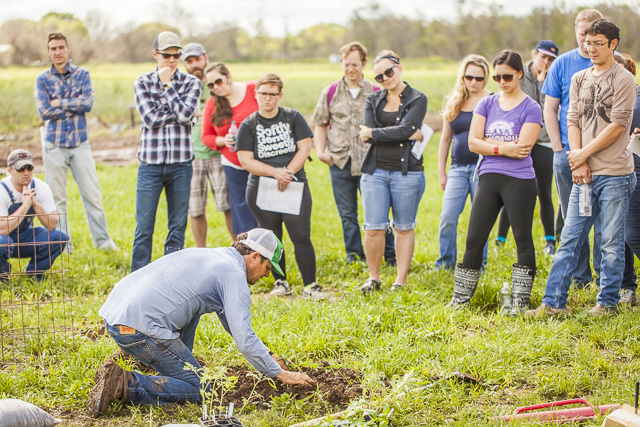 Gardening workshop past. Photo by Scott David Gordon.
Gardening workshop past. Photo by Scott David Gordon.
When it rains at the farm, we’re always challenged to find work for our many employees - muddy conditions are not ideal for planting or harvesting. With the gargantuan amount of rainfall earlier this week, we turned to our grapes to put our staff to work. Most of the grape trellising is done in the first year, but a little needed to be done this week. On the third year of grape production, there is a lot of pruning and tying that needs to be done. For this undertaking, we called upon our grape-whisperer comrade, David, to pop by Garfield and teach us his expert ways. David lives next to our Hergotz packing shed and has been growing grapes in his backyard for years. In his tenure of tending to his grapes, he has cultivated a vast and invaluable knowledge of the fruit, specifically how to grow them in the sometimes tricky Central Texas climate. He gladly took time out of his schedule to come out and demonstrate to our crew the sometimes tricky procedure of pruning and tying grapevines.
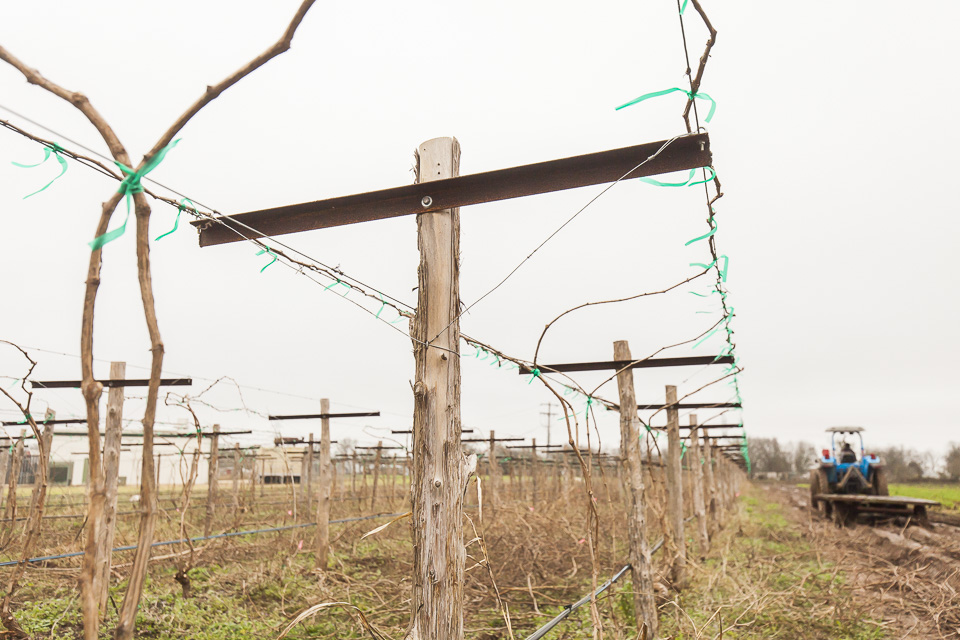
When our grape plants first arrive to the farm, they are around one foot tall, and since the trellis training wire is about four feet tall, the baby grape plants need a training stake to reach the training wire. We had a fleet of bamboo stakes installed for the job (fun fact: bamboo doesn’t rot!). After three years of doing their thing, our grape plants have finally grown tall enough to reach the training wire. After removing these bamboo stakes, it was time for us to get busy pruning. Each grape plant had grown up to five or six different offshoots, so we needed to choose two vines on each plant that we deemed in the best shape, then tied them to the training wire. We had a grand ol’ time lopping off the unwanted vines with an electric reciprocating saw and tossed them into the middle of the row to collect later. The way in which you tie the vine to the wire is immensely important, you don’t want the vines resting on the wire, but you do want the weight of the vine pulling away from the wire. After this was done, we rearranged some of the roots, as some of them had fallen on their side. We used cedar blocks to brace those that had fallen and secure them in an upright position, enabling them to re-root.
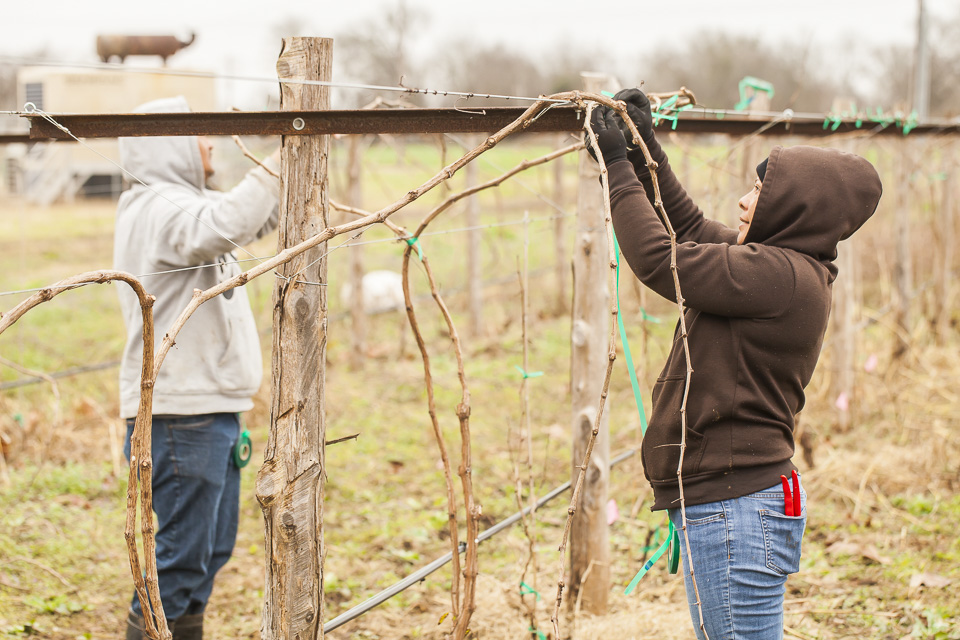 Tying the vines. Photo by Scott David Gordon.
Tying the vines. Photo by Scott David Gordon.
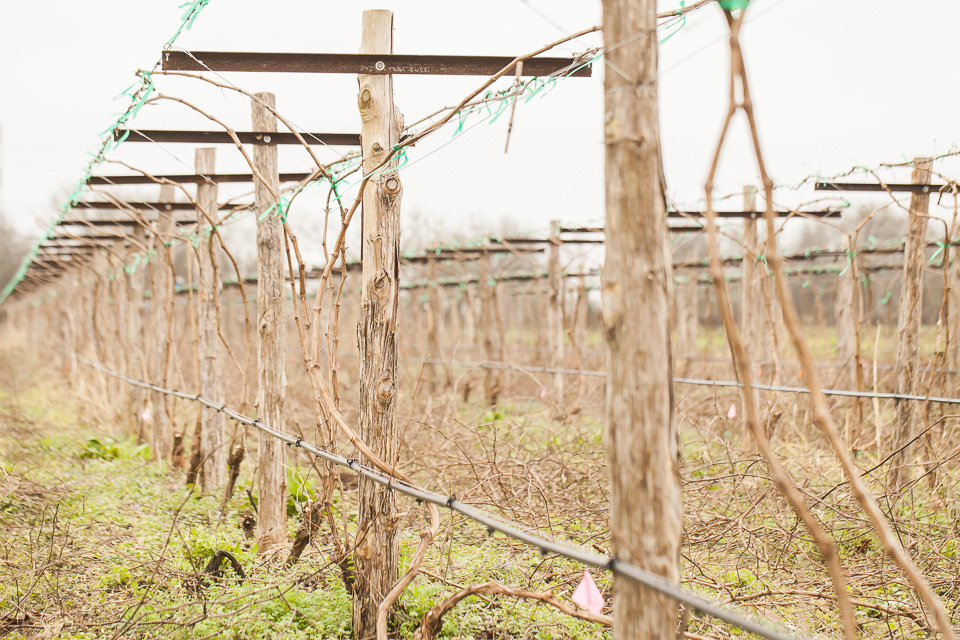 Pruned and tied vines. Photo by Scott David Gordon.
Pruned and tied vines. Photo by Scott David Gordon.
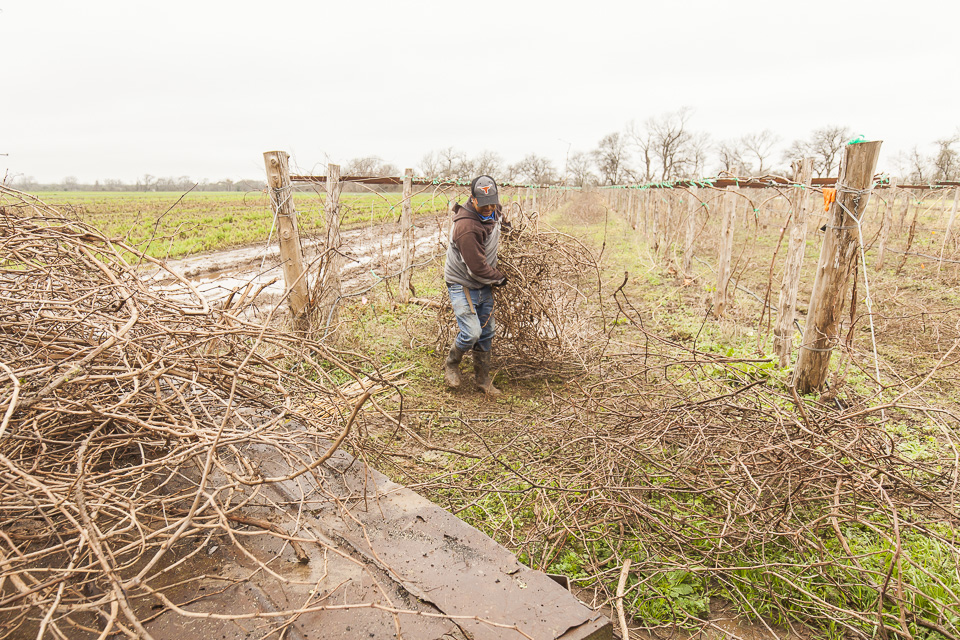 Gathering the cut offshoot vines. Photo by Scott David Gordon.
Gathering the cut offshoot vines. Photo by Scott David Gordon.
Our grapes are grown on grafted rootstock, meaning that the roots of the grapes are different from the fruiting part of the plant. The rootstock that we use absorbs nutrients more effectively from our soil than the original rootstock. Using different rootstock that is more suited to the Central Texas climate and soil circumvents the plants from succumbing to disease and pests, like phylloxera, a pesky microscopic insect that can wreak havoc on grapes (just look up the Great French Wine Blight and you’ll get a taste of their capabilities! Similar to the boll weevil’s effect on cotton plantations in the ‘20s). The rootstock and propagated grape plant, known as the scion, have a rooting chamber. After a couple of years if they have grown together successfully, it’s hard to find the site of the graft if everything is done properly. Pretty cool, right?
We also had to tension the trellises this week, which was quite an interesting experience since we don’t know much about the process, and also, don’t have the correct tools for it. Thank goodness for Charlotte, our assistant farm manager, who figured out a makeshift way to re-adjust the tension of the trellises using advice doled out by an old powerpoint that she unearthed online. She proclaimed it a “classic physics problem” and set out to deduce the tension of the wire. She had to hang a bucket off the training wire in the middle of two stakes and dictated the weight by adding sand and rocks. Depending on how far the bucket hung down, she gleaned the deflection of the wire. Based on how much the bucket weighs, the distance between the poles, and the gauge/strength/length of the wire (we had to call the wire manufacturer and see what the maximum weight it could bear… FYI it’s 1100 lbs!), that’s how you figure the tension! Charlotte went out with the field crew and they tensioned the wires correctly to 900 lbs. They will eventually need to be altered in the summertime, as the change in temperature will cause the wires to shrink and expand, but for now, our trellises are good to go.
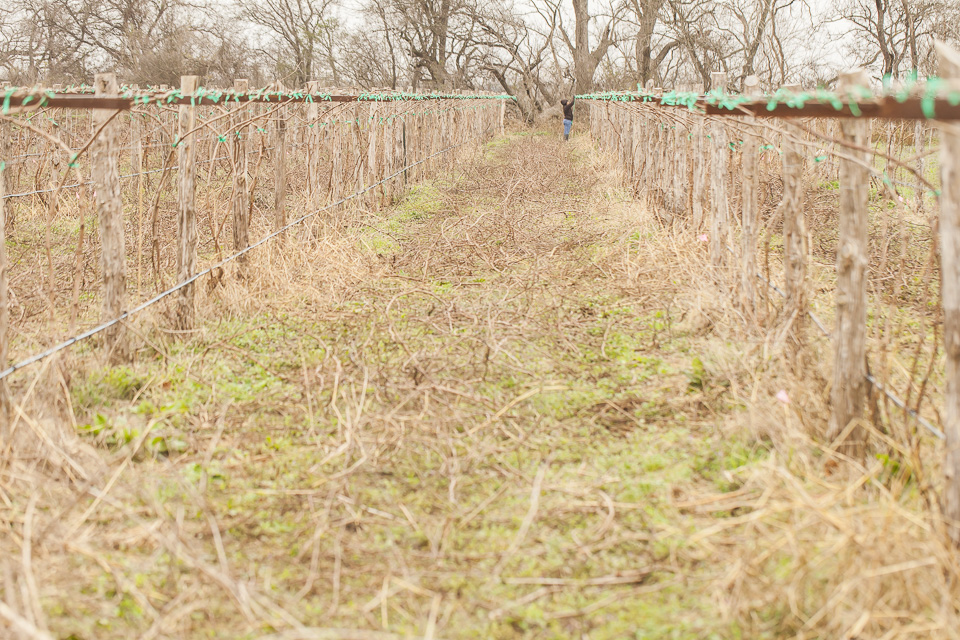 Photo by Scott David Gordon.
Photo by Scott David Gordon.
Finally, we are training the canopies! The type of canopy that we collectively decided would yield the tastiest, fullest, and most voluminous harvest is the Geneva Double Curtain. This type of canopy allows grapes grow in the shade of their own leaves, and the leaves are exposed to the most sun and air. Trust us, these are going to be so tasty! We have two different varieties of grapes growing currently: Victoria Red, a super sweet and delicious table grape bred specifically for Texas soil and climate, and Blanc du Bois, a hardy variety with an exquisite taste. Yum!
 Photo by Scott David Gordon.
Photo by Scott David Gordon.
We are trying our darnedest to get a more expansive offering of fruits for the CSA. It’s a constant struggle to find fruits that will grow successfully in our climate, but we know that people love more fruits than just tomatoes! On top of our grape venture, we are growing figs, two varieties of pomegranates, two kinds of loquats, pears, and planting citrus this year, too! So keep a look out, we have some really exciting produce headed your way. 'Til next time!
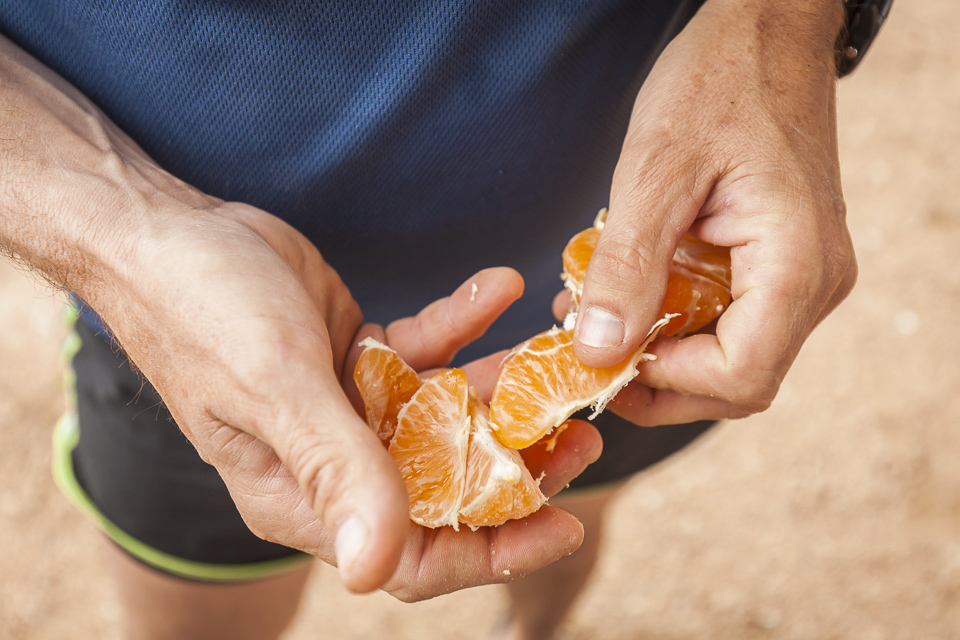 Satsumas in the summertime. Photo by Scott David Gordon.
Satsumas in the summertime. Photo by Scott David Gordon.CSA BOX CONTENTS WEEK OF JAN 23RD
01/24/17 — Scott
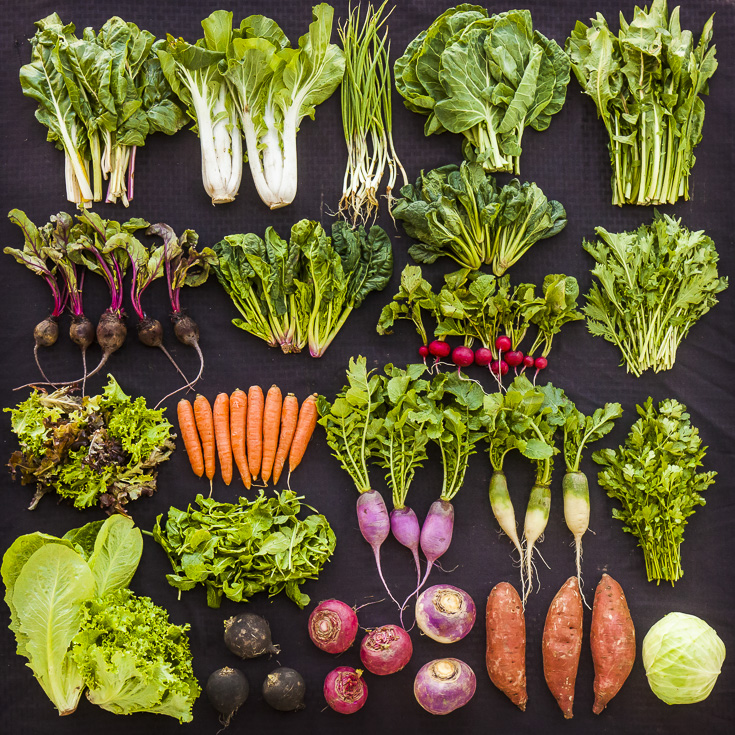 CSA Box Contents Week of Jan 23rd
CSA Box Contents Week of Jan 23rd
Large Box
Beet, Red
Bok Choy
Brussels Greens
Brussels Sprouts
Cabbage, Green
Carrot, Orange
Greens, Chard, Rainbow
Greens, Spinach
Herb, Cilantro
Lettuce, Mixed head bag
Onion, Green
Potato, Sweet
Radish, Purple Daikon
Turnip, Scarlett
Beet, Red
Bok Choy
Brussels Greens
Brussels Sprouts
Cabbage, Green
Carrot, Orange
Greens, Chard, Rainbow
Greens, Spinach
Herb, Cilantro
Lettuce, Mixed head bag
Onion, Green
Potato, Sweet
Radish, Purple Daikon
Turnip, Scarlett
Medium Box
Beet, Red
Cabbage, Green
Carrot, Orange
Greens, Collards
Greens, Dandelion
Greens, Spinach
Herb, Cilantro
Lettuce, Mixed head bag
Onion, Green
Radish, Purple Daikon
Turnip, Purple Top
Beet, Red
Cabbage, Green
Carrot, Orange
Greens, Collards
Greens, Dandelion
Greens, Spinach
Herb, Cilantro
Lettuce, Mixed head bag
Onion, Green
Radish, Purple Daikon
Turnip, Purple Top
Small Box
Beet, Red
Cabbage, Green
Carrot, Orange
Greens, Arugula
Greens, Mustard
Greens, Spinach
Potato, Sweet
Turnip, Scarlett
Beet, Red
Cabbage, Green
Carrot, Orange
Greens, Arugula
Greens, Mustard
Greens, Spinach
Potato, Sweet
Turnip, Scarlett
Individual Box
Brussels Greens
Cabbage, Green
Carrot, Orange
Greens, Salad Mix
Potato, Sweet
Radish, Purple Daikon
Brussels Greens
Cabbage, Green
Carrot, Orange
Greens, Salad Mix
Potato, Sweet
Radish, Purple Daikon
CSA BOX CONTENTS WEEK OF JAN 23RD
01/24/17 — Scott
 CSA Box Contents Week of Jan 23rd
CSA Box Contents Week of Jan 23rd
Medium Box
Beet, Red
Bok Choy
Brussels Greens
Cabbage, Green
Carrot, Orange
Greens, Mizuna
Greens, Salad Mix
Greens, Spinach
Herb, Cilantro
Potato, Sweet
Radish, Green Meat
CARROT-TOP PESTO WITH DILL & PECAN
01/25/17 — Heydon Hatcher
By Mackenzie Smith
Pesto is my go-to solution for greens that won’t go straight into a salad, so carrot-tops fit the bill here just right. Our CSA box had a big handful of dill last week, so I threw some in at the last minute and learned about what happens when dill, carrot-tops and pecans come together: sweet, sharp and earthy, with a nice tang from the dill.
Swap out parsley for anything else you might have on hand here-- I imagine mint and cilantro would take this paste to a whole new place. If you don’t have a food processor, chopping everything by hand works just fine.
Carrot-top Pesto with Dill & Pecan![Photo by Mackenzie Smith.]() Photo by Mackenzie Smith.
Photo by Mackenzie Smith.
Pulse everything but the salt, pepper and lemon juice in a food processor, adding more olive oil as you need to. Season with salt, pepper and lemon juice to taste.
Traditional pesto calls for Parmesan, but I never seem to have the right amount when I set out to make pesto. Nuts, herbs, garlic and olive oil and salt are ever-present in my kitchen and I have found that is really all you need to make a flavorful green paste to spread on sandwiches or quesadillas, toss with pasta, roasted vegetables, dip raw veggies, etc.
![Photo by Mackenzie Smith.]() Photo by Mackenzie Smith.
Photo by Mackenzie Smith.
Last week I enjoyed:
Pesto is my go-to solution for greens that won’t go straight into a salad, so carrot-tops fit the bill here just right. Our CSA box had a big handful of dill last week, so I threw some in at the last minute and learned about what happens when dill, carrot-tops and pecans come together: sweet, sharp and earthy, with a nice tang from the dill.
Swap out parsley for anything else you might have on hand here-- I imagine mint and cilantro would take this paste to a whole new place. If you don’t have a food processor, chopping everything by hand works just fine.
Carrot-top Pesto with Dill & Pecan
- 2 cups carrot-tops, washed, dried and roughly chopped
- ½ cup parsley
- ⅓ cup dill, roughly chopped
- ½ cup pecans, roughly chopped
- 1 clove garlic
- 3/4 cup extra virgin olive oil
- A squeeze or two of lemon juice
- Salt and pepper to taste
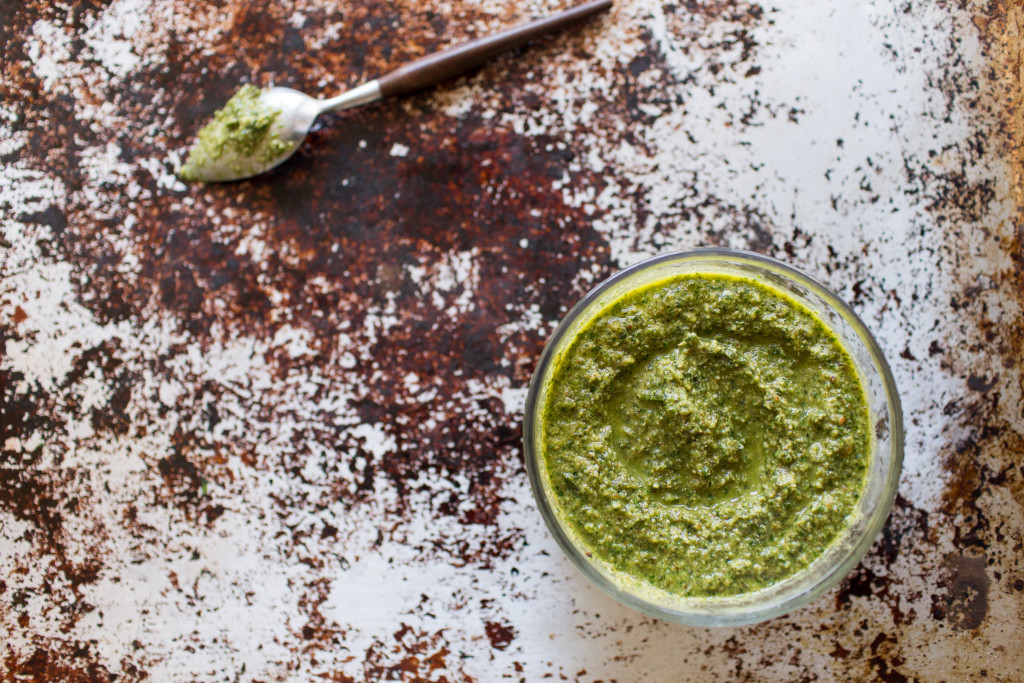 Photo by Mackenzie Smith.
Photo by Mackenzie Smith.
Pulse everything but the salt, pepper and lemon juice in a food processor, adding more olive oil as you need to. Season with salt, pepper and lemon juice to taste.
Traditional pesto calls for Parmesan, but I never seem to have the right amount when I set out to make pesto. Nuts, herbs, garlic and olive oil and salt are ever-present in my kitchen and I have found that is really all you need to make a flavorful green paste to spread on sandwiches or quesadillas, toss with pasta, roasted vegetables, dip raw veggies, etc.
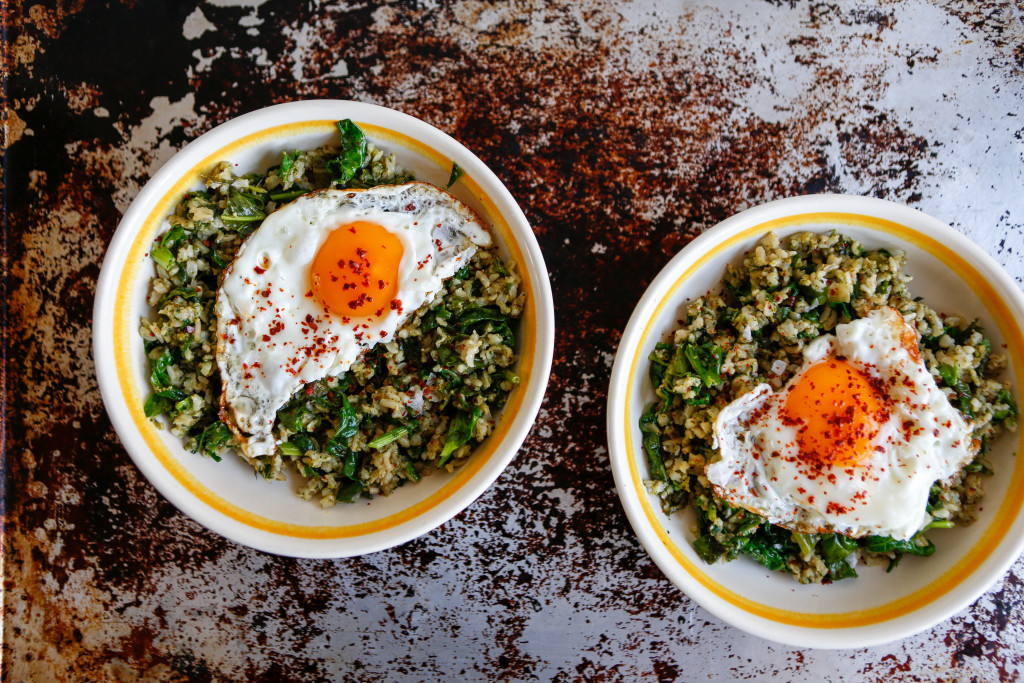 Photo by Mackenzie Smith.
Photo by Mackenzie Smith.
Last week I enjoyed:
- Sourdough sandwiches with roasted carrots, spinach, sharp cheddar and pesto
- Brown rice with carrot-top pesto, wilted spinach
- Grilled cheese with havarti & pesto
- Fried eggs with pesto toast
CSA STORIES
01/26/17 — Heydon Hatcher
A handful of testimonials from some of our long-time CSA customers:
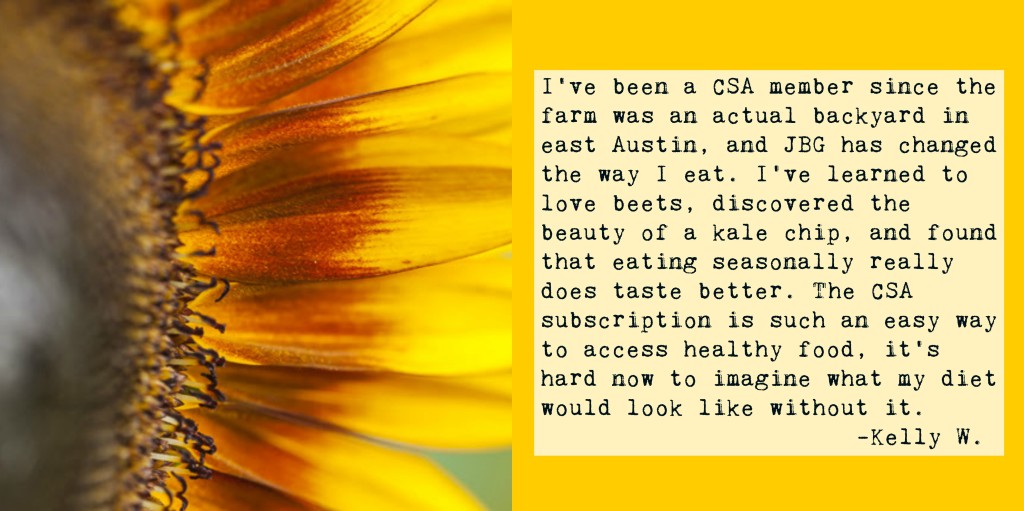
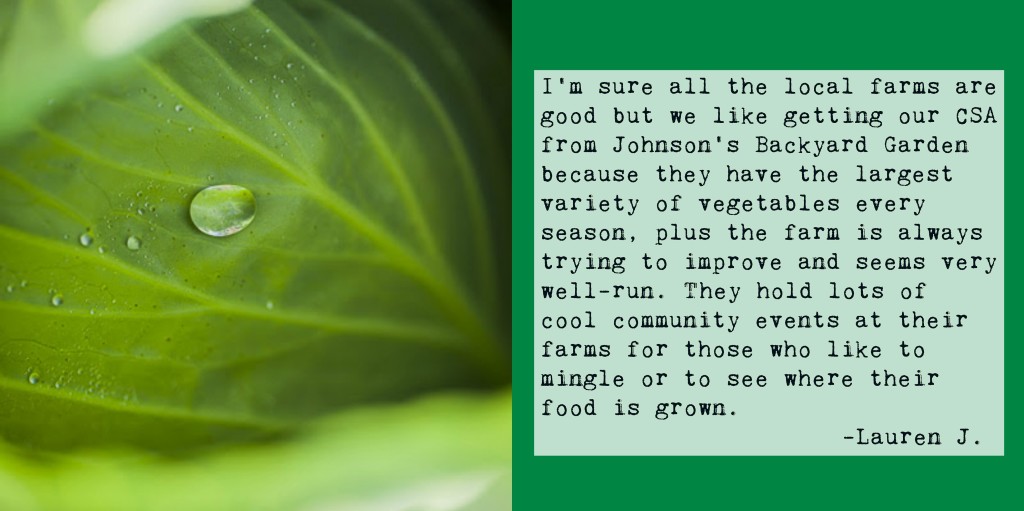
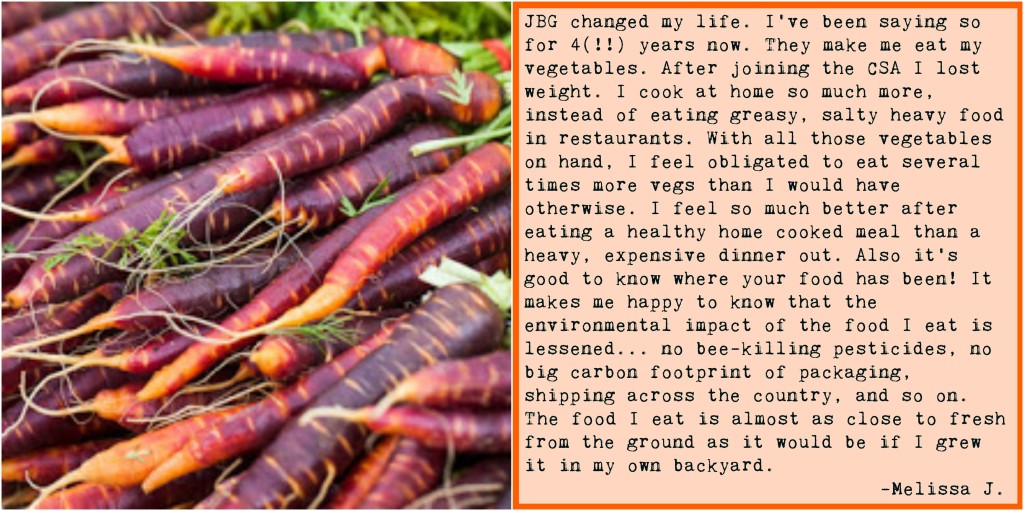
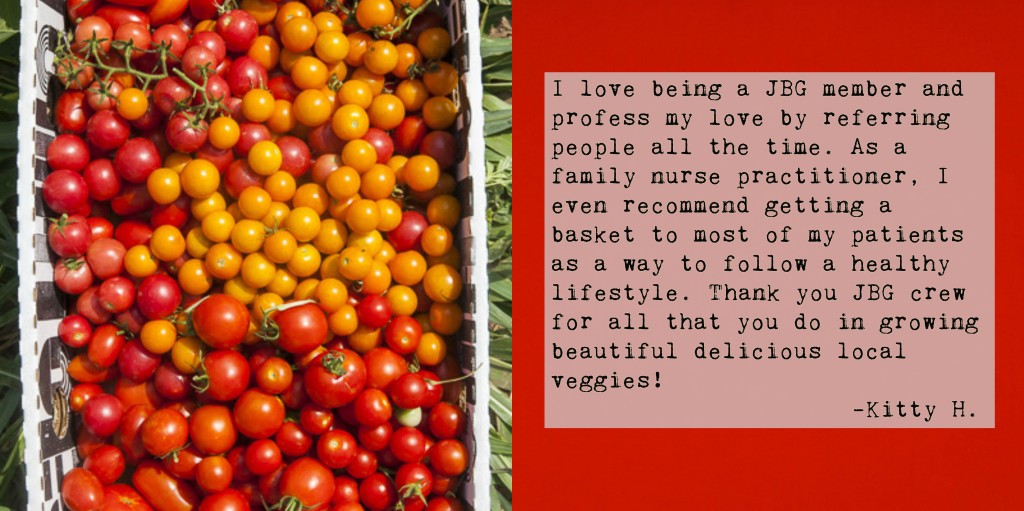
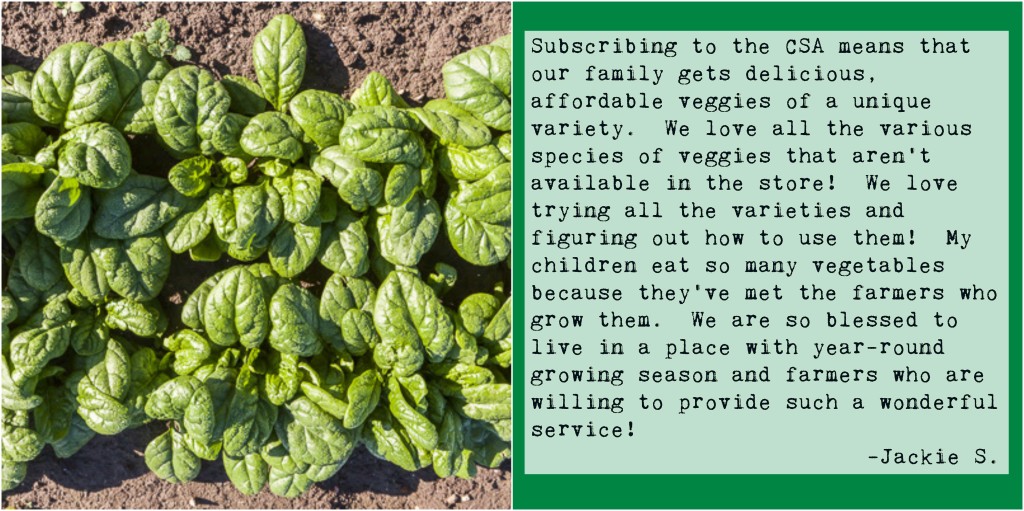
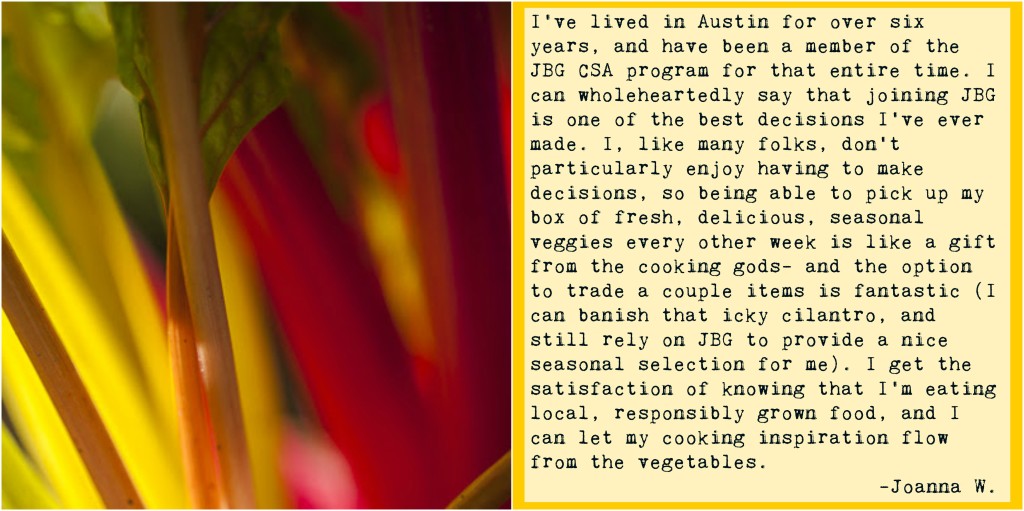
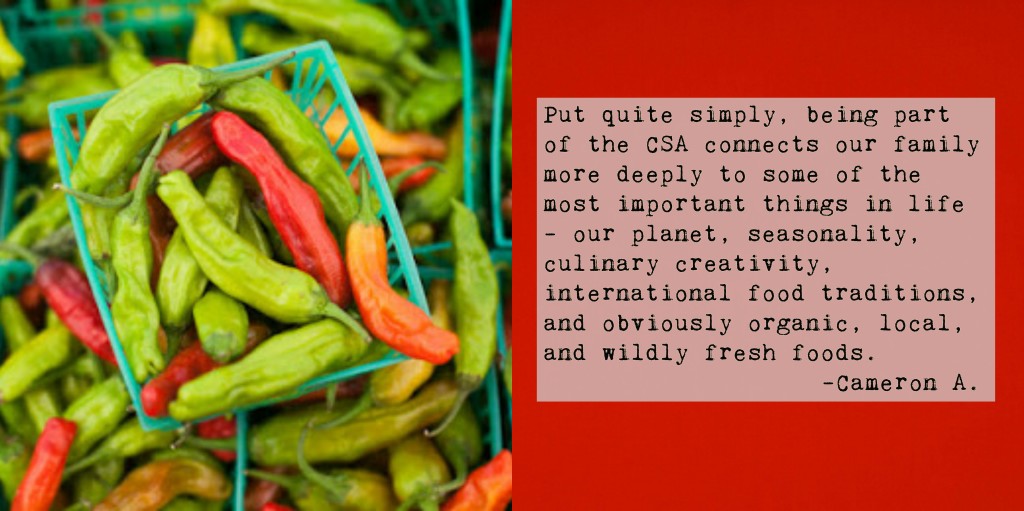
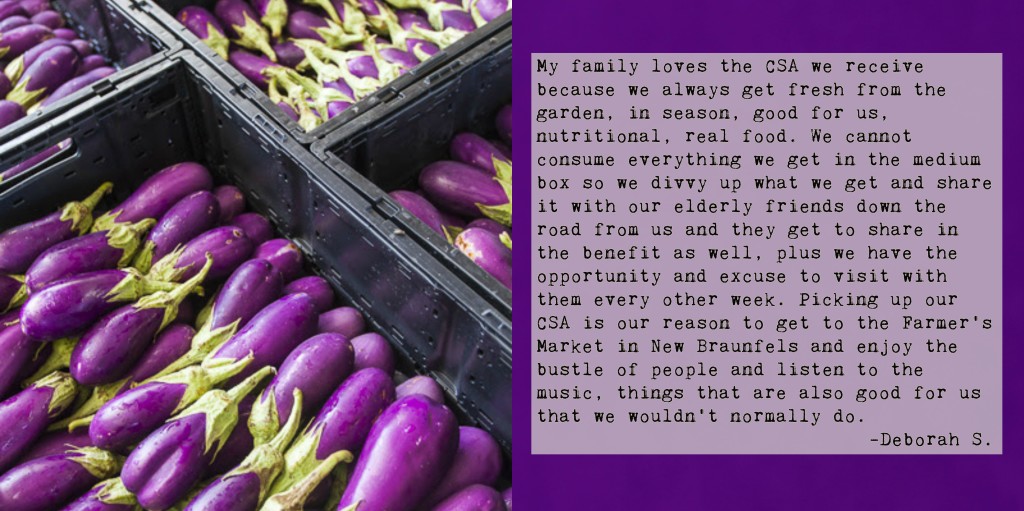
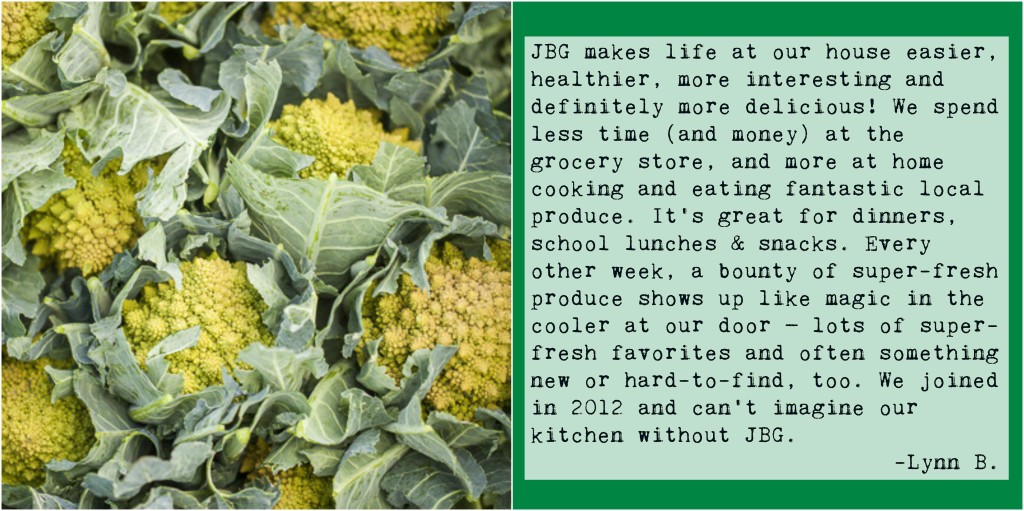
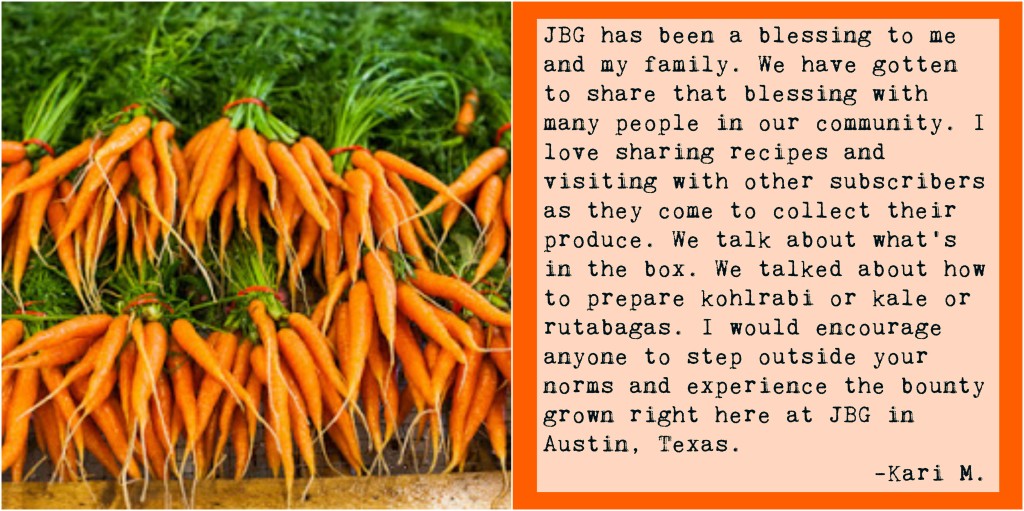
WEEK 4 IN PHOTOS
01/27/17 — Heydon Hatcher
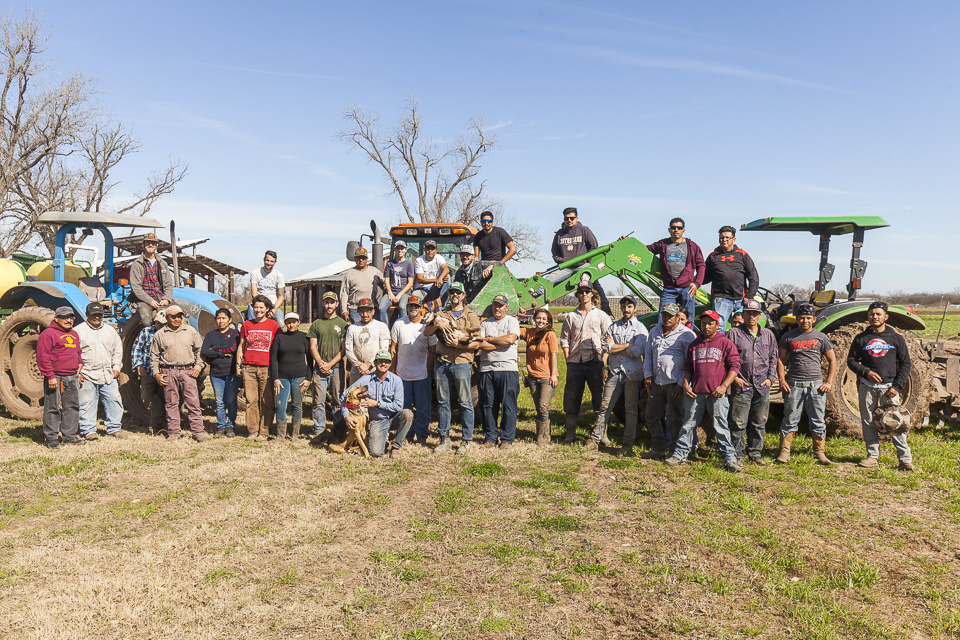
Spring planting is underway! Collards, curly kale, carrots, beets, broccoli, cauliflower, turnips, cabbage, onions, cilantro, bok choy, lettuce, pea tendrils and various other greens are all going in (hopefully) this week. As you can see above, we finally took an updated group photo of the farm crew! Yahoo!
We're potting up a few thousand fig, lemongrass, grape and pomegranate transplants, and Brandon, our greenhouse manager, seeded close to 50 heirloom and specialty tomato, 20 different herbs, and numerous pepper varieties for the spring transplant sale. Get excited! It is sure to be our best transplant sale yet.
Thanks to Scott David Gordon for another week of show-stopping farm captures.
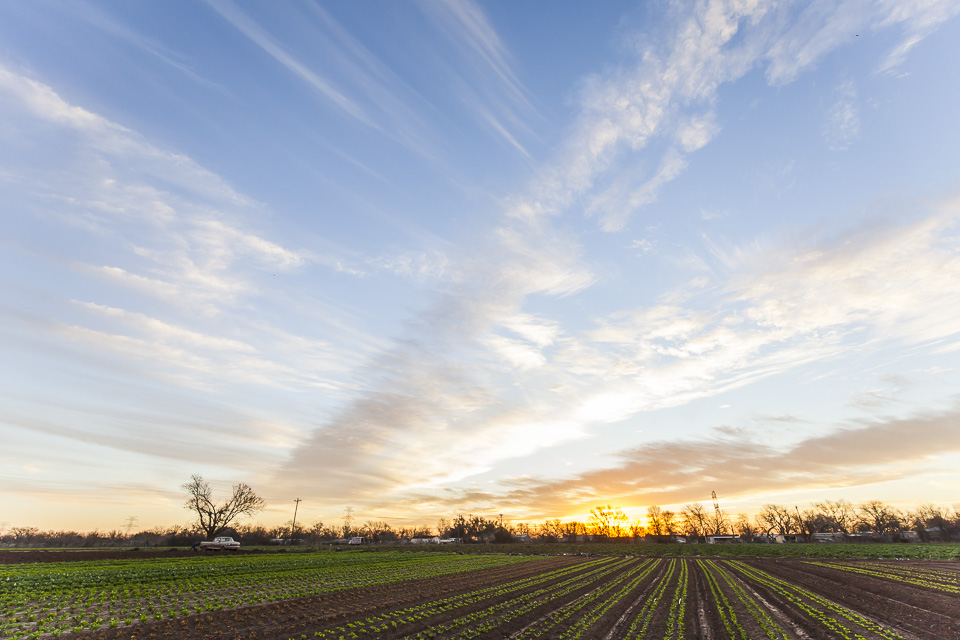 Farm views. Photo by Scott David Gordon.
Farm views. Photo by Scott David Gordon.
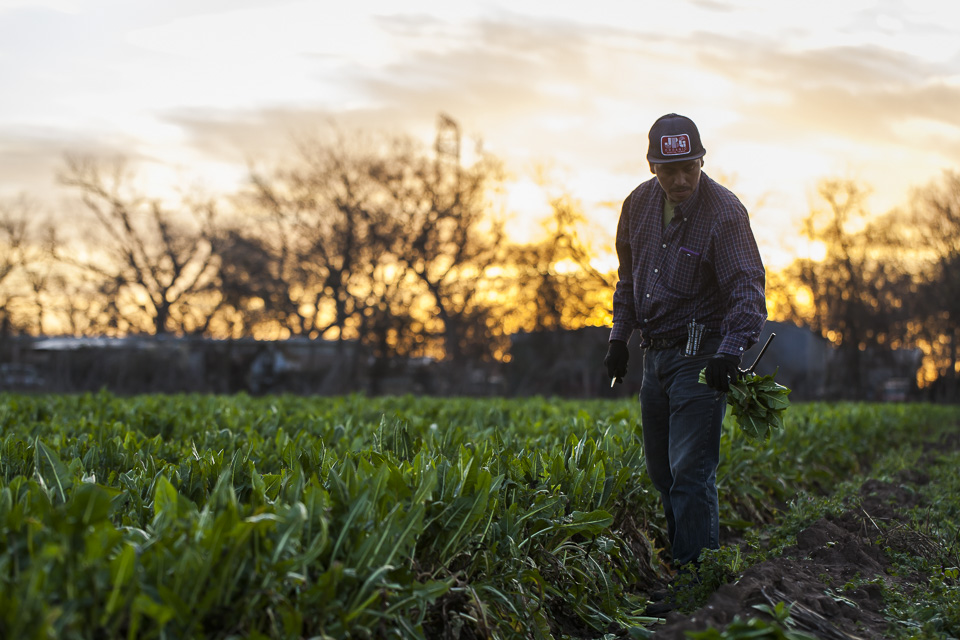 Dandelion green harvest. Photo by Scott David Gordon.
Dandelion green harvest. Photo by Scott David Gordon.
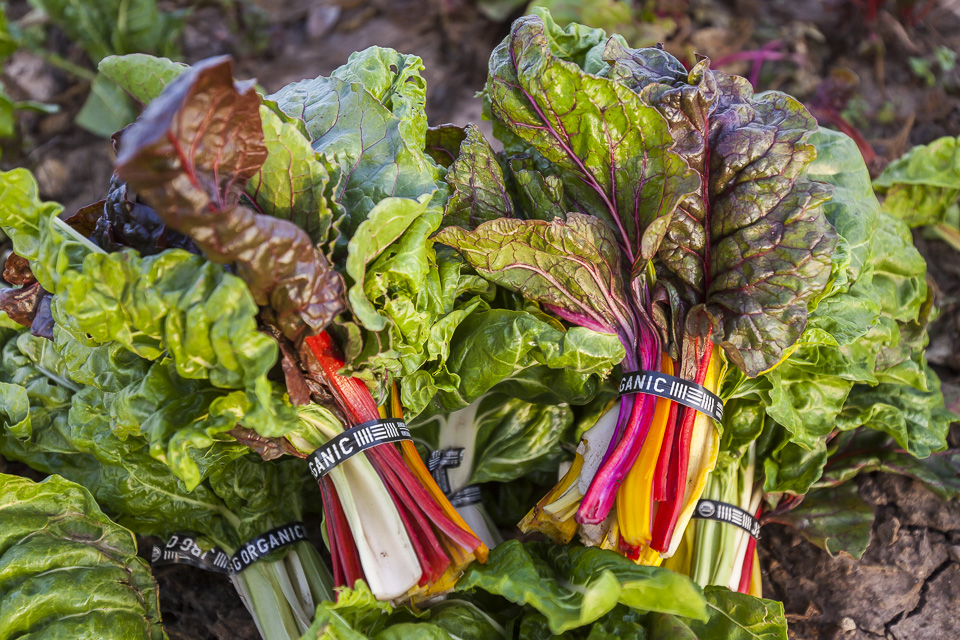 Rainbow. Photo by Scott David Gordon.
Rainbow. Photo by Scott David Gordon.
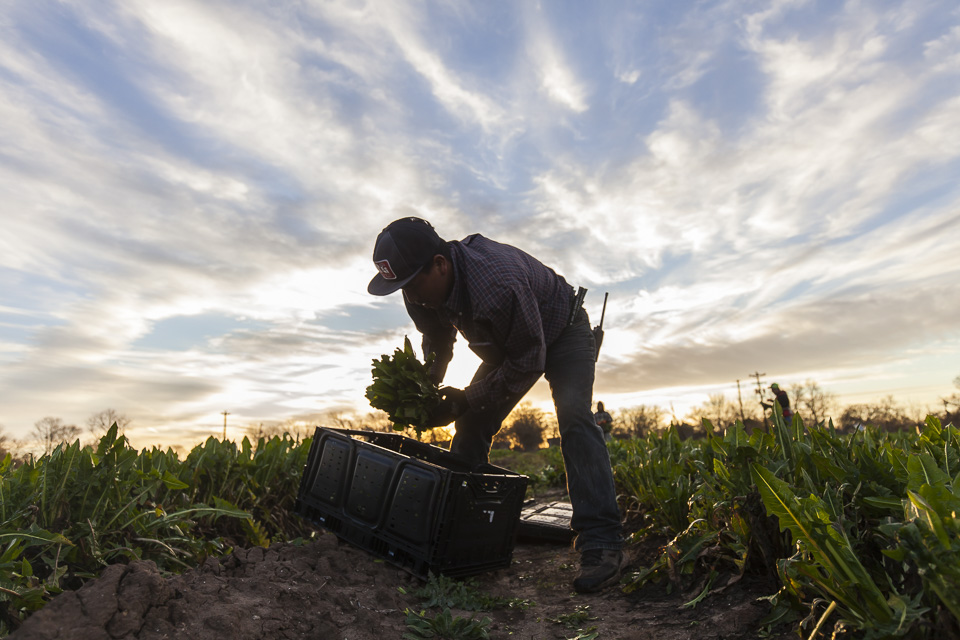 Harvest silhouette. Photo by Scott David Gordon.
Harvest silhouette. Photo by Scott David Gordon.
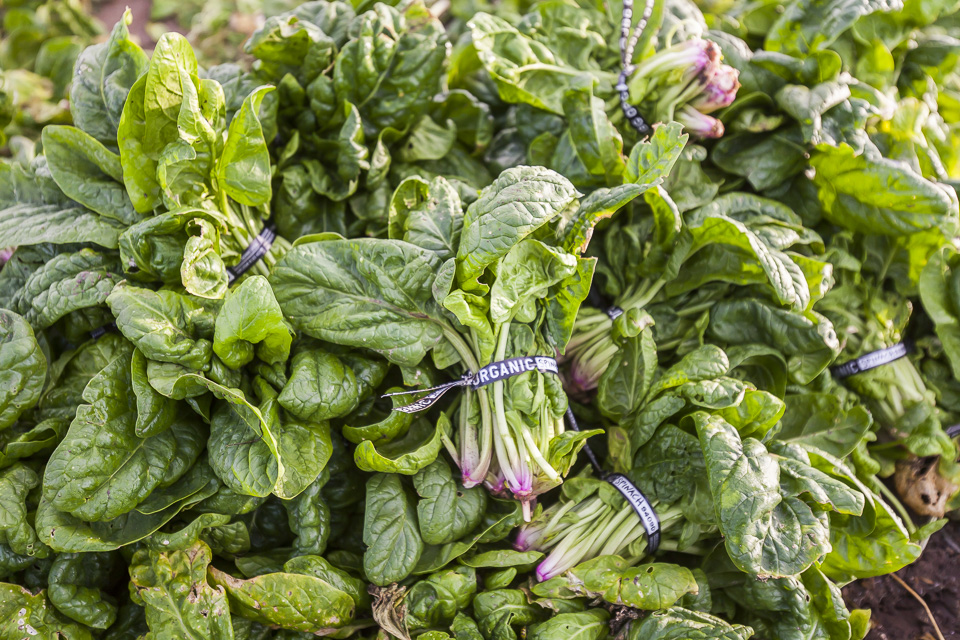 Popeye fuel. Photo by Scott David Gordon.
Popeye fuel. Photo by Scott David Gordon.
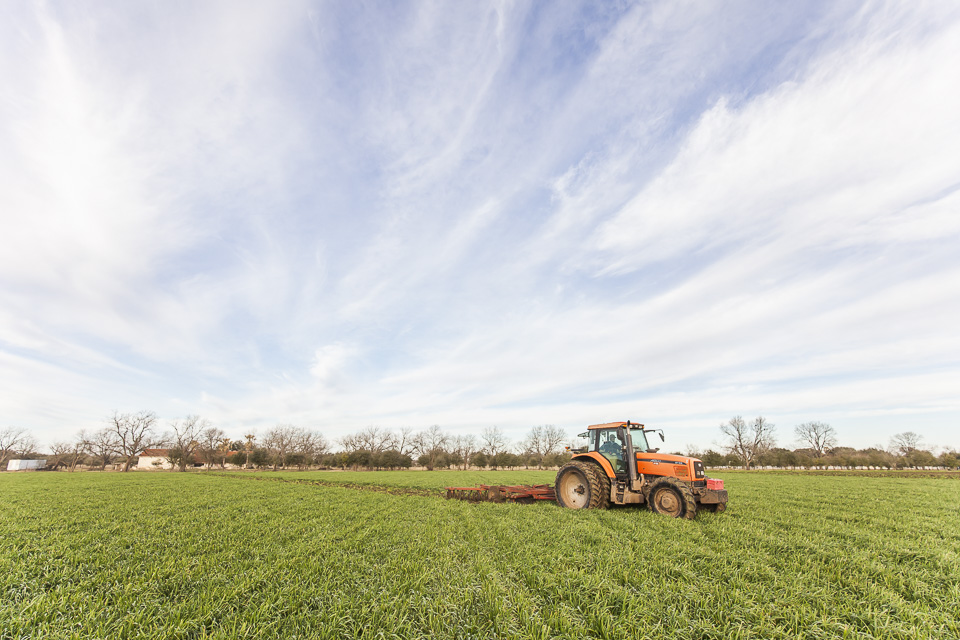 Tilling the cover crops. Photo by Scott David Gordon.
Tilling the cover crops. Photo by Scott David Gordon.
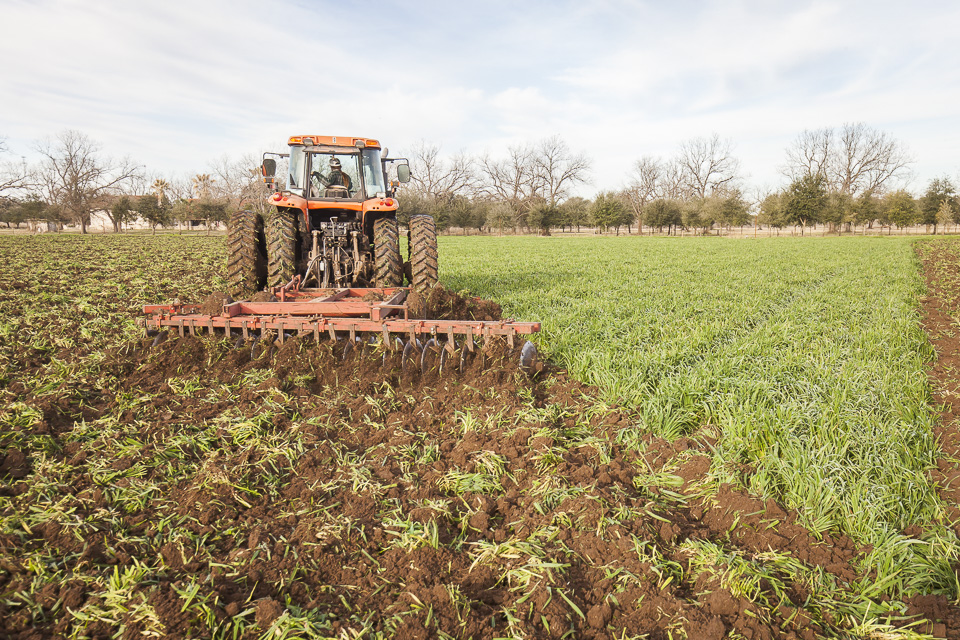 Tilling the cover crops. Photo by Scott David Gordon.
Tilling the cover crops. Photo by Scott David Gordon.
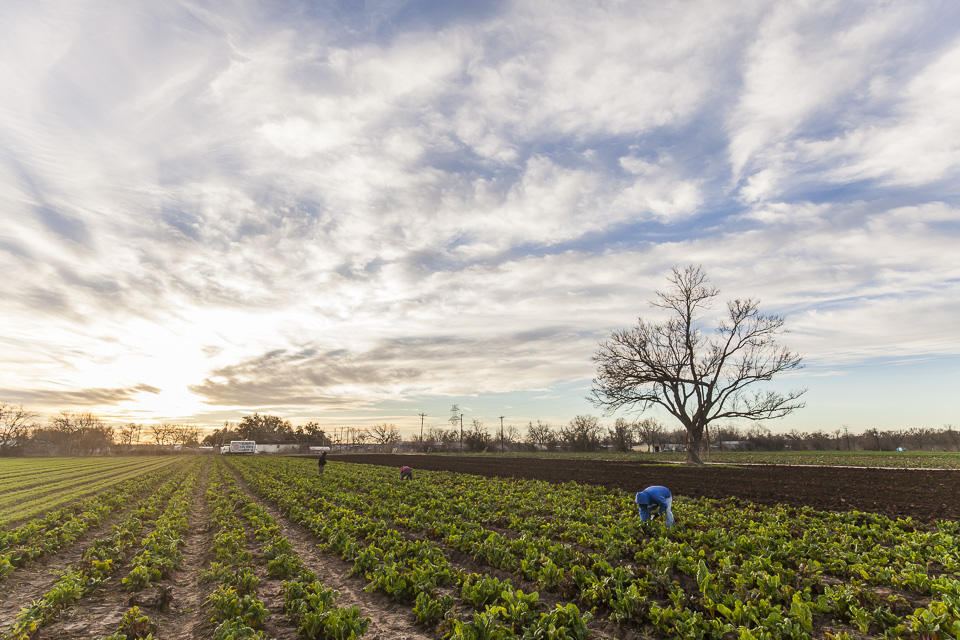 Stunning farm mornings. Photo by Scott David Gordon.
Stunning farm mornings. Photo by Scott David Gordon.
 Boot party. Photo by Scott David Gordon.
Boot party. Photo by Scott David Gordon.
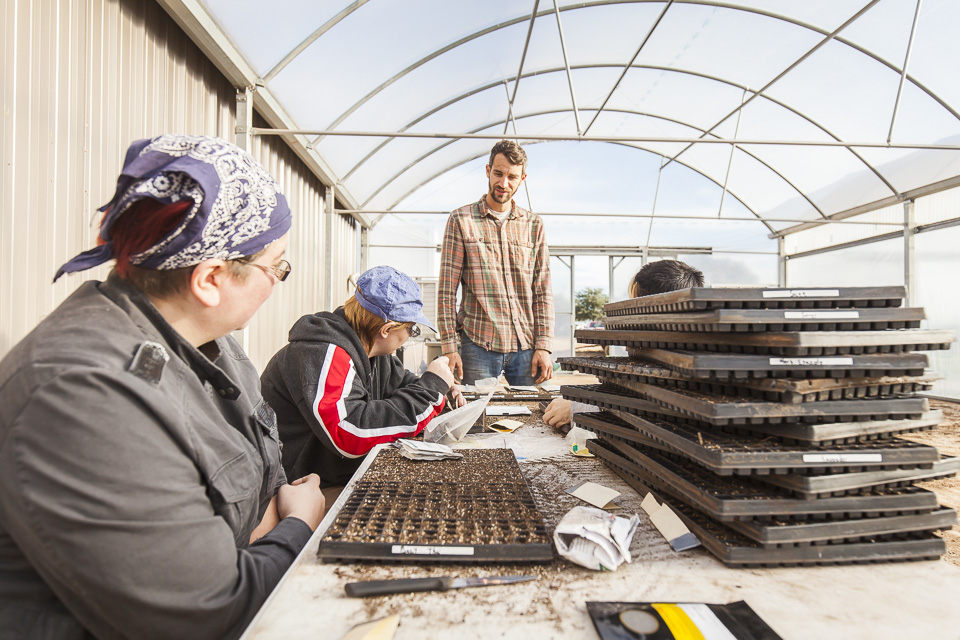 Brandon callin' the shots. Photo by Scott David Gordon.
Brandon callin' the shots. Photo by Scott David Gordon.
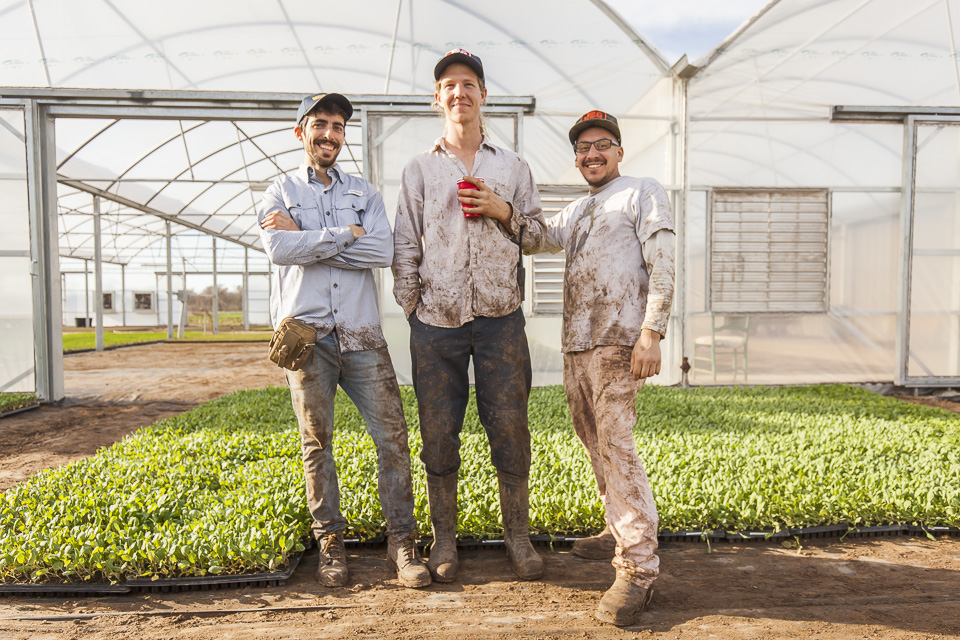 Farm hang. Photo by Scott David Gordon.
Farm hang. Photo by Scott David Gordon.
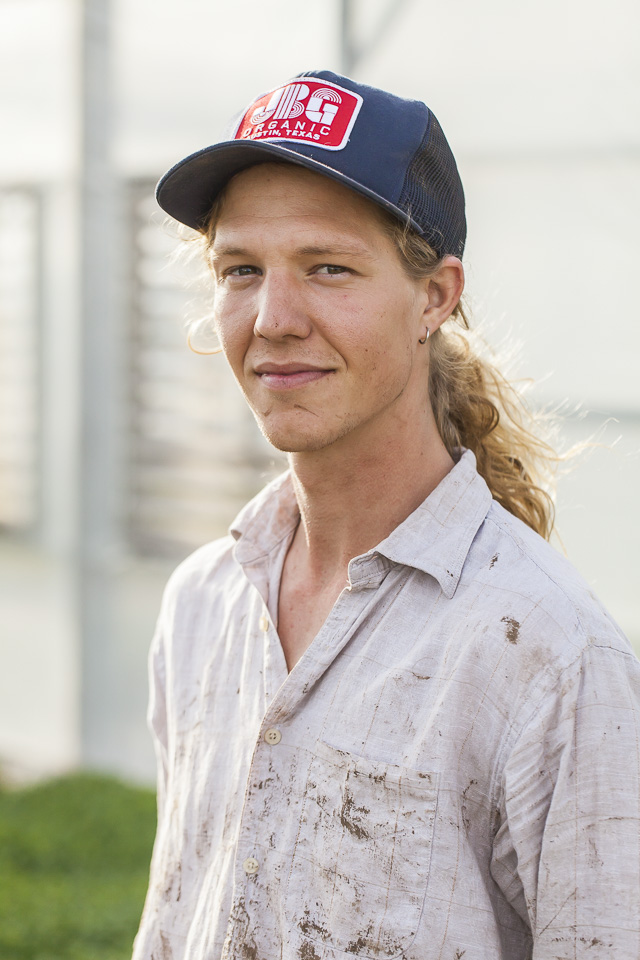 Cody close-up. Photo by Scott David Gordon.
Cody close-up. Photo by Scott David Gordon.
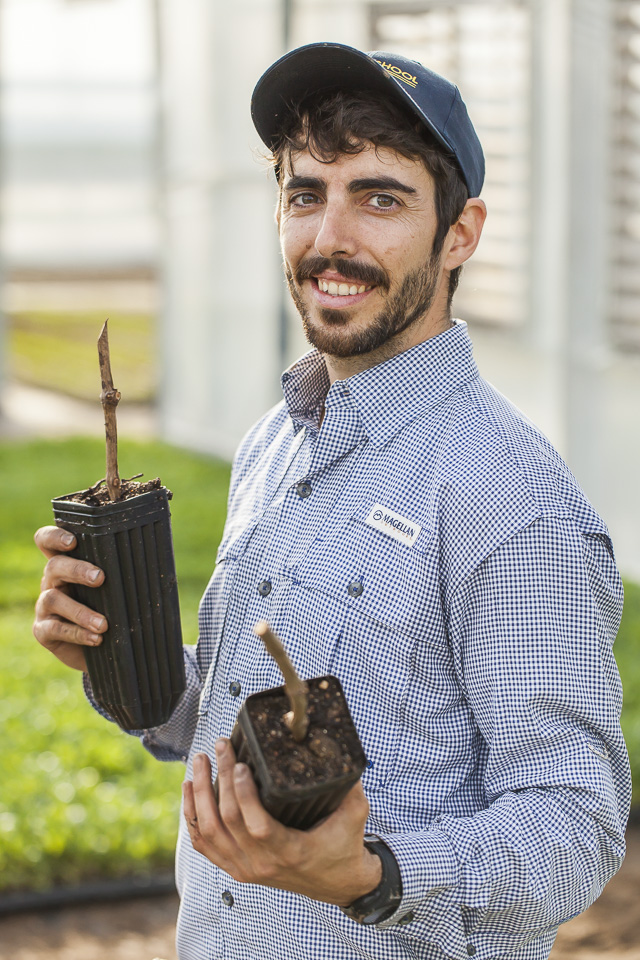 Javier with grape transplants, come get 'em at our transplant sale in March! Photo by Scott David Gordon.
Javier with grape transplants, come get 'em at our transplant sale in March! Photo by Scott David Gordon.
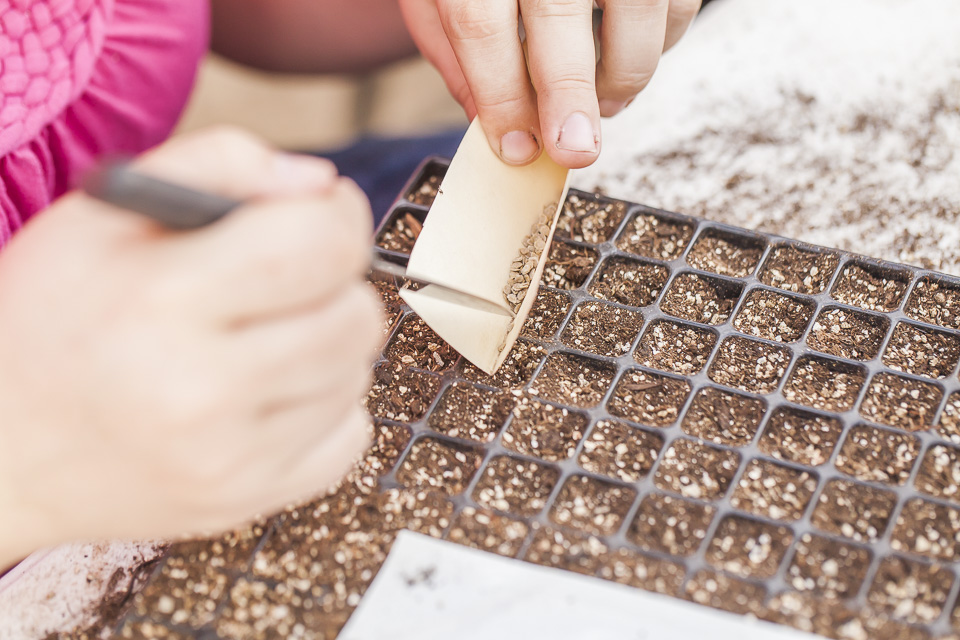 Seeding. Photo by Scott David Gordon.
Seeding. Photo by Scott David Gordon.
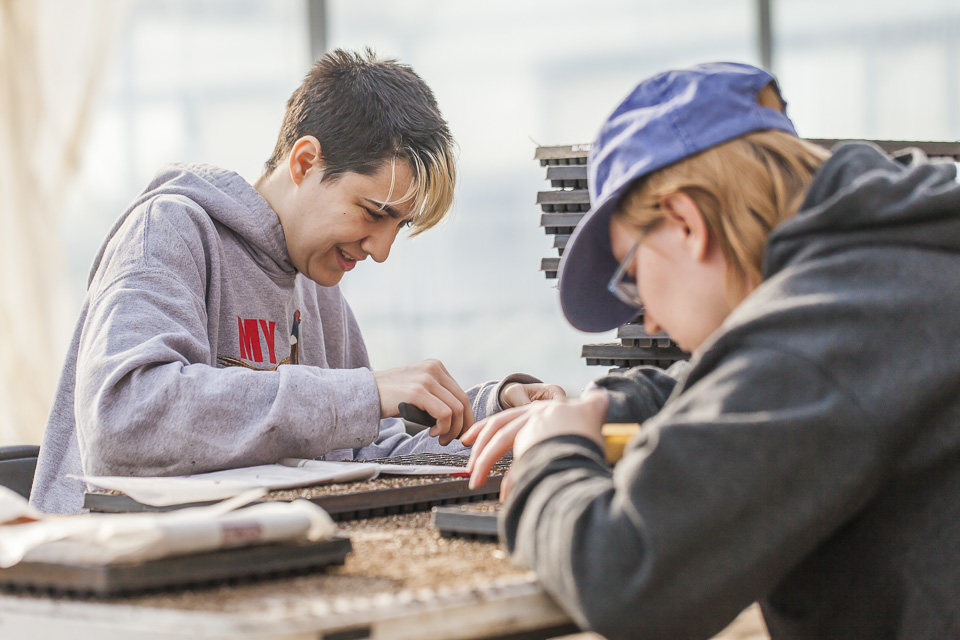 Seeding. Photo by Scott David Gordon.
Seeding. Photo by Scott David Gordon.
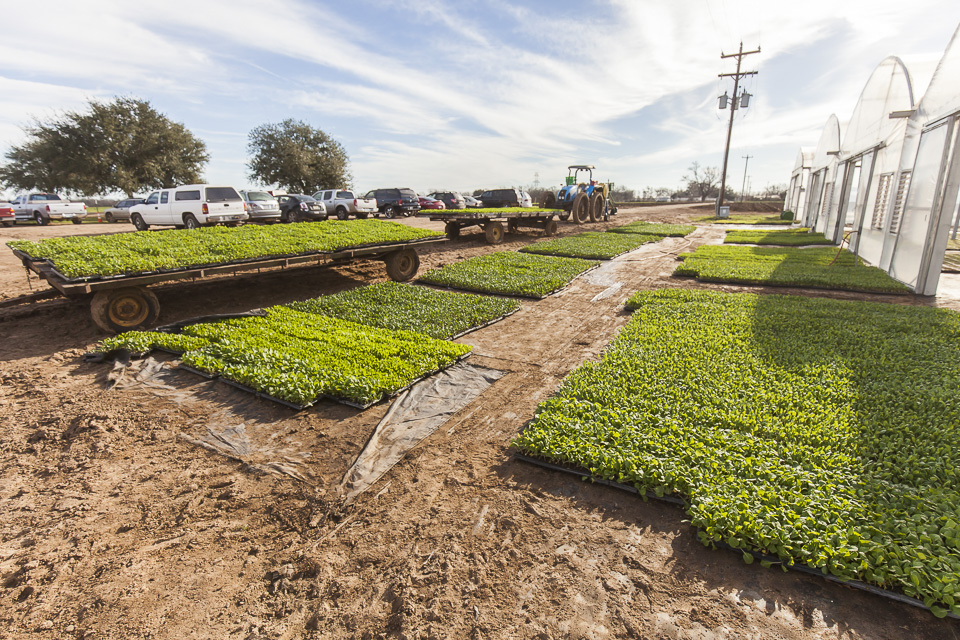 Transplants ready to go in the ground. Photo by Scott David Gordon.
Transplants ready to go in the ground. Photo by Scott David Gordon.
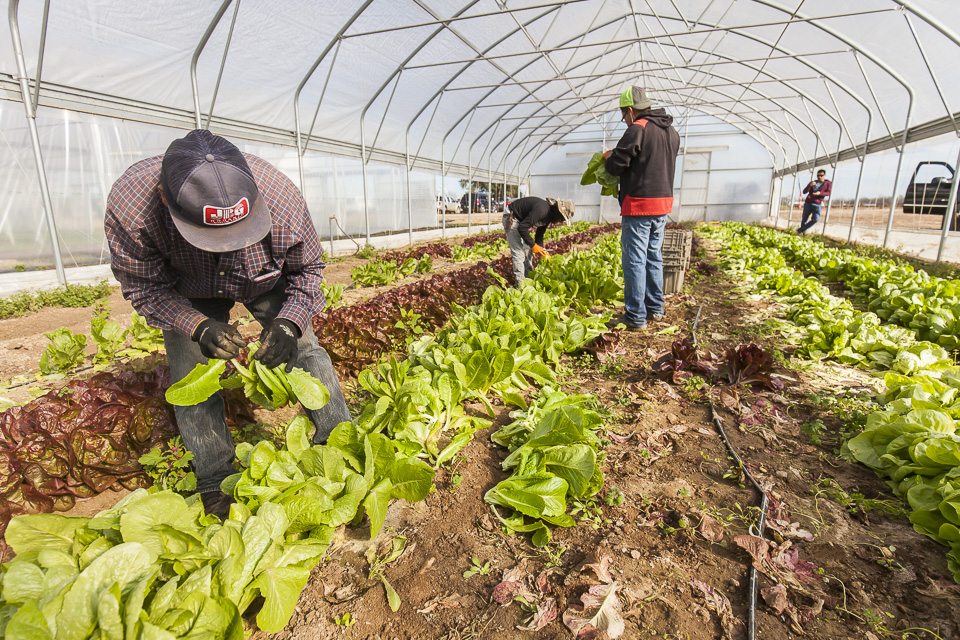 Lettuce harvest. Photo by Scott David Gordon.
Lettuce harvest. Photo by Scott David Gordon.
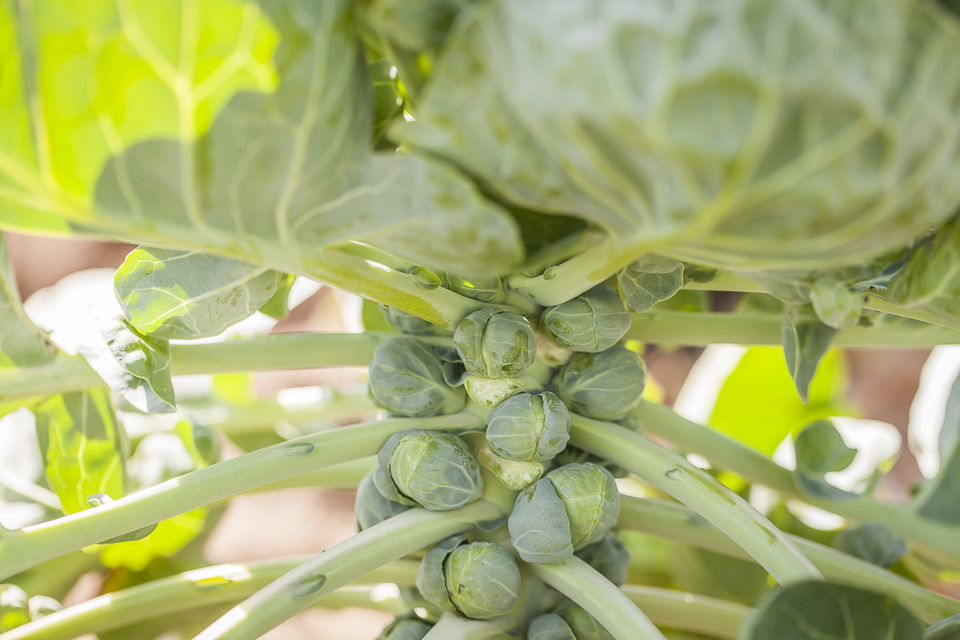 Brussel sprouts! Photo by Scott David Gordon.
Brussel sprouts! Photo by Scott David Gordon.
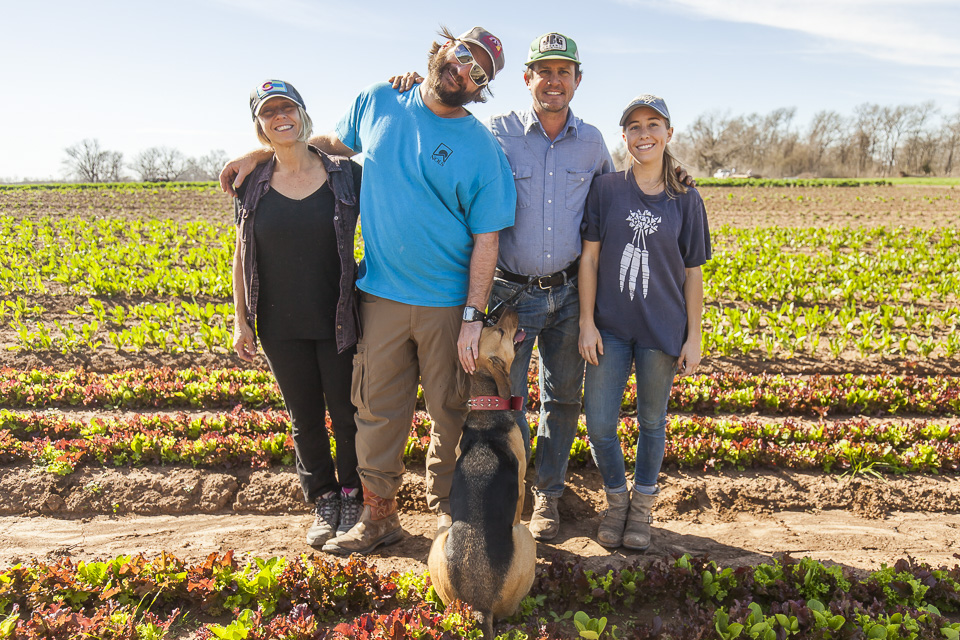 Farm tour with Fagan Family Farms folks. Photo by Scott David Gordon.
Farm tour with Fagan Family Farms folks. Photo by Scott David Gordon.
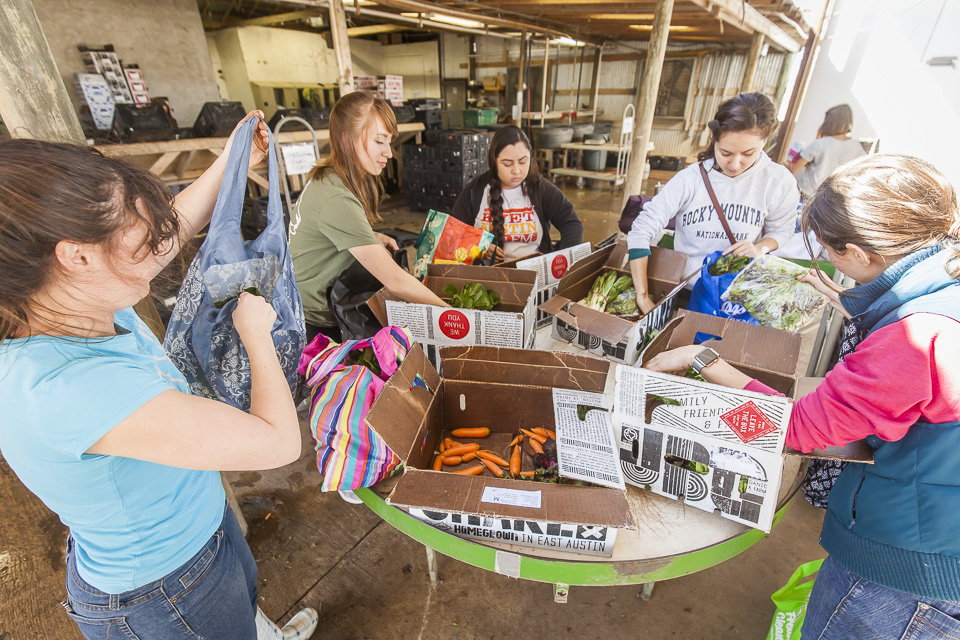 Volunteers, after a long day, stocking up on veggies. Photo by Scott David Gordon.
Volunteers, after a long day, stocking up on veggies. Photo by Scott David Gordon.LAST CALL FOR OUR NEW YEAR'S PROMO!
01/27/17 — Heydon Hatcher
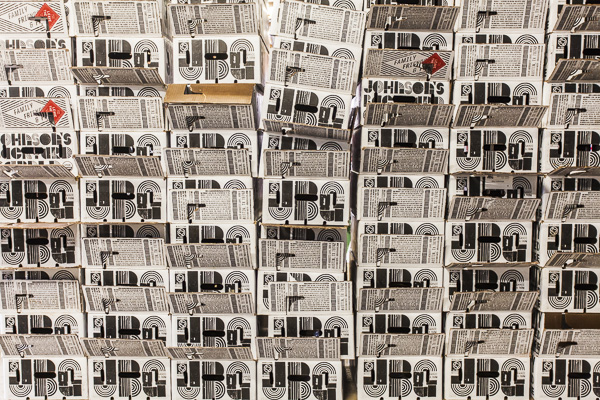
We are approaching the end of January, can you believe it? If you are still searching for ways to ameliorate your overall well-being, consider joining our CSA! In case you hadn't caught it yet, we are serving up an unbeatable promotion right now... If you are a new customer or have been taking a hiatus, sign up now through the end of January and get your first box free! Yep, you heard us right, FREE! It’s a great way to integrate fresh, organic produce into your daily regimen. It’s the perfect nudge you’ve been waiting for, so don’t dally, the offer ends January 31st! To join (or rejoin) the CSA click here and use the promo code: StartFresh or call the farm at 512.386.5273.
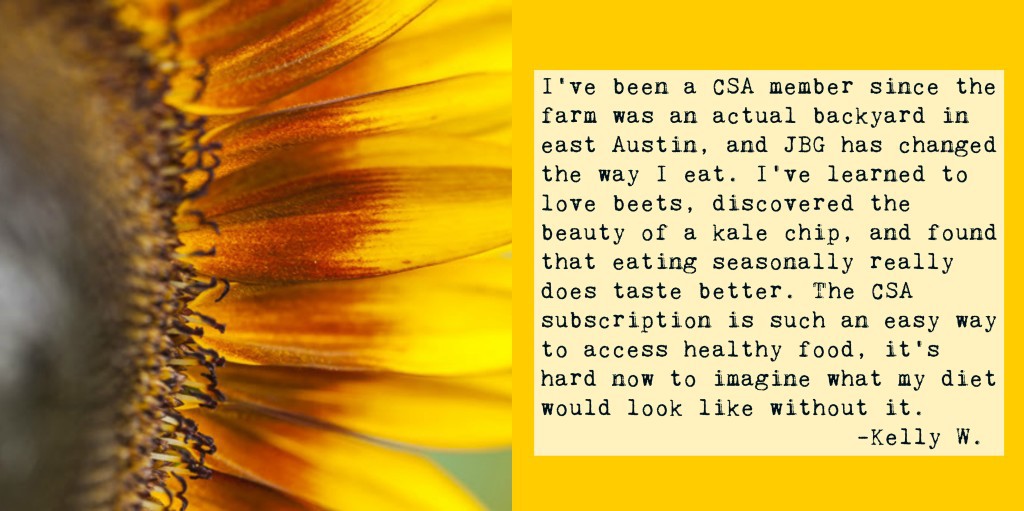
If free organic veggies aren’t convincing enough, our CSA community should do the talking. Since they know best, we reached out to some of our most loyal and enduring CSA customers for their opinions on what JBG Community Supported Agriculture means to them. Check out the testimonials here. Getting to know this inimitable and awesome group of folks from all walks of life is indubitably one of the biggest perks of joining the farm. At our many community events, we can gather and connect with fellow Central Texans, oftentimes out in the fields where we grow our produce. Speaking of gatherings, we have a handful of exciting events queued up for Spring:
- The best Transplant Sale yet during the first three weekends in March.
- A gardening workshop with our Greenhouse Manager, Brandon in March.
- Our Spring Potluck and Garden Gallop on April 1!
- And so much more! Stay tuned for a complete listing of upcoming events in the weeks to come, we are fine-tuning all the details.
We pride ourselves on persistently innovating and challenging ourselves with new ideas at JBG. We want each year to be better than the last, especially with regard to our crop offerings. We try to offer a varied and vast menu of fruits, veggies, and herbs for you to experiment with in the kitchen, and boy, do we have some exciting new surprises for your plates this year! We can't wait to share.
 Rainbow. Photo by Scott David Gordon.
Rainbow. Photo by Scott David Gordon.ROOT VEGETABLE SLAW
01/31/17 — Heydon Hatcher
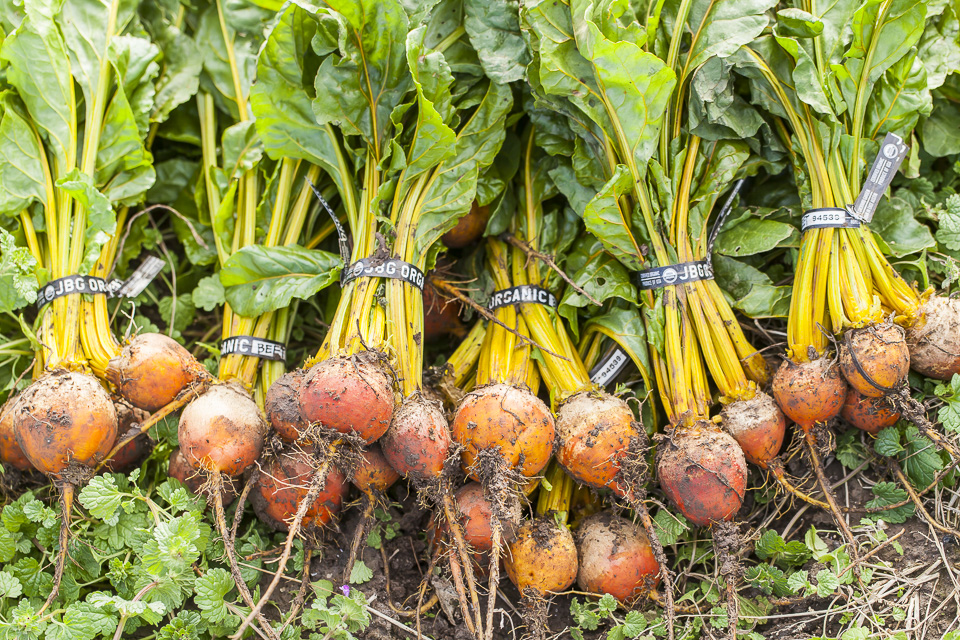 Photo by Scott David Gordon.
by Hector Gonzalez
Photo by Scott David Gordon.
by Hector Gonzalez
Root Vegetable Slaw
- 1/2 cup green neck daikon radish, shredded
- 1/2 cup carrots, shredded
- 1/2 cup chiogga beets, shredded
- 1/2 cup golden beets, shredded
- 1/2 cup kohlrabi, shredded
- 1 orange, juiced
- 1/2 tbsp salt
- 1/2 tbsp chili powder
Mix all shredded root vegetables.
Mix orange juice, salt and chili powder.
Pour liquids over shredded vegetables and mix.
Serve topped with chopped parsley (or cilantro if you don’t hate it) and sesame seeds. Sprinkle chili powder if you want it spicier.
Music: O! by Steve Combs, found here.
ASIAN-INSPIRED PICKLED CARROTS
01/31/17 — Heydon Hatcher
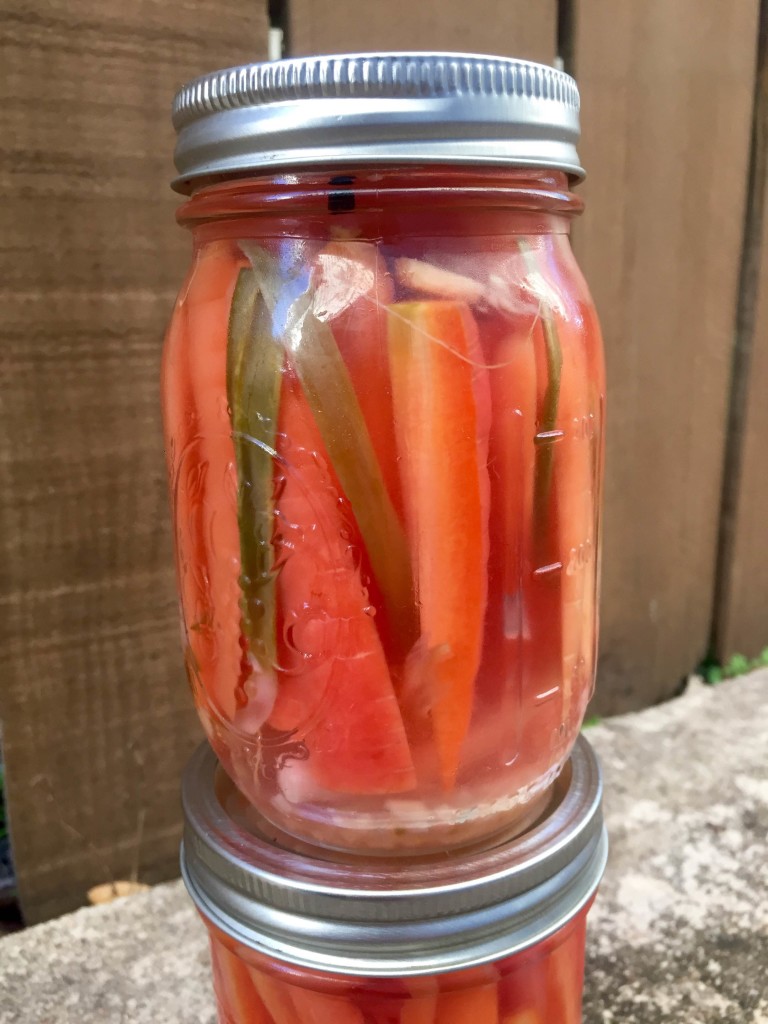 by Megan Winfrey
by Megan Winfrey
A few years ago, JBG hosted a Pickling Workshop in their greenhouses, taught by Austin's own Kate Payne - author of The Hip Girl's Guide to Homemaking and co-founder of Salud! Bitters Co. Ada, our very own CSA Manager, revived the recipe from the workshop and sent it my way. Being the pickle fan that I am, I couldn't wait to get together with my good friend and recreate Kate's pickled carrot recipe. I knew they would be good, but I had no idea they would be knock-you-on-your-arse, finish-a-jar-in-one-sitting good! And the leftover brine is perfect for shaking up into a martini. I enjoyed them on a cheese plate with Pogue Mahone garlic-dill pickles and thinly sliced on venison tacos.
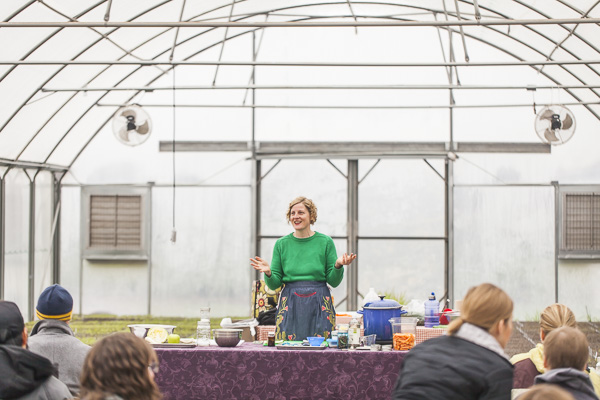 Pickling Workshop in our Greenhouse. Keep your eyes peeled for our 2017 Spring Event Calendar! Photo by Scott David Gordon.
Pickling Workshop in our Greenhouse. Keep your eyes peeled for our 2017 Spring Event Calendar! Photo by Scott David Gordon.
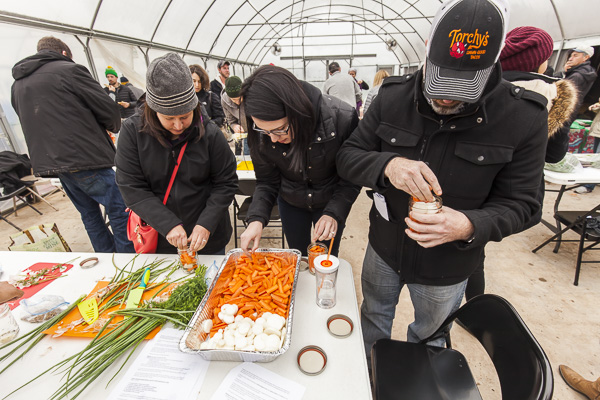 Pickling Workshop in our Greenhouse. Keep your eyes peeled for our 2017 Spring Event Calendar! Photo by Scott David Gordon.
Pickling Workshop in our Greenhouse. Keep your eyes peeled for our 2017 Spring Event Calendar! Photo by Scott David Gordon.
Asian-inspired Pickled Carrots Recipe by Kate Payne
1. Place 6 half-pint (8oz) jars in your canner pot, cover to just below the rims with water and bring to a boil.
2. While your water boils, wash and trim 2 lb carrots into preferred pickle sized pieces. Slice them in thin rounds for sandwiches or in sticks to munch right out of the jar or off the pickle platter.
3. Combine in a stainless steel saucepan 4 cups white wine or distilled white vinegar with 1 cup sugar and 3 Tbs salt. Dissolve sugar over low heat and then bring to a boil. Add directly to the pan: -2 Tbs minced ginger -2-4 fresh or dried Thai chiles, chopped roughly
4.Prepare your lids by placing them in water in a small saucepan. Don’t turn them on to simmer just yet. Keep an eye on your brine, since you don’t want it to boil for an extended period of time. Turn off heat when it reaches a boil.
5. Pull jars from canner pot and place 2 black peppercorns and 1 green onion, slit lengthwise into each jar.
6. Pack your jars firmly with prepared carrots. Now is a good time to turn on the heat and allow your lids to simmer (not boil) in the small saucepan.
7. Pour hot brine and try to incorporate ginger and peppers evenly into the jars over the carrots, leaving 1/2-inch headspace, the distance between the brine and top of the rim. Use a chopstick or a bubbler to remove any air pockets from the jar. Wipe rims with dampened, clean cloth or paper towel. Seal with two-piece lids.
8. Process for 10 min in boiling water-bath.
9. Place the jars on a dish towel and allow to sit for a few hours-overnight. The lids will seal as the jars cool. Test the seal by pressing down on the lid. It should be sucked in tight and not pop. If any of the cans did not seal properly, you can still eat them! Just keep them refrigerated and use them first.
10. Let the carrots marinate for at least a week, but preferably two if you can wait that long! These will stay good in the fridge for months.
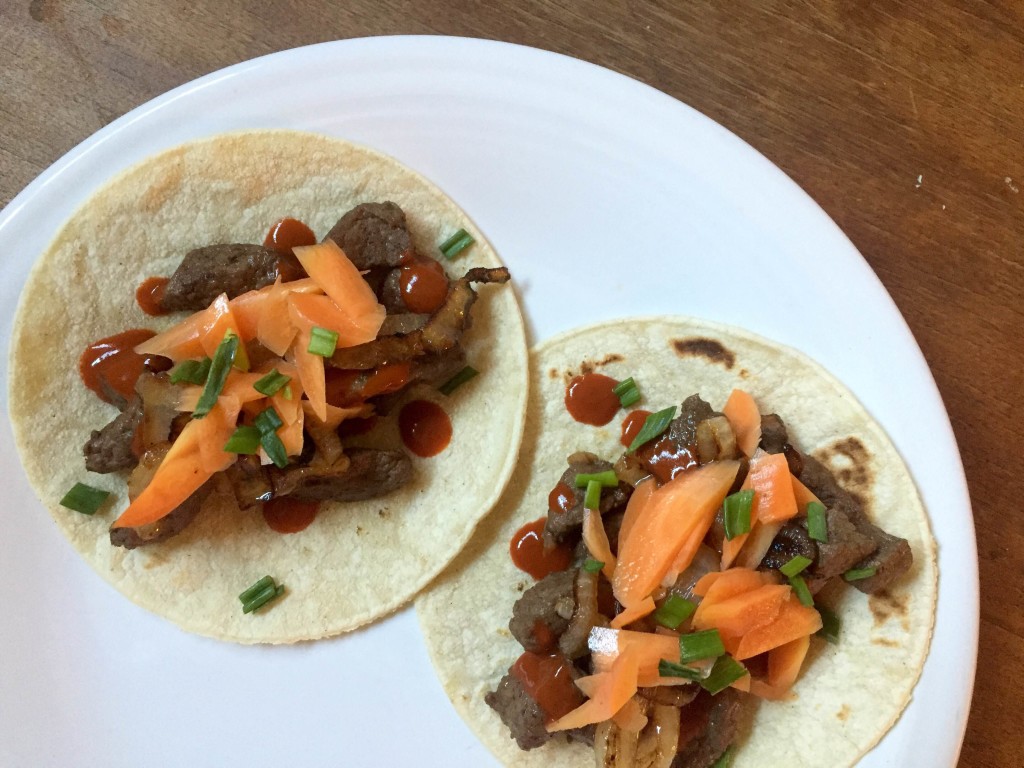
CSA BOX CONTENTS WEEK OF JAN 30TH
01/31/17 — Scott
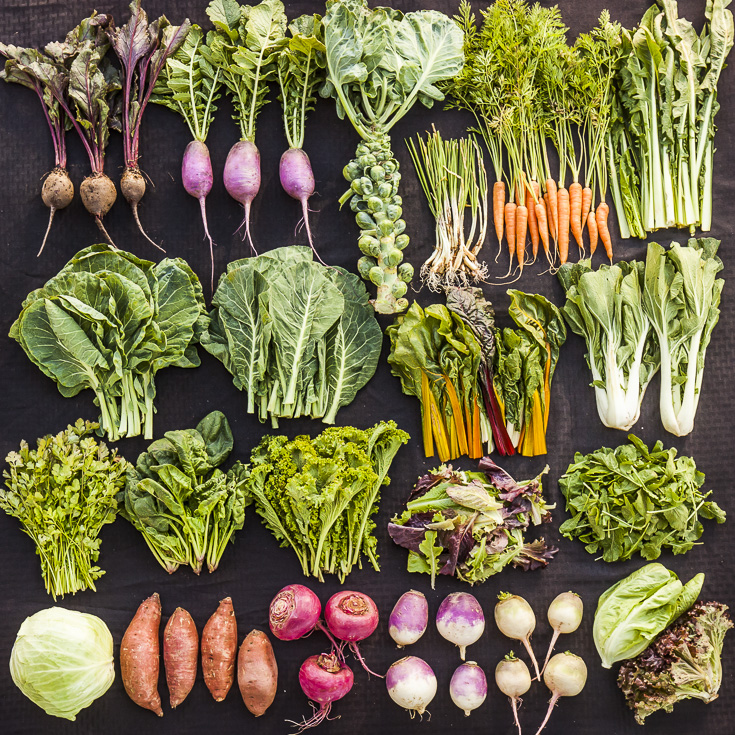 CSA Box Contents Week of Jan 30th
CSA Box Contents Week of Jan 30th
Large Box
Beet, Red
Brussels Sprouts
Cabbage, Green
Carrot, Orange
Greens, Collards
Greens, Kale, Curly
Greens, Salad Mix
Greens, Spinach
Herb, Parsley, Flat
Onion, Green
Potato, Sweet
Radish, Watermelon
Turnip, Purple Top
Beet, Red
Brussels Sprouts
Cabbage, Green
Carrot, Orange
Greens, Collards
Greens, Kale, Curly
Greens, Salad Mix
Greens, Spinach
Herb, Parsley, Flat
Onion, Green
Potato, Sweet
Radish, Watermelon
Turnip, Purple Top
Medium Box
Brussels Greens
Cabbage, Green
Carrot, Orange
Greens, Dandelion
Greens, Spinach
Herb, Parsley, Flat
Lettuce, Mixed head bag
Potato, Sweet
Radish, Purple Daikon
Turnip, Scarlett
Brussels Greens
Cabbage, Green
Carrot, Orange
Greens, Dandelion
Greens, Spinach
Herb, Parsley, Flat
Lettuce, Mixed head bag
Potato, Sweet
Radish, Purple Daikon
Turnip, Scarlett
Small Box
Beet, Red
Cabbage, Green
Carrot, Orange
Greens, Mustard
Greens, Spinach
Herb, Cilantro
Lettuce, Mixed head bag
Radish, Purple Daikon
Beet, Red
Cabbage, Green
Carrot, Orange
Greens, Mustard
Greens, Spinach
Herb, Cilantro
Lettuce, Mixed head bag
Radish, Purple Daikon
Individual Box
Beet, Red
Cabbage, Green
Carrot, Orange
Greens, Dandelion
Greens, Spinach
Turnip, Scarlett
Beet, Red
Cabbage, Green
Carrot, Orange
Greens, Dandelion
Greens, Spinach
Turnip, Scarlett
CSA BOX CONTENTS WEEK OF JAN 30TH
01/31/17 — Scott
 CSA Box Contents Week of Jan 30th
CSA Box Contents Week of Jan 30th
Medium Box
Beet, Red
Cabbage, Green
Carrot, Orange
Greens, Collards
Greens, Dandelion
Greens, Spinach
Herb, Cilantro
Lettuce, Mixed head bag
Onion, Green
Radish, Purple Daikon
Turnip, Purple Top






 0 ITEMS IN CART
0 ITEMS IN CART 


